IF YOU DON’T WANT TO READ MY RUMINATIONS ON THESE THREE BOOKS JUST JUMP TO THE BOTTOM AND CLICK THE LINK TO OUR SECURE ORDER FORM PAGE.
HERE IS OUR SPECIAL DEAL WITH THESE THREE EXCEPTIONAL TITLES
BUY ALL 3 – GET 30% OFF
BUY ANY 2 – GET 20% OFF
BUY JUST 1- GET 10% OFF
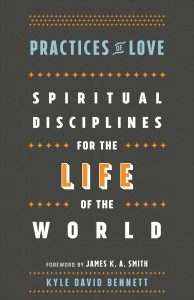 Practices of Love: Spiritual Disciplines for the Life of the World by Kyle David Bennett (Baker) $16.99
Practices of Love: Spiritual Disciplines for the Life of the World by Kyle David Bennett (Baker) $16.99
 Costly Love: The Way to True Unity for All the Followers of Jesus by John H. Armstrong (New City Press) $15.95
Costly Love: The Way to True Unity for All the Followers of Jesus by John H. Armstrong (New City Press) $15.95
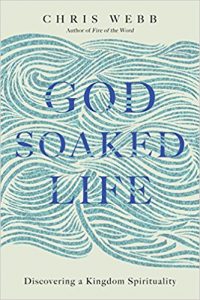 God Soaked Life: Discovering Kingdom Spirituality Chris Webb (IVP) $16.00
God Soaked Life: Discovering Kingdom Spirituality Chris Webb (IVP) $16.00
In our last BookNotes we mentioned why we love talking about books on integrating faith and work. Christian faith is all-encompassing, not just about going to church once a week, not just about worship or prayer or Bible reading, but is a full-orbed worldview and way of life. The Bible repeatedly reminds us that “The Earth is the Lords” and that God “so loved the world” and that Christ calls us to be “in the world” (if, granted, not “of” it.)
Some college students I was teaching this past summer teased me about getting a tattoo and I said if I ever did it would be some manifestation (following one of our daughters) of Romans 12:1-2 which invites us to fully-embodied worship in the world, non-conformed, with a renewed mind, in truly down-to-Earth spiritual service. And as anyone who knows Romans 12 knows, this includes showing love to others, even enemies. We show in our very bodies what God’s perfect will is, and it’s clear in Romans that that includes the call to love.
(And, as we will see in one of the books described below, Costly Love: The Way to True Unity for All the Followers of Jesus by John Armstrong, this is always and everywhere central to our faith and, yes, it is demanding; costly, even.)
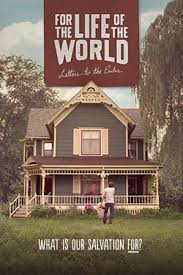 Talking religiously about down-to-Earth stuff like work (or gardening or art or science or sex or cooking or city planning) reminds us, in the immortal works of the hokey-pokey, that’s what it’s all about. We glorify God by bearing God’s image well in the world that is so loved. We are glad that the stunningly creative and colorful, fun and insightful, DVD curriculum about a sacramental worldview where all of life is to be explored called For the Life of the World asks what our salvation is for. The answer, alluding to Russian Orthodox theologian Alexander Schmemann’s book of the same title, is “for the life of the world.”
Talking religiously about down-to-Earth stuff like work (or gardening or art or science or sex or cooking or city planning) reminds us, in the immortal works of the hokey-pokey, that’s what it’s all about. We glorify God by bearing God’s image well in the world that is so loved. We are glad that the stunningly creative and colorful, fun and insightful, DVD curriculum about a sacramental worldview where all of life is to be explored called For the Life of the World asks what our salvation is for. The answer, alluding to Russian Orthodox theologian Alexander Schmemann’s book of the same title, is “for the life of the world.”
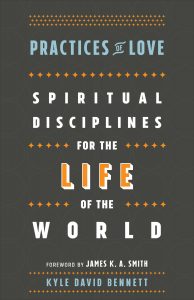 Practices of Love: Spiritual Disciplines for the Life of the World Kyle David Bennett (Baker) $16.99
Practices of Love: Spiritual Disciplines for the Life of the World Kyle David Bennett (Baker) $16.99
Kyle David Bennett ‘s brand new book has that same phrase in the sub-title, which is in a sideways kind of way, about practicing spiritual disciplines. It is a truly ground breaking book, or at least it seems to present itself that way. (He is not the first to explore the social and cultural implications of a rich interior life, but he does seem to be the first to explore it in the manner he does, working out an approach to spiritual practices, informed, it seems, by James K.A. Smith’s writing about loves and habits and practices. In this regard – although it is a very different sort of book – Practices of Love has certain similarities to the wonderful Liturgy of the Ordinary: Sacred Practices in Everyday Life by Tish Harrison Warren. If you liked that book – which we loved, as did many of our customers – you have to get this new one!)
Bennett bluntly reminds us that classic spiritual disciplines are not to be viewed like a drug to get us high (even if intimacy with God, union with Christ, and even spiritual ecstasy are commendable) but are better understood as training tools to help us love our neighbors. And that is both more urgent and a bit more complex than it sounds.
Drawing powerfully on Isaiah 58 — I assume you know it – Kyle Bennett boldly implies that if our spiritual formation disciplines don’t bear fruit in real love for others they are not only distorted but fraudulent. Isaiah 58 isn’t the only passage in the Scriptures that speaks of the hypocrisy of those who enjoy rigorous worship but are complicit in social injustice. Bennett comes on strong on a few pages here, reminding us that our lifestyles of consumerism may be vicious and that we often oppress others; he is more blunt than even some outspoken justice activists in saying this and I was almost taken aback in a few rebuking paragraphs. He takes it as a given that in our modern world we are implicated in unjust social structures, global economic systems, hurtful policies and even personal habits that are demeaning to others.  Can prayer and fasting and meditation and solitude and Sabbath-keeping equip us to live “in the world but not of it”? Can we be formed to be people who are more caring, more compassionate, more astute in our stewardship, more just in the actual things we do? That is the question; otherwise our spirituality will be indicted by the God of the law and the prophets, the God seen in the Christ who wants a seamless integrity flowing between Sunday and Monday, worship and work, prayer and politics, spirituality and society. (And we know that Jesus teaches that mercy and justice are “the weightier matters” as Matthew 23:23 puts it.) How to re-figure our views of and expectations about and actual experience of historic spiritual disciplines so we might be shaped into people with new desires and habits and ways of being in and for the world – that’s what Practices of Love: Spiritual Disciplines for the Life of the World is all about.
Can prayer and fasting and meditation and solitude and Sabbath-keeping equip us to live “in the world but not of it”? Can we be formed to be people who are more caring, more compassionate, more astute in our stewardship, more just in the actual things we do? That is the question; otherwise our spirituality will be indicted by the God of the law and the prophets, the God seen in the Christ who wants a seamless integrity flowing between Sunday and Monday, worship and work, prayer and politics, spirituality and society. (And we know that Jesus teaches that mercy and justice are “the weightier matters” as Matthew 23:23 puts it.) How to re-figure our views of and expectations about and actual experience of historic spiritual disciplines so we might be shaped into people with new desires and habits and ways of being in and for the world – that’s what Practices of Love: Spiritual Disciplines for the Life of the World is all about.
Bennett’s friend and mentor James K.A. Smith explains the theological substance of this book (naming Bennett’s influences in a way that Bennett himself does not) in a fabulously positive foreword:
Imagine a unique tree – one that grows in the soil of church fathers such as John Cassian and Gregory the Great, with roots that trace back to “old vines” in Abraham Kuyper and Soren Kierkegaard, and branches grafted from Dallas Willard and Richard Mouw. The fruit of such a tree is this book: a vision for how to do “life in the Spirit.”
Jamie then says something that nearly any thoughtful contemporary author would be proud to have said about his or her work:
If I could, I’d insert Practices of Love as volume 1.5 in my Cultural Liturgies trilogy.
Wow.
Smith continues:
Giants such as Dallas Willard and Richard Foster showed us the significance of the spiritual disciplines for sanctification: Jesus invites us to follow him by doing what he does not just thinking God’s thoughts after him. In Desiring the Kingdom (and You Are What You Love), I tried to provide an “ecclesiological assist” to their spiritual disciplines project, arguing for communal, gathered practices of worship as the hub for those other spiritual disciplines – that sacramental worship is the heart of discipleship. But in Practices of Love, Kyle Bennett expands the frame and shows us another part of the picture: all these disciplines are undertaken not just for our own relationship to God but also as a way to love our neighbor.
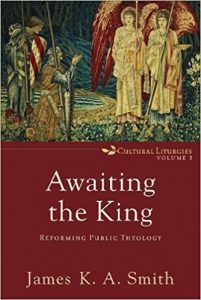 [An aside: the third volume of this magisterial, pioneering, much-discussed Cultural Liturgies trilogy by James K.A. Smith, Awaiting the King: Reforming Public Theology, will be out this November. I’ve been working through an advance version of the manuscript – yes, I do love this part of my job, thank you very much – and you can PRE-ORDER it at 20% off from us if you’d like. It follows the influential and much-discussed Desiring the Kingdom and Imagining the Kingdom and for a while had the tentative title Embodying the Kingdom. The official title now is Awaiting the King. It is very much about public theology. No wonder he likes Kyle David Bennett’s little book.]
[An aside: the third volume of this magisterial, pioneering, much-discussed Cultural Liturgies trilogy by James K.A. Smith, Awaiting the King: Reforming Public Theology, will be out this November. I’ve been working through an advance version of the manuscript – yes, I do love this part of my job, thank you very much – and you can PRE-ORDER it at 20% off from us if you’d like. It follows the influential and much-discussed Desiring the Kingdom and Imagining the Kingdom and for a while had the tentative title Embodying the Kingdom. The official title now is Awaiting the King. It is very much about public theology. No wonder he likes Kyle David Bennett’s little book.]
Bennett, like Smith, is a philosophy prof with a PhD. For those few among our readership that would remember, he did his undergrad work at Geneva College under the late, beloved philosophy professor Dr. Byron Bitar, who, alongside the “every square inch being redeemed” worldview of the Dutchman Abraham Kuyper gave him a love for the Dane, Soren Kierkegaard. In fact, some will notice that Bennett’s book has a title close to Kierkegaard’s famous Works of Love.
There are indications in the book, easy to read as it is, that Bennett is pretty philosophically minded, and it makes the book very interesting: he asks what things actually mean, what they should look like, how they fit together, how they work. He asks this about spiritual disciplines – what’s really going on when we fast or feast? what is the relationship between solitude and socializing? how does meditation help us prevent mal-formed thinking? what really is silence? what is the point of work? Without being scholarly or arcane he asks pretty foundational questions and this is good; rare, even.
 Kyle is obviously a gifted teacher, too, so he introduces useful words to help us further understand our mal-formed ways and to think and speak better about what others might call virtues and vices. For instance, in a section on fasting and food he not only talks about our “tummies” but “gormandization” which is another word for gluttonous eating. He also talks about “miserly” eating, which is a helpful way to think about certain distorted practices. He is a thinker, a teacher, and has a colorful, practical, even humorous side.
Kyle is obviously a gifted teacher, too, so he introduces useful words to help us further understand our mal-formed ways and to think and speak better about what others might call virtues and vices. For instance, in a section on fasting and food he not only talks about our “tummies” but “gormandization” which is another word for gluttonous eating. He also talks about “miserly” eating, which is a helpful way to think about certain distorted practices. He is a thinker, a teacher, and has a colorful, practical, even humorous side.
And he tells some really entertaining (admittedly brief) stories of philosophers, explaining cool stuff about how people thought Diogenes was a mad-man because he wanted to live a better quality (and less materialistic) life. He tells some informative bits about Socrates’ life, quotes Thomas Aquinas and, in a footnote, at least, cites postmodern philosopher Merleau-Ponty and an often-repeated line from Simone Weil. He’s a smart dude.
But don’t let this propensity to introduce some colorful vocabulary and quote heady scholars and a few big words fool you. In fact, Jamie Smith tells us not to worry:
Bennett’s lively prose and passionate verve will make you forget every caricature of the tweedy, elbow-patched philosopher. This is feisty Christian thinking with wit and wisdom and both eyes fixed squarely on the nitty-gritty realities of the proverbial ‘real world.’ Above all, this book is a thoughtful invitation to live like the new creatures that we are.
Smith could have pushed this point more: Kyle really, really is down-to-Earth, in a blue-collar everyman/everywoman kind of way. He talks about a fight he had with his wife, describes how he felt as a youth when his dad’s dad was killed in a car wreck, mentions often his love of basketball and Little League baseball, even counsels about how to better use time in the bathroom. (I know, you didn’t see that coming.) And he quotes movies – and not just high-brow ones, either. (He mentioned Elf! He mentioned Elf!) He quotes rural Wendell Berry novels and Eric Schlosser’s Fast Food Nation. He draws on the children’s books of Roger Hargreaves, like Little Miss Chatterbox. It isn’t every book that has a heavy line from Nicholas Wolterstorff about the relationship of justice and liturgy and a long footnote about Reformed theologian Herman Bavinck even as he is talking about TV shows like the British detective drama Luther and the intriguing question his daughter asked of what animal is the laziest of all. He encourages us to love our neighbors in the “itty bitty” things and asks how we feel when we “veg out” all weekend. He talks about working (not very successfully) as a bricklayer and having a crummy time working at “slapping meat on stale bread” at Subway.
So, again, passionate and broad-minded and fun-to-read and down-to Earth raw as it is, Practices of Love is asking readers to rethink our assumptions about spirituality. Faith-formation doesn’t just happen in church and it just doesn’t happen in quietude and daily devotional times. In fact, he wants to see all of life as deeply spiritual, all human endeavors as related. Spiritual disciplines aren’t to be compartmentalized as discreet activities, really, since all that we do is spiritual (see — I started off with that Romans 12:1 verse for a reason! In a way, this book is asking what does spirituality look like if Romans 12:1 about all of life, what Eugene Peterson calls “our everyday walking around life” being worship is really true.)
Bennett’s approach assumes a view of the human person that is obviously embodied, cultural, social, and multi-faceted and that all the dimensions of our lives – feeling, thinking, spending, consuming, talking, working, resting, and the like – are all uniquely unfolded before God. (He even has a few illustrations making the point.) We should not consider spiritual disciplines as some eccentric, monkish formational habits for the super-pious or introverts who just want to get away to work on their so-called “spiritual life.” Our methods of coming more deeply to know God are embodied in various dimensions of our God-ordained creatureliness.
In fact, the book challenges what most of us think about the practices of spiritual disciplines because he insists (over and over) that they are not something other than what we ordinarily do as humans. It becomes a refrain that we aren’t being invited to do new or different things, but to do ordinary things differently. We are mal-formed in each side of life and we need to be re-formed, re-calibrated, re-directed away from self and idols and towards love of others. In this approach we don’t so much adopt esoteric spiritual techniques to gain spiritual feelings but just enter into ordinary life in a new way, inspired by the transformed heart and habits nurtured within us, making us more Christ-like. With attentive practice, the image of the Triune God more powerfully is reflected in our walk through the world. Bennett implies that the early church fathers and mothers knew this – he avoids those mystics that focused on esoteric encounters or who sought after ecstasy — and that we can take their ancient pastoral advice to heart, even in our modern times. For instance, he writes, after a clever string of apparent differences between a modern and an ancient person,
What hath fourth-century Egypt to do with twenty-first century El Paso? Our lives may take different shapes and twists and turns but the cashier and the cenobite, the hedge fund investor and the hermit, the nun and the nurse are not so different.
After all, the commonplace human experiences of the ancients – their joys and temptations – are similar to ours. Bennett continues,
Like them, we do basic, ordinary activities every day. We get dressed, we buy things and take them home, we think, we eat, we hang out with friends, we talk (a lot), we work (a lot), and we rest.
In fact, he uses some version of a long phrase several times (and as the chapters unfold you see why) to explore these universal human experiences. He writes about how we all think, eat, socialize, talk, own things, work and rest. Each of these things can be transformed into acts of true love and grace as they are infused with new spiritual energy and virtue. For instance, the discipline of practicing silence helps us speak better; the ethic of service infuses how we work; the attitudes of simplicity helps us steward better those things we do own, fasting helps us feast well. You get the picture, I’m sure, but he helps you connect the dots. The helpful insight he has as we learn about this is remarkable.
I suspect that if you are at all like me, you will find some things to disagree with in this provocative book. A few sentences made me stop reading to ponder why a word was chosen or an attitude conveyed. I frankly think that some of it might have been edited a bit differently – I’m sure when he talks about the public square and the common good and mentions “blankets to be shared in common” he doesn’t mean what is sounds like. And why sound so glib in saying “Dying for another person is quite easy compared to living for another person.” An easy martyrdom? Weird.
As much as I agree with the stellar blurbs on the back – from remarkably thoughtful folks like Dennis Ockholm, John Wilson, Rebecca Konynkyk DeYoung, Vincent Bacote, and Gideon Strauss – I need to struggle more with the first few chapters where he doesn’t offer the sort of clear definitions that I wished for. I found his logic a bit convoluted, even though some of the writing was powerful. I really like his energy and all the major points he makes. But I really have to ponder his meaning a bit more.
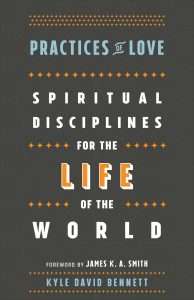 The heart of the book is comprised of a set of chapters each showing how a certain spiritual discipline can reform our habits and practices in that side of life (again, meditation helps us think, solitude helps us socialize, and the like.) These are brilliant, wise, curious, fascinating, each making the case that spiritual formation is about love. He reminds us in creative and compelling ways that while there is a “vertical” dimension to spiritual disciplines, we should explore with equal vigor the “horizontal” or “sideways” implications of how our spirituality shapes how we relate to others, from strangers and neighbors to co-workers and enemies. In this he is not dissimilar to others who have invited us to find God in the ordinary, to consider uniquely Christian practices, doing typically human endeavors in distinctively Christian ways, being intentional about how they help build a better world by loving others properly. As David Naugle puts it in his brilliant book, we need Reordered Loves, Reordered Lives.
The heart of the book is comprised of a set of chapters each showing how a certain spiritual discipline can reform our habits and practices in that side of life (again, meditation helps us think, solitude helps us socialize, and the like.) These are brilliant, wise, curious, fascinating, each making the case that spiritual formation is about love. He reminds us in creative and compelling ways that while there is a “vertical” dimension to spiritual disciplines, we should explore with equal vigor the “horizontal” or “sideways” implications of how our spirituality shapes how we relate to others, from strangers and neighbors to co-workers and enemies. In this he is not dissimilar to others who have invited us to find God in the ordinary, to consider uniquely Christian practices, doing typically human endeavors in distinctively Christian ways, being intentional about how they help build a better world by loving others properly. As David Naugle puts it in his brilliant book, we need Reordered Loves, Reordered Lives.
Or as John Ortberg writes in The Life You Always Wanted, spiritual training through contemplative discipline isn’t about our (so-called) “spiritual life” but is just about our life. Our real world life.
But yet, as I say, I have to ponder more about what Bennett really means as he conflates spiritual disciplines and Christianly animated human practices.
If he had consistently used the language of how our spiritual disciplines – fasting, practicing times of silence, meditation, worship, and the like – shapes and fuels and reforms our ordinary activities of daily living, then I’d fully understand and would offer an easy “Amen!”
But he only puts it that way some of the time. More often (especially in the first few chapters) he says it is not that way at all: the spiritual disciplines are not discrete activities (that have an impact upon other things we do) but are disclosed within the ordinary things we do themselves. I suspect he is trying to give some nod to the brilliant chapter of Al Wolter’s seminal Creation Regained that differentiates between “structure and direction.” He surely wants to offer a non-dualistic view of spirituality — there is no “sacred” part that “informs” our “secular” activities. So it isn’t that we (first) pray for inner guidance, say, and then we vote or work well; we don’t sit in solitude and then go out and socialize better, but, rather, he suggests that our prayerfulness is expressed in voting or working justly and our inner strength of solitude is practiced and nurtured as we love others well. (This curious resistance to conventional approaches to the spiritual disciplines is suggested in the very first page when he tells a story of talking a guy out of fasting.) Bennett really is offering a new vision of spiritual disciplines, it seems to me, even if he seems less than consistent in how he explains it. Anybody interested in this field or who has been involved in spiritual formation projects or spiritual direction really should ponder this book.
Of course, I appreciate any move towards integrated and seamless coherence, practicing the presence of God in the mundane and all, but it still seems to me that he minimizes – or just doesn’t concede — that we do need to do certain disciplines, alone, in a point in time. (We practice scales, sometimes, and we perform concertos, sometimes, even though, technically, both are playing the instrument, for real.) Sure my prayerfulness follows me throughout the day, but only if I have actually prayed. My learning about silence helps me be a better listener to others, but only if I’ve actually spent some real time working on the habits of keeping quiet. In other words, I think Kyle is wrong about the spiritual disciplines just being ordinary life done “in the Spirit” and re-formed. I think those are the results or fruit of practicing conventionally understood spiritual disciplines. Richard Foster – just to name one classic writer – described spiritual disciplines (in his classic Celebration of Discipline) under the rubric of those that were directed God-ward, those that were centered inward, and those that moved us outward. New ways of actual living for the sake of others, including the poor and oppressed and the Earth itself, is certainly central to all of Foster’s contemplative writing.
In insisting that spirituality is about formation for life, It’s not like Bennett is saying something fully novel – Ruth Haley Barton, James Bryan Smith, David Benner, Jan Johnson, Henri Nouwen, Richard Foster, Thomas Merton, Marlena Graves, Richard Rohr, Donald Whitney, Gary Thomas, Joan Chittister, Ronald Rolheiser, Gordon Smith, Marjorie Thompson, Adele Ahlberg Calhoun, Robert Mulholland, Howard Thurman, James Houston, Eugene Peterson, and nearly any other respected spiritual writer these days insists that our deep experience of God results in new ways of being in the world, attentive to God’s creation and equipped to be passionate agents of social change. (I thought of of this, I must say, when early in the book Bennett caricatured one who does spiritual disciplines in some sort of self-pleasing, self-absorbed gnosticism, and, although I’ve mocked such straw men myself probably more than he has, it didn’t ring quite true. Nobody I know well approaches spirituality in such utterly interior, selfish ways and few contemplative authors or spiritual directors guide others in such inappropriate ways.)
That is, Bennett is adding a good voice — admittedly construed in some pretty interesting ways — to the on-going conversation about spiritual formation and an intregal way of responsible living before God in the real world, accompanied by Spirit. He can take his place in this on-going conversation, but he isn’t utterly novel.
Which brings me to a final small critique of Bennett’s Practices of Love. I noted that he is bold in citing Isaiah 58 and insisting that the Bible calls us love our neighbors in ways that are concrete, seeking justice, resisting violence, being agents of reconciliation and the like. He offers powerful cultural criticism and incisive prophetic denunciations of the idols of the age. But yet, as much as he brings us to the point of seeing spiritual formation as the fuel to fire our love for others, as much as he wants us to pursue a life with God that has social implications, he doesn’t give many pointers about social and political change.
He cites the Biblical material about justice, he cares for the poor, and tells us to share our food; he gives obvious advice like how we should visit shut ins with a good meal and how we should have integrity at work and how our buying habits should be more conscientious. But at some point we have to dig a bit deeper and if our dispositions have been changed and we 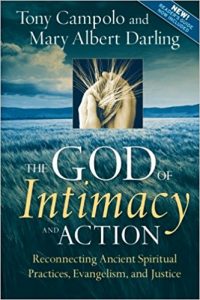
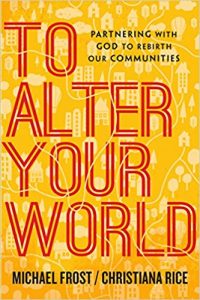 truly “desire the Kingdom” and want to be used by God to bring help and restoration to the poor and the Earth itself, we have to work out ways to shop ethically and invest in local businesses, support nonviolent start-ups, resist the military industrial complex, alter our energy usage, resisting complicity in the principalities and powers that so damage our commonwealth. Perhaps I was hoping for some engagement with the kind of piety expressed so beautifully in The God of Intimacy and Action: Reconnection Ancient Spiritual Practice, Evangelism and Justice by Tony Campolo and Mary Albert Darling and to connect with the missional energy of books like To Alter Your World: Partnering with God to Rebirth Our Communities by Michael Frost and Christiana Rice.
truly “desire the Kingdom” and want to be used by God to bring help and restoration to the poor and the Earth itself, we have to work out ways to shop ethically and invest in local businesses, support nonviolent start-ups, resist the military industrial complex, alter our energy usage, resisting complicity in the principalities and powers that so damage our commonwealth. Perhaps I was hoping for some engagement with the kind of piety expressed so beautifully in The God of Intimacy and Action: Reconnection Ancient Spiritual Practice, Evangelism and Justice by Tony Campolo and Mary Albert Darling and to connect with the missional energy of books like To Alter Your World: Partnering with God to Rebirth Our Communities by Michael Frost and Christiana Rice.
I know the heart of this book is to re-construe how we think about spirituality and to particularly show the connections between spiritual practices that can transform our daily 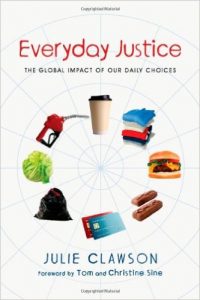 habits. But if these ordinary habits are going to be reformed for the purposes Kyle says he wants — love and mercy and stewardship and public justice — it would be helpful to list practical titles that show what it looks like and how to navigate the contemporary counter-pressures once one’s habits are newly re-directed towards love and service and the work of shalom. I just itched for some citation of books such as Free: Spending Your Time and Money on What Matters Most by Mark & Lisa Scandrette or Money Enough: Everyday Practices for Living Faithfully in the Global Economy by Douglas Hicks or Julie Clawson’s informative, faith-based buyer’s guide, Everyday Justice: The Global Impact of Our Daily Choices. I think we would all do well to revisit Ron Sider’s Rich Christians in an Age of Hunger if we want to think about the spirituality of loving our neighbors in this needy, needy world.
habits. But if these ordinary habits are going to be reformed for the purposes Kyle says he wants — love and mercy and stewardship and public justice — it would be helpful to list practical titles that show what it looks like and how to navigate the contemporary counter-pressures once one’s habits are newly re-directed towards love and service and the work of shalom. I just itched for some citation of books such as Free: Spending Your Time and Money on What Matters Most by Mark & Lisa Scandrette or Money Enough: Everyday Practices for Living Faithfully in the Global Economy by Douglas Hicks or Julie Clawson’s informative, faith-based buyer’s guide, Everyday Justice: The Global Impact of Our Daily Choices. I think we would all do well to revisit Ron Sider’s Rich Christians in an Age of Hunger if we want to think about the spirituality of loving our neighbors in this needy, needy world.
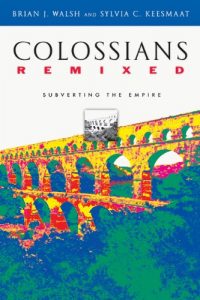 I think of the stunning ways Brian Walsh and Sylvia Keesmaat creatively explore resisting the idols of the culture and the forces of destruction in their close contemporary reading of Colossians in Colossians Remixed: Subverting the Empire and how Richard Rohr teaches about the relationship of prayer and political protest in A Lever and a Place to Stand. Heck, Martin Luther King has a book called Strength To Love that could have been held up as a useful guide.
I think of the stunning ways Brian Walsh and Sylvia Keesmaat creatively explore resisting the idols of the culture and the forces of destruction in their close contemporary reading of Colossians in Colossians Remixed: Subverting the Empire and how Richard Rohr teaches about the relationship of prayer and political protest in A Lever and a Place to Stand. Heck, Martin Luther King has a book called Strength To Love that could have been held up as a useful guide.
And as most BookNotes reader’s know, we think Steve Garber’s mature and eloquent book Visions of Vocation: Common Grace for the Common Good asks how we can “for love’s sake” live in the messy world, implicated as we are, showing God’s faithful, covenantal love for the world. I see some of Garber’s deep insights in Kyle’s approach, in fact. I think you might, too.
Perhaps I am stretching a bit here, but it might have been good to have some engagement with something like Parker Palmer’s Healing the Heart of Democracy: The Courage to Create a 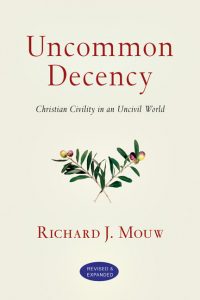 Politics Worthy of the Human Spirit which, in a spirit of gentleness and grace, invites citizens to deep conversations about the common good and the reclamation of local citizenship. If we are shaped into practices that guide our hearts to want to care for the common good, then how do we express that love in our contested political spaces? Geesh, you’d think Kyle at least would have given a shout-out to one of the lovely little books of another of his mentors, Dr. Richard Mouw, who wrote so wisely about the inner disposition of civility that could make us better neighbors and citizens and conversation partners in society. Bennett’s Practices of Love: Spiritual Disciplines for the Life of the World seems to be moving in the same direction as Mouw’s Uncommon Decency: Christian Civility in an Uncivil World.
Politics Worthy of the Human Spirit which, in a spirit of gentleness and grace, invites citizens to deep conversations about the common good and the reclamation of local citizenship. If we are shaped into practices that guide our hearts to want to care for the common good, then how do we express that love in our contested political spaces? Geesh, you’d think Kyle at least would have given a shout-out to one of the lovely little books of another of his mentors, Dr. Richard Mouw, who wrote so wisely about the inner disposition of civility that could make us better neighbors and citizens and conversation partners in society. Bennett’s Practices of Love: Spiritual Disciplines for the Life of the World seems to be moving in the same direction as Mouw’s Uncommon Decency: Christian Civility in an Uncivil World.
I hope Practices of Love make us better citizens for the life of the world, better neighbors to the immigrant and the outcast, more loving and compassionate as we contend with those with whom we disagree, so full of Christ-shaped love that we are intentional about our social practices, resisting the idols of the age, working for fair public policies for the hungry and needful and excluded. But if it does help us in this way — what next? I’d say we will need books like the great anthology about all sorts of social issues edited by David Gushee, A New Evangelical Manifesto: A Kingdom Vision for the Common Good or the inspiring Live Like You Give a Damn: Join the Changing Making Celebration by our old friend Tom Sine or maybe the brand new The Power of Proximity: Moving Beyond Awareness to Action by Michelle Ferrigno Warren. As we practice “practices of love” and see our formation “for the life of the world” it will surely lead us to grapple with what it means to be a peacemaker in these hard times. Perhaps a great follow-up to these three books I’m reviewing in this BookNotes column will be the brand new Mending the Divides: Creative Love in a Conflicted World by Jon Huckins & Jer Swigart of The Global Immersion Project, a peacemaking training organization. Jon is the author of Thin Places that — not unlike Bennett — ruminates on spiritual practices and postures that can create missional communities that care for the world.
To the book’s great credit, every chapter in Practices of Love has a prayer included at the end – meaty and beautiful and formative – and a bunch of “side steps” (a phrase playing off his horizontal or “sideways” look at the disciplines. Cool, eh?) These are practical steps to take, things to do, ways to work out these generative insights about the relationship of a certain spiritual practice and renewed, restorative, daily living. If we danced into even some of those steps our lives would be richer, our world would be served, and God – just like in the promises at the end of Isaiah 58 — would be near and present to us. If and when people of faith are better known for presenting a new reconciled way of life in and for the world, based on this rich sort of Christ-like maturity and compassionate character in service of the broken world, as described by Kyle David Bennett, God will be glorified (Matthew 5:16, Ephesians 2:10) and this book will be part of the story. It is very highly recommended, with much hope.

TWO MORE EXCELLENT NEW BOOKS THAT SHOULD BE READ ALONG-SIDE PRACTICES OF LOVE, ALSO ON SALE NOW
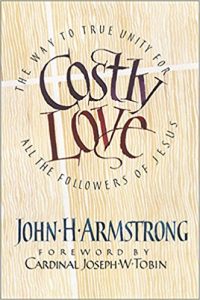 Costly Love: The Way to True Unity for All the Followers of Jesus John H. Armstrong (New City Press) $15.95 I will tell you more about this later, I hope, but I truly wanted to list it here. This is one of the most provocative and thoughtful and thorough studies of the Biblical teaching about love I have yet seen. It is serious and well researched, drawing on writers both ancient and new, from across the theological spectrum. John is a big supporter of our bookish effort, an old Wheaton College grad, a former super-strict Puritan-esque Reformed scholar and revival preacher. I liked him even when he came on a bit too stridently with his overly confident theology. Since those days, John has shifted considerably – in part motivated by studying and taking to heart a profound essay on the rightness of ecumenism by conservative Anglican J. I. Packer — and wrote one of my all-time favorite studies of this topic, Your Church Is Too Small: Why Unity in Christ’s Mission Is Vital to the Future of the Church. Under the auspices of his ACT3 Network, John has been advocating, preaching, praying, writing, and networking others for more gracious and fruitful inter-denominational conversations. It is rare to find one with such conventionally evangelical theology so robustly engaged in collegial conversations and partnerships with Roman Catholics and Episcopalians, with Pentecostals and the Eastern Orthodox, with Mennonites and Methodists. John knows all kinds of people and meets with everybody, even though it sometimes breaks his heart that others don’t share his enthusiasm for learning to love our brothers and sisters in Christ, regardless of denominational affiliation or political/cultural tendencies.
Costly Love: The Way to True Unity for All the Followers of Jesus John H. Armstrong (New City Press) $15.95 I will tell you more about this later, I hope, but I truly wanted to list it here. This is one of the most provocative and thoughtful and thorough studies of the Biblical teaching about love I have yet seen. It is serious and well researched, drawing on writers both ancient and new, from across the theological spectrum. John is a big supporter of our bookish effort, an old Wheaton College grad, a former super-strict Puritan-esque Reformed scholar and revival preacher. I liked him even when he came on a bit too stridently with his overly confident theology. Since those days, John has shifted considerably – in part motivated by studying and taking to heart a profound essay on the rightness of ecumenism by conservative Anglican J. I. Packer — and wrote one of my all-time favorite studies of this topic, Your Church Is Too Small: Why Unity in Christ’s Mission Is Vital to the Future of the Church. Under the auspices of his ACT3 Network, John has been advocating, preaching, praying, writing, and networking others for more gracious and fruitful inter-denominational conversations. It is rare to find one with such conventionally evangelical theology so robustly engaged in collegial conversations and partnerships with Roman Catholics and Episcopalians, with Pentecostals and the Eastern Orthodox, with Mennonites and Methodists. John knows all kinds of people and meets with everybody, even though it sometimes breaks his heart that others don’t share his enthusiasm for learning to love our brothers and sisters in Christ, regardless of denominational affiliation or political/cultural tendencies.
Such relationships has softened him, so to speak (or toughed him up, since he no longer only hangs out with those like himself.) He has learned to be civil and gracious and recognize the good stuff God is doing in communions and ministries unlike his own.
It is a longer story to share another time but John has come to very deeply understand – he feels it in his bones as much as anyone I know – that for Christian community to develop and for something even approximating Godly unity (of the sort he calls “missional ecumenism”) will take a lot of healing, a lot of honest conversations, a lot of humility, a lot of grace extended. We desperately need to understand, encounter, and manifest God’s love. John 13 couldn’t be clearer about the urgency of Christians loving others – see Francis Schaeffer’s lovely little The Mark of the Christian or Art Lindsley’s Love: The Final Apologetic for starters on this extraordinary truth – but it seems we are ill-equipped to live out that kind of Christian love for one another. And, oddly, those who seem to know the most about the Bible and about theology are often themselves the most stubborn and hurtful when it comes to resisting efforts to tear down the dividing walls.
Surely the answer to this broken situation, this tragic violation of the new commandment of John 13:34, is love. God is love, after all. As Kyle David Bennett so creatively spells out in his book Practices of Love, our spirituality must yield the fruit of love. Out of Armstrong’s own frustrations and eagerness to press towards greater conversations and shared ministry, he set out to study love. It is the essential mark of the Christian disciple, of course, so it is important for any and all of us. But it was especially urgent for him and his new call into ecumenical, missional fidelity. It seems odd that so little of much depth has been written directly on this topic.
And so, Costly Love: The Way to True Unity for All the Followers of Jesus is the fruit of several years of study and several years of writing. John is a studious scholar, and a fine, upbeat writer. This book is – I don’t say this cheaply – a true labor of love.
I had the great privilege of writing an early endorsement of Costly Love, and I hope to describe it for you in greater detail, later. For now, please know of its good back-story, its semi-scholarly tone, its great, great worth. I hope you consider buying this from us – it is published by a fine Roman Catholic publisher, and the beloved Cardinal Joseph W. Tobin wrote the foreword. (It’s not every day that an evangelical like John ends up on a Roman Catholic press, but that, too, is a sign, it seems of how special this book is and what it represents.) This book needs to be better known in our (mostly Protestant) circles and I commend it to you.
There are many solid endorsements of this book from a wide variety of important women and men, theological and church voices. For instance:
Good books make you think, great books provoke you to change John Armstrong has given us a great book that has the potential to transform churches and leaders. Costly Love presents a vision of life that is biblically faithful and consistently congruent with reality. This is as timely a work on this subject as any I have read. This is surely a book we all need for our divided times. Rev. Tyler Johnson, Lead Pastor, Redemption Church, Phoenix, AZ
Love is the best thing we have – and yet we struggle to describe it, let alone live into it. That’s because love is a cross and an empty tomb; love is knitting the church back together and saving the world. John Armstrong is perfectly placed to write about love – with evangelical zeal, catholic wisdom, and erudition without obscurity. Dr. Jason Byassee, Vancouver School of Theology and Duke Divinity School
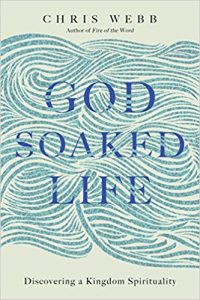 God Soaked Life: Discovering Kingdom Spirituality Chris Webb (IVP) $16.00 I can only hint about this now as I have not yet read it in full., but I am confident it fits in well with this column. In fact, I think it may be an absolutely perfect companion volume for Bennett’s Practices of Love as it ends up (and I suspect is pervaded by throughout) with a strong section on the politics of love. It draws on the literature and stories of those who have lived well in the public square inspired by deep spirituality and God-given love. In some ways it gives examples of the sorts of neighbor-loving, creation-caring, justice-seeking humble saints that Bennett’s construal of spiritual practices hope to evoke.
God Soaked Life: Discovering Kingdom Spirituality Chris Webb (IVP) $16.00 I can only hint about this now as I have not yet read it in full., but I am confident it fits in well with this column. In fact, I think it may be an absolutely perfect companion volume for Bennett’s Practices of Love as it ends up (and I suspect is pervaded by throughout) with a strong section on the politics of love. It draws on the literature and stories of those who have lived well in the public square inspired by deep spirituality and God-given love. In some ways it gives examples of the sorts of neighbor-loving, creation-caring, justice-seeking humble saints that Bennett’s construal of spiritual practices hope to evoke.
This final set of chapters in God Soaked Life, in fact, are vital, since this is a central part of the vision of “Kingdom spirituality” as described by Webb. That is, like with Bennett and Armstrong, above, we are called to live out daily lives of great love, shown forth in concrete practices and a lifestyle of compassion and grace. We are citizens of a Kingdom of Love, bearing the image of a God who is Love. Here, in fact, are the evocative final chapter titles in God Soaked Life all offered in this final section called “The Politics of Love.”
Against the Darkness
Glorious Possibilities
The Kingdom Today
There are seven such units in God Soaked Life with three chapters under each (and an “over to you” section which includes conversation questions, reflection pieces and other good stuff to process the material.) The sections include chapters about a “God Soaked Creation” and an invitation to life in God’s delight; there are moving chapters about “heart renewal” and it seems that Webb is particularly honest about our hurts, our brokenness and the need for what he calls “soul healing” with several such chapters on our hurting human condition. This leads to some good chapters on “Fearless Honesty” and then what it means to be “Close to the Father’s Heart.” These short chapters all look beautiful and rich — perhaps not uncommon insights, but really, really nice. Our journey to God needs these kinds of promptings and guides and I think even the discussion parts are themselves so very, very good. Webb is a very good writer and I personally look forward to reading this slowly (and putting it into conversation with Bennett, as well.)
Webb reminds us that spirituality isn’t a solo project and has several chapters under the heading “Creating Community” and, gladly, shows how all this is lived out in the quotidian, with chapters about attentiveness and “learning to see.” Yes, yes, God is in all things – Webb reminds us of beauty, wonder, joy, and the gospel-based redemption of all things! But there is this hard fact that we live in a damaged world; things are not as they are supposed to be. So we truly need God, we need community, we need eyes to see and then we need those final chapters, “The Politics of Love” because we must be agents of this God-drenched goodness into the world. We must “learn to love in gentleness” he writes, and I think as a Benedictine Anglican priest – and former president of the Richard Foster-founded Renovare USA – he knows what he’s talking about.
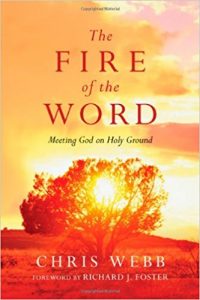 Do you know his previous book, The Fire of the Word: Meeting God on Holy Ground which was about reading the Bible with an eye to spiritual formation? In a way it was an extended introduction to lectio divina and was a beautiful, helpful book beloved by many of our customers. This brand new one similarly proclaims that God is near. It is “written with verve, depth, and uncontainable joy.” This invitation to “live in the reality of God’s presence in everyday lives” is so nice, and so needed.
Do you know his previous book, The Fire of the Word: Meeting God on Holy Ground which was about reading the Bible with an eye to spiritual formation? In a way it was an extended introduction to lectio divina and was a beautiful, helpful book beloved by many of our customers. This brand new one similarly proclaims that God is near. It is “written with verve, depth, and uncontainable joy.” This invitation to “live in the reality of God’s presence in everyday lives” is so nice, and so needed.
Barry Hill, an Anglican rector colleague of Webb’s in Leicester, UK, says:
Chris Webb models God’s beautiful call to grow as a disciple with our head and our heart, our whole bodies and our whole lives, without division or separation.
Gary Moon – director of the Dallas Willard Center at Westmont College – agrees, saying That God Soaked Life is “a beautifully written and immensely important book about living life with God.” He continues, saying it “sets aglow everyday life with the light of Kingdom living.”
Yep, that’s what love can do. Bennett, Armstrong and Webb can help you live love
REMEMBER OUR SPECIAL DEAL:
· BUY ALL 3 BOOKS GET 30% OFF
· BUY ANY 2 BOOKS GET 20% OFF
· BUY JUST 1 BOOK GET 10% OFF
BookNotes

order here
takes you to the secure Hearts & Minds order form page
just tell us what you want
inquire here
if you have questions or need more information
just ask us what you want to know
Hearts & Minds 234 East Main Street Dallastown, PA 17313
read@heartsandmindsbooks.com
717-246-3333

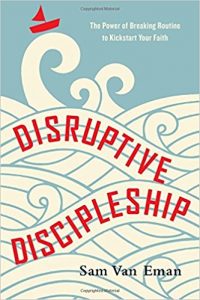 Disruptive Discipleship is about this exact thing, how we can encounter opportunities for change and growth – pressing on to Christian maturity – by creating experiences that stretch us, by entering into some intentional effort to experience some new things, or experience ordinary routines in some fresh ways. Disruption, at least the sort that is explored here, is a good thing – or it can be, if managed well. It isn’t rocket science, really, but Sam has been at this a long time, working for the Experiential Design (XD) team of the Coalition for Christian Outreach campus ministry, and has created outdoor adventures, wilderness experiences, mission trips, and other designed programs that heighten participants openness to growth. By studying managed risk, community building activities, and a thoughtful approach to enhanced, interactive learning, Sam has honed his extraordinary gifts in setting up and leading these kinds of events. Disruptive Discipleship tells some of those stories.
Disruptive Discipleship is about this exact thing, how we can encounter opportunities for change and growth – pressing on to Christian maturity – by creating experiences that stretch us, by entering into some intentional effort to experience some new things, or experience ordinary routines in some fresh ways. Disruption, at least the sort that is explored here, is a good thing – or it can be, if managed well. It isn’t rocket science, really, but Sam has been at this a long time, working for the Experiential Design (XD) team of the Coalition for Christian Outreach campus ministry, and has created outdoor adventures, wilderness experiences, mission trips, and other designed programs that heighten participants openness to growth. By studying managed risk, community building activities, and a thoughtful approach to enhanced, interactive learning, Sam has honed his extraordinary gifts in setting up and leading these kinds of events. Disruptive Discipleship tells some of those stories. A third thing to keep in mind about Disruptive Discipleship is that Sam is himself very vulnerable in telling stories of his own need for change in his own life. It isn’t all colorful narratives of dramatic mission trips or vivid wilderness adventures (although the caving story literally made my heart pound faster as I read it!) There are stories of serving the homeless and stories of rock climbing and back country hiking, but much of content is almost mundane, stories of giving up watching football on Sunday afternoons for a season, stories of helping his daughters learn to push themselves to hold their breath longer than they thought they could, examples of fairly common place stuff that can be marshaled for our spiritual growth. And he tells of some things of his own life – he was raised by a single mom in poverty and to this day struggles with certain issues (even needing to have a snack around at all times.) I’ve known Sam a long time, and knew much of this, but was deeply, deeply touched by his sharing so candidly about his own inner life, his fears and foibles. This is a good thing in a book, getting a glimpse into the real story of the author and I compliment him for it. You will, too.
A third thing to keep in mind about Disruptive Discipleship is that Sam is himself very vulnerable in telling stories of his own need for change in his own life. It isn’t all colorful narratives of dramatic mission trips or vivid wilderness adventures (although the caving story literally made my heart pound faster as I read it!) There are stories of serving the homeless and stories of rock climbing and back country hiking, but much of content is almost mundane, stories of giving up watching football on Sunday afternoons for a season, stories of helping his daughters learn to push themselves to hold their breath longer than they thought they could, examples of fairly common place stuff that can be marshaled for our spiritual growth. And he tells of some things of his own life – he was raised by a single mom in poverty and to this day struggles with certain issues (even needing to have a snack around at all times.) I’ve known Sam a long time, and knew much of this, but was deeply, deeply touched by his sharing so candidly about his own inner life, his fears and foibles. This is a good thing in a book, getting a glimpse into the real story of the author and I compliment him for it. You will, too. To help us realize out how anxiety- producing episodes (even minor ones, with low-levels of anxiety) can be a vehicle for growth, he talks about how he and his wife, Julie, worked at a Christian summer camp, serving as outdoor adventure coordinators. They took cabin counselors and campers hiking, biking, rock climbing, caving and such. Most camps do this – but what real transformation comes of it? Pondering this, they deepened the approach, which he describes like this:
To help us realize out how anxiety- producing episodes (even minor ones, with low-levels of anxiety) can be a vehicle for growth, he talks about how he and his wife, Julie, worked at a Christian summer camp, serving as outdoor adventure coordinators. They took cabin counselors and campers hiking, biking, rock climbing, caving and such. Most camps do this – but what real transformation comes of it? Pondering this, they deepened the approach, which he describes like this: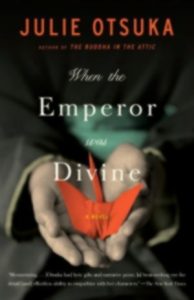 When the Emperor Was Divine Julie Otsuka (Anchor Books) $13.95 I know of a group of clergy that are reading this fairly short novel together so I thought I’d read along from a distance. I experienced it in one long sitting on a sunny Sunday afternoon and was truly, deeply captivated. One reviewer had written that “Otsuka’s novel grabs you with its first sentence and doesn’t release its grip until the last page… Her writing cuts like jagged glass.” It is about a Chinese American woman and her two children who are taken to an internment camp in 1942 – her husband was already taken to a prison, so we learn of him through his letters to the children. I have never read a book so terse and lean in its style, and, in any event, have never read anything on this topic. The reviewer from the Los Angeles Times said When the Emperor Was Divine is “a story that has more power than any other I have read about this time.”
When the Emperor Was Divine Julie Otsuka (Anchor Books) $13.95 I know of a group of clergy that are reading this fairly short novel together so I thought I’d read along from a distance. I experienced it in one long sitting on a sunny Sunday afternoon and was truly, deeply captivated. One reviewer had written that “Otsuka’s novel grabs you with its first sentence and doesn’t release its grip until the last page… Her writing cuts like jagged glass.” It is about a Chinese American woman and her two children who are taken to an internment camp in 1942 – her husband was already taken to a prison, so we learn of him through his letters to the children. I have never read a book so terse and lean in its style, and, in any event, have never read anything on this topic. The reviewer from the Los Angeles Times said When the Emperor Was Divine is “a story that has more power than any other I have read about this time.” 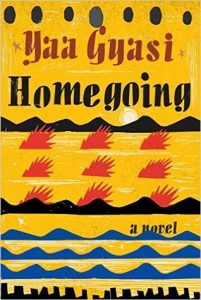 Homegoing Yaa Gyasi (Vintage) $16.00 This has been on my list for a while, and we’re glad it is out in paperback. Although the story starts in a slave market in eighteenth century Ghana, it follows two half-sisters whose lives are so very different, and it shows the parallel paths of these sisters and their descendants through eight generations – up through the Jazz Age in Harlem. The Washington Post called it “dazzling, devastating, truly captivating.” NPR said it “brims with compassion… Yaa Gyasi has given rare and heroic voice to the missing and suppressed.”
Homegoing Yaa Gyasi (Vintage) $16.00 This has been on my list for a while, and we’re glad it is out in paperback. Although the story starts in a slave market in eighteenth century Ghana, it follows two half-sisters whose lives are so very different, and it shows the parallel paths of these sisters and their descendants through eight generations – up through the Jazz Age in Harlem. The Washington Post called it “dazzling, devastating, truly captivating.” NPR said it “brims with compassion… Yaa Gyasi has given rare and heroic voice to the missing and suppressed.” 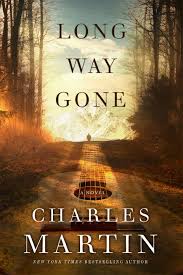 Long Way Gone Charles Martin (Thomas Nelson) $15.99 I don’t recall what small publishing house Martin was on when we first discovered his earthy prose years ago, but he has become a big name in inspirational fiction, doing good work usually set in the south. He has become a USA Today best seller and titles like When Crickets Cry and Chasing Fireflies are exceptional. This one is about a musician and singer-songwriter named Cooper O’Connor who “took everything his father held dear” and drove 1,200 miles to Nashville, “his life riding on a six-string guitar and the bold wager that he had talent.” I don’t know if it is fair to compare this to the country-music soap opera Nashville – which we loved, by the way -but it seems like that kind of story. It claims to be a radical retelling of the prodigal son story, taking us from tent revivals to the Ryman Auditorium and the broken relationship between a father and son.
Long Way Gone Charles Martin (Thomas Nelson) $15.99 I don’t recall what small publishing house Martin was on when we first discovered his earthy prose years ago, but he has become a big name in inspirational fiction, doing good work usually set in the south. He has become a USA Today best seller and titles like When Crickets Cry and Chasing Fireflies are exceptional. This one is about a musician and singer-songwriter named Cooper O’Connor who “took everything his father held dear” and drove 1,200 miles to Nashville, “his life riding on a six-string guitar and the bold wager that he had talent.” I don’t know if it is fair to compare this to the country-music soap opera Nashville – which we loved, by the way -but it seems like that kind of story. It claims to be a radical retelling of the prodigal son story, taking us from tent revivals to the Ryman Auditorium and the broken relationship between a father and son. 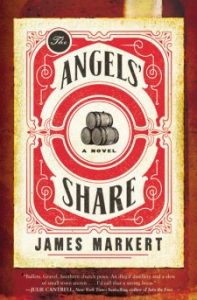 The Angels’ Share James Markert (Thomas Nelson) $15.99 Okay, speaking of guys who write well in the “Christian fiction” world, this new author is on to something pretty amazing. This is a story about an illegal whiskey distillery in Kentucky during the prohibition. And, it is full of mystery, including this: “Some believed he was the second coming of Christ. William wasn’t so sure. But when that drifter was buried next to the family distillery, everything changed.”
The Angels’ Share James Markert (Thomas Nelson) $15.99 Okay, speaking of guys who write well in the “Christian fiction” world, this new author is on to something pretty amazing. This is a story about an illegal whiskey distillery in Kentucky during the prohibition. And, it is full of mystery, including this: “Some believed he was the second coming of Christ. William wasn’t so sure. But when that drifter was buried next to the family distillery, everything changed.” FIVE BOOKS BY FREDRIK BACKMAN
FIVE BOOKS BY FREDRIK BACKMAN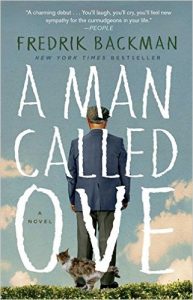 A Man Called Ove (Washington Square Press) $16.00 I suppose you should start here. I love this quote: “There are characters who amuse us, and stories that touch us. But this character and his story do even more: A Man Called Ove makes us think about who we are and how we want to live our lives. A Man Called Ove seems deceptively simple at the start, yet Frederik Backman packs a lifetime’s worth of hilarity and heartbreak into this novel. Even the most crusty curmudgeon will love Ove!”–Lois Leveen, author of Juliet’s Nurse and The Secrets of Mary Bowse.
A Man Called Ove (Washington Square Press) $16.00 I suppose you should start here. I love this quote: “There are characters who amuse us, and stories that touch us. But this character and his story do even more: A Man Called Ove makes us think about who we are and how we want to live our lives. A Man Called Ove seems deceptively simple at the start, yet Frederik Backman packs a lifetime’s worth of hilarity and heartbreak into this novel. Even the most crusty curmudgeon will love Ove!”–Lois Leveen, author of Juliet’s Nurse and The Secrets of Mary Bowse.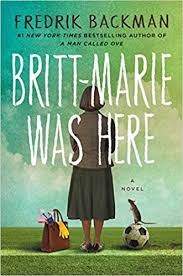 ere (Washington Square Press) $16.00 Here is how the publisher describes this good story:
ere (Washington Square Press) $16.00 Here is how the publisher describes this good story: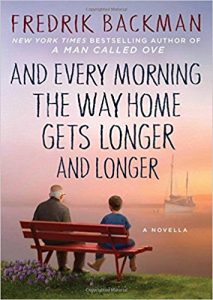 And Every Morning the Way Home Gets Longer and Longer: A Novella (Atria) $18.00 This short one is described as “an exquisitely moving portrait of an elderly man’s struggle to hold on to his most precious memories, and his family’s efforts to care for him even as they must find a way to let go.” In the book, the old man asks, as he sits in the square looking at a child, “Isn’t that the best of all life’s ages, an old man thinks as he looks at his grandchild, when a boy is just big enough to know how the world works but still young enough to refuse to accept it.”
And Every Morning the Way Home Gets Longer and Longer: A Novella (Atria) $18.00 This short one is described as “an exquisitely moving portrait of an elderly man’s struggle to hold on to his most precious memories, and his family’s efforts to care for him even as they must find a way to let go.” In the book, the old man asks, as he sits in the square looking at a child, “Isn’t that the best of all life’s ages, an old man thinks as he looks at his grandchild, when a boy is just big enough to know how the world works but still young enough to refuse to accept it.”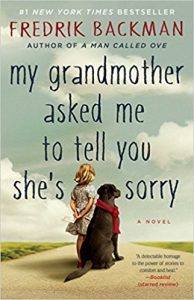 My Grandmother Asked Me to Tell You She’s Sorry (Washington Square Press) $16.00 And, here, yet another charming, warm-hearted novel from the author of the New York Times bestseller A Man Called Ove, translated from Norwegian.
My Grandmother Asked Me to Tell You She’s Sorry (Washington Square Press) $16.00 And, here, yet another charming, warm-hearted novel from the author of the New York Times bestseller A Man Called Ove, translated from Norwegian.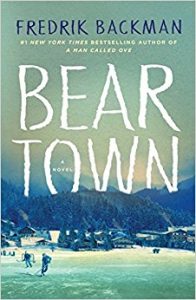 Beartown (Atria Books) $26.99 This is the most recent, the eagerly anticipated hefty hardcover. Beth loved it. Here is how the promo copy tells about it:
Beartown (Atria Books) $26.99 This is the most recent, the eagerly anticipated hefty hardcover. Beth loved it. Here is how the promo copy tells about it: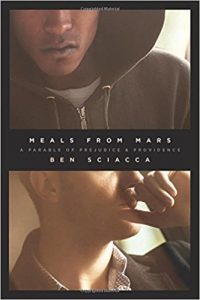 Meals From Mars: A Parable of Prejudice and Providence Ben Sciacca (Multnomah) $14.99 I held this high in front of 2000 college students last year after we heard challenging messages from hip hop artists and activists, LeCrae, Propaganda, and Sho Baraka. These hip hop stars brought solid Christian conviction about God’s work in the world, about Christ-like reconciliation, and about the need to focus on racial justice (among other things) in our sadly broken culture. At that Jubilee conference we feature mostly non-fiction books and we had shelves and shelves about race, justice, mass incarceration, criminal reform, domestic poverty, and more, but I thought maybe the students would respond to a story. And did they ever -we sold a bunch of these. The story’s plot is fairly simply: a black guy from the ‘hood who is on the run from the police has taken a white guy hostage in his car, and they spend the night driving around, mostly talking. They become honest with one another, truly listening, back and forth, back and forth, trying to figure out this matter of injustice, police violence, urban disadvantage, white privilege, law, order, grace, goodness, and the possibilities of peace and reconciliation. Sho Baraka has an afterward in this book, making it particularly relevant for many of us.
Meals From Mars: A Parable of Prejudice and Providence Ben Sciacca (Multnomah) $14.99 I held this high in front of 2000 college students last year after we heard challenging messages from hip hop artists and activists, LeCrae, Propaganda, and Sho Baraka. These hip hop stars brought solid Christian conviction about God’s work in the world, about Christ-like reconciliation, and about the need to focus on racial justice (among other things) in our sadly broken culture. At that Jubilee conference we feature mostly non-fiction books and we had shelves and shelves about race, justice, mass incarceration, criminal reform, domestic poverty, and more, but I thought maybe the students would respond to a story. And did they ever -we sold a bunch of these. The story’s plot is fairly simply: a black guy from the ‘hood who is on the run from the police has taken a white guy hostage in his car, and they spend the night driving around, mostly talking. They become honest with one another, truly listening, back and forth, back and forth, trying to figure out this matter of injustice, police violence, urban disadvantage, white privilege, law, order, grace, goodness, and the possibilities of peace and reconciliation. Sho Baraka has an afterward in this book, making it particularly relevant for many of us. 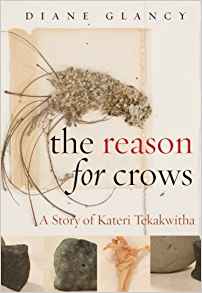 The Reason for Crows: A Story of Kateri Tekakwitha Diane Glancy (Excelsior Editions/SUNY Press) $14.95 This slim book is from the award-winning Native writer Diane Glancy, continuing the project she began in Pushing the Bear: A Novel of the Trail of Tears and Stone Heart: A Novel of Sacajawea, two other equally captivating, short novellas of historical fiction. We received a brand new book of hers in the store the other day (a nonfiction reflection about love) and I was reminded that we wanted to highlight this one. It was inspired by her reading of an old biography of Tekakwitha called Mohawk Saint. The wonderful cover art, by the way, is by CIVA member Mary McCleary.
The Reason for Crows: A Story of Kateri Tekakwitha Diane Glancy (Excelsior Editions/SUNY Press) $14.95 This slim book is from the award-winning Native writer Diane Glancy, continuing the project she began in Pushing the Bear: A Novel of the Trail of Tears and Stone Heart: A Novel of Sacajawea, two other equally captivating, short novellas of historical fiction. We received a brand new book of hers in the store the other day (a nonfiction reflection about love) and I was reminded that we wanted to highlight this one. It was inspired by her reading of an old biography of Tekakwitha called Mohawk Saint. The wonderful cover art, by the way, is by CIVA member Mary McCleary.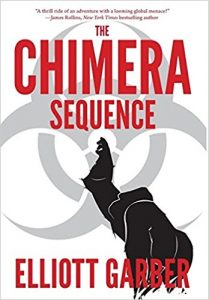 The Chimera Sequence Elliott Garber (Osprey Press) $15.99 We have lots of best-sellers and well-advertised books in our fiction section, but we enjoy stocking indie presses and some self-published work by friends we admire. Elliott is the son of Steve Garber, one of my best friends (and author of the must-read Fabric of Faithfulness and Visions of Vocation.) Yet, I would suspect that Elliott wants this book to be known for its own merits, not just because his dad is a good writer (and his mom is a librarian.) Well, it is deserving – one New York Times action/adventure writer, Maria Goodavage, says “I couldn’t put down Garber’s engaging, rapid-paced, action-packed thriller.”
The Chimera Sequence Elliott Garber (Osprey Press) $15.99 We have lots of best-sellers and well-advertised books in our fiction section, but we enjoy stocking indie presses and some self-published work by friends we admire. Elliott is the son of Steve Garber, one of my best friends (and author of the must-read Fabric of Faithfulness and Visions of Vocation.) Yet, I would suspect that Elliott wants this book to be known for its own merits, not just because his dad is a good writer (and his mom is a librarian.) Well, it is deserving – one New York Times action/adventure writer, Maria Goodavage, says “I couldn’t put down Garber’s engaging, rapid-paced, action-packed thriller.” 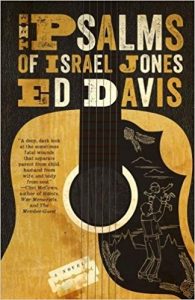 The Psalms of Israel Jones Ed Davis (Vandalia Press) $16.99 I don’t know how we discovered this rare story about “secrets and snakes, rock and gospel, guilt and grace”but I’m glad we did. It’s published by an imprint of the West Virginia University Press which does some stellar Appalachian fiction.
The Psalms of Israel Jones Ed Davis (Vandalia Press) $16.99 I don’t know how we discovered this rare story about “secrets and snakes, rock and gospel, guilt and grace”but I’m glad we did. It’s published by an imprint of the West Virginia University Press which does some stellar Appalachian fiction.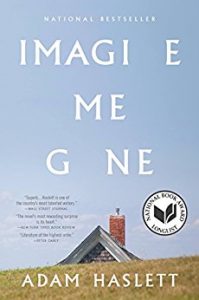 Imagine Me Gone Adam Haslett (Back Bay Books) $15.99 This came to our attention when it was long listed for the National Book Award (we try to stock most National Book Award winners.)
Imagine Me Gone Adam Haslett (Back Bay Books) $15.99 This came to our attention when it was long listed for the National Book Award (we try to stock most National Book Award winners.)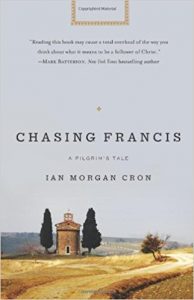 Chasing Francis: A Pilgrim’s Tale Ian Morgan Cron (Zondervan) $16.99 Since we listed a new Ian Cron book in our earlier, fun non-fiction list (his recent co-authored book on the Enneagram, The Way Back to You) I figured I’d remind you now about his older novel. It offers a great premise – a disillusioned pastor of a megachurch heads to Assisi to renew his faith. (His name is Chase, by the way.) In Italy he goes on a pilgrimage re-tracing the steps of St. Francis, meets up with some simple Franciscan friars, and, well, you can imagine what happens when he returns home, wanting his church to live into this sort of simple, radical faith. You know Cron is funny and full of pathos (his memoir Jesus, My Father, the CIA, and Me: A Memoir of Sorts is an all-time favorite and will make you laugh and probably cry!) This fiction story is full of spiritual hunger and a bit of history and a yearning for hope. Not every book carries blurbs on the back from writers as diverse as Rachel Held Evans, Eric Metaxas, Fr. Richard Rohr, Mako Fujimura, Rowan Williams, and Shauna Niequist. This shows just how widely it is respected and how many folks have really enjoyed it. Don’t miss it (no matter what Enneagram number you’ve got.)
Chasing Francis: A Pilgrim’s Tale Ian Morgan Cron (Zondervan) $16.99 Since we listed a new Ian Cron book in our earlier, fun non-fiction list (his recent co-authored book on the Enneagram, The Way Back to You) I figured I’d remind you now about his older novel. It offers a great premise – a disillusioned pastor of a megachurch heads to Assisi to renew his faith. (His name is Chase, by the way.) In Italy he goes on a pilgrimage re-tracing the steps of St. Francis, meets up with some simple Franciscan friars, and, well, you can imagine what happens when he returns home, wanting his church to live into this sort of simple, radical faith. You know Cron is funny and full of pathos (his memoir Jesus, My Father, the CIA, and Me: A Memoir of Sorts is an all-time favorite and will make you laugh and probably cry!) This fiction story is full of spiritual hunger and a bit of history and a yearning for hope. Not every book carries blurbs on the back from writers as diverse as Rachel Held Evans, Eric Metaxas, Fr. Richard Rohr, Mako Fujimura, Rowan Williams, and Shauna Niequist. This shows just how widely it is respected and how many folks have really enjoyed it. Don’t miss it (no matter what Enneagram number you’ve got.)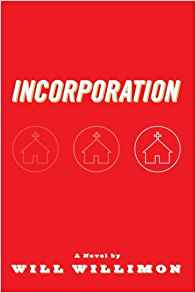 Incorporation Will Willimon (Cascade) $29.00 Speaking of books about the troubles and possible revitalization of churches, who better to try his hand at writing a church novel poking at our modern foibles than born storyteller and world-renowned theologian, preacher, and former United Methodist Bishop, William Willimon? This story is about Hope Church (its colorful clergy and its people, of course). But, well, from the title you might guess this is a feisty dig at the crowd-pleasing, worldly businessy approach to church. Michael Malone (himself a great novelist) says “Imagine a contemporary variation on Trollope’s Barchester Towers, set in a small American town with a big church.” You’ll find plenty of real human messes here, even what the back cover calls “ungodly shenanigans” which includes drunkenness, adultery, even criminal malfeasance. This is quite a story, entertaining, witty, blunt, by an author who is quite aware of the irony of it all. Will there be a final accounting? Is there a God around?
Incorporation Will Willimon (Cascade) $29.00 Speaking of books about the troubles and possible revitalization of churches, who better to try his hand at writing a church novel poking at our modern foibles than born storyteller and world-renowned theologian, preacher, and former United Methodist Bishop, William Willimon? This story is about Hope Church (its colorful clergy and its people, of course). But, well, from the title you might guess this is a feisty dig at the crowd-pleasing, worldly businessy approach to church. Michael Malone (himself a great novelist) says “Imagine a contemporary variation on Trollope’s Barchester Towers, set in a small American town with a big church.” You’ll find plenty of real human messes here, even what the back cover calls “ungodly shenanigans” which includes drunkenness, adultery, even criminal malfeasance. This is quite a story, entertaining, witty, blunt, by an author who is quite aware of the irony of it all. Will there be a final accounting? Is there a God around?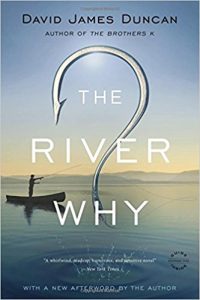 The River Why David James Duncan (Sierra Club Books) $14.99//new edition $15.99 If we’ve talked about fiction, together, ever, I am sure you know that this remains one of the most memorable stories I’ve ever read. It is wonderfully funny, oddball, full of truly great writing, including some beautiful glimpses of nature, and a well-rendered encounter with God, one of the best I’ve ever read. The book is about fishing — both fly fishing for trout and worm fishing for bass — and, well, two differing visions of the meaning of life. I’m not kidding; it is about fishing and the search for the meaning of life.
The River Why David James Duncan (Sierra Club Books) $14.99//new edition $15.99 If we’ve talked about fiction, together, ever, I am sure you know that this remains one of the most memorable stories I’ve ever read. It is wonderfully funny, oddball, full of truly great writing, including some beautiful glimpses of nature, and a well-rendered encounter with God, one of the best I’ve ever read. The book is about fishing — both fly fishing for trout and worm fishing for bass — and, well, two differing visions of the meaning of life. I’m not kidding; it is about fishing and the search for the meaning of life.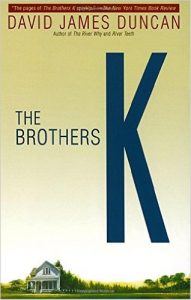 The Brothers K David James Duncan (Dial Press) $18.00 If The River Why is my favorite David Duncan book, it is my wife’s opinion that this, Duncan’s second novel, about a family of baseball-playing boys, set during the painful Viet Nam war era, is even better. I think that many readers agree, but everybody agrees that you should read both of these extraordinary novels. If you like baseball, you’ve got to get this (it is better than Owen Meany, which itself is grand and exceptional.) Is this a homage to The Brother’s Karamazov? You tell me. Many reviewers have waxed eloquent about the meaning of this great story and we very highly recommend it.
The Brothers K David James Duncan (Dial Press) $18.00 If The River Why is my favorite David Duncan book, it is my wife’s opinion that this, Duncan’s second novel, about a family of baseball-playing boys, set during the painful Viet Nam war era, is even better. I think that many readers agree, but everybody agrees that you should read both of these extraordinary novels. If you like baseball, you’ve got to get this (it is better than Owen Meany, which itself is grand and exceptional.) Is this a homage to The Brother’s Karamazov? You tell me. Many reviewers have waxed eloquent about the meaning of this great story and we very highly recommend it. Silence Shusaku Endo (Picador) $16.00 Maybe not light fare for happy beach reading, Silence is one of the most acclaimed novels of the late 20
Silence Shusaku Endo (Picador) $16.00 Maybe not light fare for happy beach reading, Silence is one of the most acclaimed novels of the late 20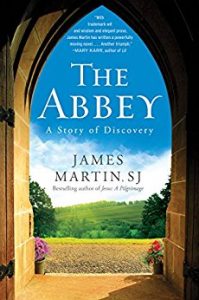 The Abbey: A Story of Discovery James Martin, SJ (HarperOne) $14.99 I hope you know Father Martin, a popular Catholic writer who has done books on all sorts of theological topics, from a wonderful book about Jesus to one called My Life with the Saints to a really great book about humor.) His newest is a short and sensible one called Building a Bridge: How the Catholic Church and the LGBT Community Can Enter into a Relationship of Respect, Compassion, and Sensitivity. That is very nicely done, and short, btw. We are fond of Martin and his many good books.
The Abbey: A Story of Discovery James Martin, SJ (HarperOne) $14.99 I hope you know Father Martin, a popular Catholic writer who has done books on all sorts of theological topics, from a wonderful book about Jesus to one called My Life with the Saints to a really great book about humor.) His newest is a short and sensible one called Building a Bridge: How the Catholic Church and the LGBT Community Can Enter into a Relationship of Respect, Compassion, and Sensitivity. That is very nicely done, and short, btw. We are fond of Martin and his many good books.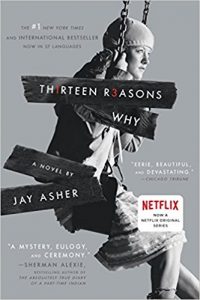 Thirteen Reasons Why Jay Asher (Razor Bill) $10.99 We’ve stocked this since it came out, and gave a brief overview of it a few years ago in a list of books for older teens. Kirkus called it “brilliant and mesmerizing” and YA dramatist Ellen Hopkins says it is “a book that you can’t get out of your mind.” Now here’s the thing: since it was turned into a very graphic Netflix show, it has become an even larger cultural phenomenon, certainly one of the most talked-about and fiercely debated shows of the year. I was asked by a local TV commentator to comment on the show, which we have not seen, so I couldn’t comment on it, although I hear it is graphic.. I do realize that it shows some truly awful stuff. The book itself is harsh and hard – you know it is about a set of tapes sent to 13 high school classmates by a student who took her own life; the tapes outline their crimes of bullying or betrayal or apathy in the face of sexual violence, in effect blaming them for her despair. This is eerie and suspenseful and well-crafted and necessarily disturbing. If you know any troubled youth today, you should read this.
Thirteen Reasons Why Jay Asher (Razor Bill) $10.99 We’ve stocked this since it came out, and gave a brief overview of it a few years ago in a list of books for older teens. Kirkus called it “brilliant and mesmerizing” and YA dramatist Ellen Hopkins says it is “a book that you can’t get out of your mind.” Now here’s the thing: since it was turned into a very graphic Netflix show, it has become an even larger cultural phenomenon, certainly one of the most talked-about and fiercely debated shows of the year. I was asked by a local TV commentator to comment on the show, which we have not seen, so I couldn’t comment on it, although I hear it is graphic.. I do realize that it shows some truly awful stuff. The book itself is harsh and hard – you know it is about a set of tapes sent to 13 high school classmates by a student who took her own life; the tapes outline their crimes of bullying or betrayal or apathy in the face of sexual violence, in effect blaming them for her despair. This is eerie and suspenseful and well-crafted and necessarily disturbing. If you know any troubled youth today, you should read this.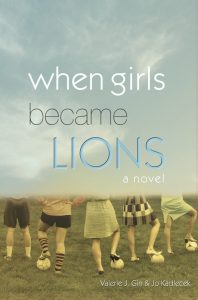 When Girls Became Lions Valerie Gin & Jo Kadlecek (When Girls Became Lions) $14.99 We have touted this from time to time and wish it were better known… independently published, it is very well done and a lot of fun. One of the co-authors is a legendary women’s soccer coach, her co-author a former athlete who mostly makes her living as a writer. Together they’ve given us a great story about women’s collegiate sports, starting with a rag tag group of girls playing soccer in 1983 and what happens when 25 years later a coach learns about their small-town, mid-Western championship. This really shows the impact of Title IX and the “triumphs and struggles of women in sports.” There aren’t many books like this, so well done about women’s sports, and think it would make a great gift to any teen or college athlete you fan you know.
When Girls Became Lions Valerie Gin & Jo Kadlecek (When Girls Became Lions) $14.99 We have touted this from time to time and wish it were better known… independently published, it is very well done and a lot of fun. One of the co-authors is a legendary women’s soccer coach, her co-author a former athlete who mostly makes her living as a writer. Together they’ve given us a great story about women’s collegiate sports, starting with a rag tag group of girls playing soccer in 1983 and what happens when 25 years later a coach learns about their small-town, mid-Western championship. This really shows the impact of Title IX and the “triumphs and struggles of women in sports.” There aren’t many books like this, so well done about women’s sports, and think it would make a great gift to any teen or college athlete you fan you know.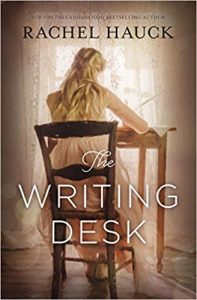 The Writing Desk Rachel Hauck (Zondervan) $15.99 This is intriguing, entertaining stuff within the genre of “Christian fiction” — that is, mostly inspirational stories published by evangelical publishing houses. Hauck has become a New York Times bestselling author (she is known for a moving trio of novels called The Wedding Dress, The Wedding Chapel, and The Wedding Shop.) I thought some of our customers will like this not only because of the wholesome tone but because it is about writing and publishing. It uses a creative device – Tenley Roth’s first book was a runaway bestseller, but she is “locked in fear” as her deadline for the second book approaches. She is “weighted with writer’s block.”
The Writing Desk Rachel Hauck (Zondervan) $15.99 This is intriguing, entertaining stuff within the genre of “Christian fiction” — that is, mostly inspirational stories published by evangelical publishing houses. Hauck has become a New York Times bestselling author (she is known for a moving trio of novels called The Wedding Dress, The Wedding Chapel, and The Wedding Shop.) I thought some of our customers will like this not only because of the wholesome tone but because it is about writing and publishing. It uses a creative device – Tenley Roth’s first book was a runaway bestseller, but she is “locked in fear” as her deadline for the second book approaches. She is “weighted with writer’s block.” A Land Without Sin Paula Huston (Slant) $27.00 Slant is a classy imprint created for thoughtful fiction by Gregory Wolfe of the Image Journal. (The latest from Slant is a serious hardcover called Death Comes for the Deconstructionist by the wonderfully thoughtful Daniel Taylor. It is, by the way, on the surface, a crime novel about the murder of, get this, a postmodern literary critic – yep, a real deconstructionist. ) Slant’s Land Without Sin came out about five years ago and at that time I named it as my favorite novel of the year, as I recall. It was named by Publishers Weekly, in fact, as one of the “Best Summer Books” of 2013. It is a grand and important story, set among aid workers in Central America, struggling with revolution and liberation theology, inviting us into exciting plots with (as one novelist wrote) “the depth of soulful inquiry of Graham Greene’s The Power and the Glory. WE HAVE THIS AT A SPECIAL SALE OF $10.00 OFF. Our sale price is just $17.00 — while supplies last.
A Land Without Sin Paula Huston (Slant) $27.00 Slant is a classy imprint created for thoughtful fiction by Gregory Wolfe of the Image Journal. (The latest from Slant is a serious hardcover called Death Comes for the Deconstructionist by the wonderfully thoughtful Daniel Taylor. It is, by the way, on the surface, a crime novel about the murder of, get this, a postmodern literary critic – yep, a real deconstructionist. ) Slant’s Land Without Sin came out about five years ago and at that time I named it as my favorite novel of the year, as I recall. It was named by Publishers Weekly, in fact, as one of the “Best Summer Books” of 2013. It is a grand and important story, set among aid workers in Central America, struggling with revolution and liberation theology, inviting us into exciting plots with (as one novelist wrote) “the depth of soulful inquiry of Graham Greene’s The Power and the Glory. WE HAVE THIS AT A SPECIAL SALE OF $10.00 OFF. Our sale price is just $17.00 — while supplies last.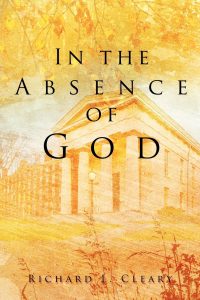
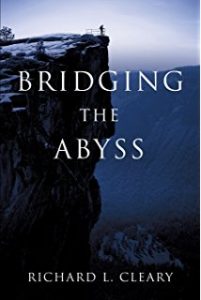 In the Absence of God Richard L. Cleary (Xulon Press) $24.99
In the Absence of God Richard L. Cleary (Xulon Press) $24.99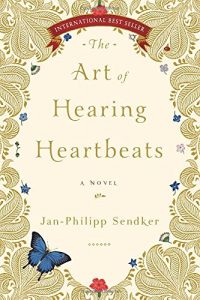 The Art of Hearing Heartbeats Jan-Philipp Sendker (Other Press) $15.95 Just holding this new paperback makes me want to start the story – it is an international best-seller, set in Burma. There is Eastern mysticism, romantic encounters, deep mystery. It has gotten some great reviews, but I can’t quite say more. We are very excited to stock it here at the shop.
The Art of Hearing Heartbeats Jan-Philipp Sendker (Other Press) $15.95 Just holding this new paperback makes me want to start the story – it is an international best-seller, set in Burma. There is Eastern mysticism, romantic encounters, deep mystery. It has gotten some great reviews, but I can’t quite say more. We are very excited to stock it here at the shop. Jesus Cloned William Hagenbuch (Archway Publishing) $28.99 Well, didn’t I say we sometimes like to carry some uncommon books that you may not have heard of elsewhere? Hagenbuch is a colorful UCC pastor with a MDiv from Boston University’s School of Theology. He’s a first time novelist with a big passion for telling this story, which is too complex and dare I say wild to explain simply, here. The short version is that nineteen-year-old Joe O’Dell is about to learn he is not who he thinks he is. Granted this is fantastical but it has to do with, among other things, a creepy Orphan Black type organization which has some two-thousand-year-old DNA that may be…. wait for it… from the body of Jesus Christ!
Jesus Cloned William Hagenbuch (Archway Publishing) $28.99 Well, didn’t I say we sometimes like to carry some uncommon books that you may not have heard of elsewhere? Hagenbuch is a colorful UCC pastor with a MDiv from Boston University’s School of Theology. He’s a first time novelist with a big passion for telling this story, which is too complex and dare I say wild to explain simply, here. The short version is that nineteen-year-old Joe O’Dell is about to learn he is not who he thinks he is. Granted this is fantastical but it has to do with, among other things, a creepy Orphan Black type organization which has some two-thousand-year-old DNA that may be…. wait for it… from the body of Jesus Christ!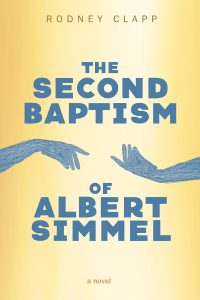 A Second Baptism of Albert Simmel Rodney Clapp (Cascade Books) $19.99 I don’t know if you recall the books from maybe a decade or so ago that we raved about by Rodney Clapp, back when he was working at IVP and did the exceptional, and still important Families at the Crossroads: Beyond Traditional and Modern Options, or when he became a founding editor of the significant Brazos Press imprint, now affiliated with Baker Books. He did some books on pop culture, is known for knowing much about the blues, and he did a wonderful book about being fully human and finding God’s presence in the ordinary called Tortured Wonders: Christian Spirituality for People, Not Angels. Mr.Clapp did a good book on Johnny Cash (or is it really about the contradictions at the heart of American culture?) We still stock all of these. Anyway, he has a novel, now, recently published by his latest employer, Wipf & Stock publishing.
A Second Baptism of Albert Simmel Rodney Clapp (Cascade Books) $19.99 I don’t know if you recall the books from maybe a decade or so ago that we raved about by Rodney Clapp, back when he was working at IVP and did the exceptional, and still important Families at the Crossroads: Beyond Traditional and Modern Options, or when he became a founding editor of the significant Brazos Press imprint, now affiliated with Baker Books. He did some books on pop culture, is known for knowing much about the blues, and he did a wonderful book about being fully human and finding God’s presence in the ordinary called Tortured Wonders: Christian Spirituality for People, Not Angels. Mr.Clapp did a good book on Johnny Cash (or is it really about the contradictions at the heart of American culture?) We still stock all of these. Anyway, he has a novel, now, recently published by his latest employer, Wipf & Stock publishing. 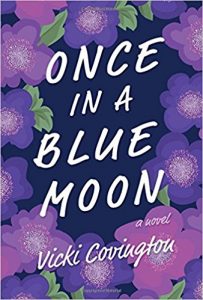 Once in a Blue Moon: A Novel Vickie Covington (John F. Blair Publishing) $26.95 Speaking of Southern fiction writers and folks who have been around the horn a bit, we respect Vickie Covington so much. We discovered her – as so many did – firstly in Salvation on Sand Mountain, the amazing non-fiction book about snake handling in Appalachia that her eloquent husband at the time, Dennis Covington, wrote about their involvement first reporting on, and then becoming friends with, a weird West Virginia Pentecostal church. She went on to co-author the stunning book about their marriage difficulties, Cleaving. She has written essays and novels, and, as far as I know, this is the first book she has done in a long while. There is a vibrant and fun blurb on the back by the indefatigable Fanny Flagg who says Ms. Covington is “one of the most gifted and talented writers of the New South.” Mark Childress (author of Crazy in Alabama) says, “This is a lovely book, full of delight and real feeling. I can’t think of another quite like it.” If you want to enter Southside Birmingham for a spell, joining her “community of lost souls who find each other in a season when hope and change seem like real possibilities” – that’s an allusion to the time period in which Once in a Blue Moon is set, right after Obama’s first election victory — this could be a wonderful read for you or your book club. It’s the kind of book that is getting buzz in indie stores that curate special selections that maybe don’t come up readily in the dumb amazon algorithms or bestsellers lists. You heard about it here!
Once in a Blue Moon: A Novel Vickie Covington (John F. Blair Publishing) $26.95 Speaking of Southern fiction writers and folks who have been around the horn a bit, we respect Vickie Covington so much. We discovered her – as so many did – firstly in Salvation on Sand Mountain, the amazing non-fiction book about snake handling in Appalachia that her eloquent husband at the time, Dennis Covington, wrote about their involvement first reporting on, and then becoming friends with, a weird West Virginia Pentecostal church. She went on to co-author the stunning book about their marriage difficulties, Cleaving. She has written essays and novels, and, as far as I know, this is the first book she has done in a long while. There is a vibrant and fun blurb on the back by the indefatigable Fanny Flagg who says Ms. Covington is “one of the most gifted and talented writers of the New South.” Mark Childress (author of Crazy in Alabama) says, “This is a lovely book, full of delight and real feeling. I can’t think of another quite like it.” If you want to enter Southside Birmingham for a spell, joining her “community of lost souls who find each other in a season when hope and change seem like real possibilities” – that’s an allusion to the time period in which Once in a Blue Moon is set, right after Obama’s first election victory — this could be a wonderful read for you or your book club. It’s the kind of book that is getting buzz in indie stores that curate special selections that maybe don’t come up readily in the dumb amazon algorithms or bestsellers lists. You heard about it here!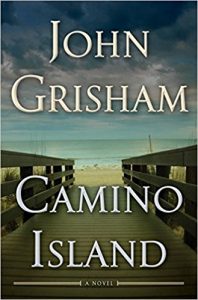 Camino Island John Grisham (Doubleday) $28.95 I don’t have to say much about this other than that it is wonderful to be able to highlight a book by a Baptist Sunday School teacher who is known and beloved in both popular best-selling book selling venues (from airports to discount chains) and in thoughtful literary circles, for being a fine writer, a good storyteller, and a decent man. Would that all authors had such a personal reputation for being serious about their art but also for their integrity and charm. Further, it’s fun to tell about books about books and writers, and this one is not a legal thriller, but a book about an author and his writer’s block. Well, there’s a heist of some exceptional books from Princeton and a rare books dealer, too. In it, Grisham reveals some of his own issues, his own tricks of the writing trade, and channels some of his own advice to aspiring writers to his stuck, stuck character. This is selling well throughout the country, and we’re happy to offer it as well.
Camino Island John Grisham (Doubleday) $28.95 I don’t have to say much about this other than that it is wonderful to be able to highlight a book by a Baptist Sunday School teacher who is known and beloved in both popular best-selling book selling venues (from airports to discount chains) and in thoughtful literary circles, for being a fine writer, a good storyteller, and a decent man. Would that all authors had such a personal reputation for being serious about their art but also for their integrity and charm. Further, it’s fun to tell about books about books and writers, and this one is not a legal thriller, but a book about an author and his writer’s block. Well, there’s a heist of some exceptional books from Princeton and a rare books dealer, too. In it, Grisham reveals some of his own issues, his own tricks of the writing trade, and channels some of his own advice to aspiring writers to his stuck, stuck character. This is selling well throughout the country, and we’re happy to offer it as well.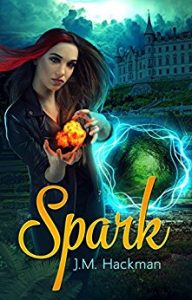 Spark: The Firebrand Chronicles Book One J.M. Hackman (Love2ReadLove2Write Publishing ) $14.99 I am really, really happy to tell you about this for at least three big reasons. Firstly, I’m happy to admit, the author is a cousin of mine, and we watched her grow up, crossing paths at family reunions, weddings, funerals, and such. She’s a devout and serious Christian in a small town evangelical church and her degree in writing is from a very impressive department in a respected college. So, there’s that: our family is really proud of her, and, gee, it isn’t every day we get to tout a published volume by a family member. So cheers! We hope you consider giving it a try.
Spark: The Firebrand Chronicles Book One J.M. Hackman (Love2ReadLove2Write Publishing ) $14.99 I am really, really happy to tell you about this for at least three big reasons. Firstly, I’m happy to admit, the author is a cousin of mine, and we watched her grow up, crossing paths at family reunions, weddings, funerals, and such. She’s a devout and serious Christian in a small town evangelical church and her degree in writing is from a very impressive department in a respected college. So, there’s that: our family is really proud of her, and, gee, it isn’t every day we get to tout a published volume by a family member. So cheers! We hope you consider giving it a try.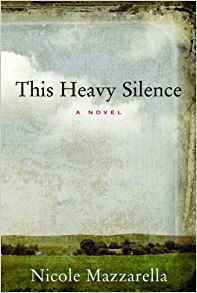 This Heavy Silence (Paraclete Press) $14.95 Well, I hope you know – hear this now if you haven’t yet heard it – we have stocked all the books by Kentucky farmer Wendell Berry that we can, and we had a selection of his nonfiction, fiction, and poems, the day we opened 34 years ago. But I didn’t know his novels well until a customer pressed into my hands our own store’s copy of The Memory of Old Jack twenty-five or more years ago. Of course everybody loves Berry’s lovely, slow, deeply wise Jayber Crow and it remains one of my all-time favorite novels. However, Beth and I both agree that we liked Hannah Coulter even better!
This Heavy Silence (Paraclete Press) $14.95 Well, I hope you know – hear this now if you haven’t yet heard it – we have stocked all the books by Kentucky farmer Wendell Berry that we can, and we had a selection of his nonfiction, fiction, and poems, the day we opened 34 years ago. But I didn’t know his novels well until a customer pressed into my hands our own store’s copy of The Memory of Old Jack twenty-five or more years ago. Of course everybody loves Berry’s lovely, slow, deeply wise Jayber Crow and it remains one of my all-time favorite novels. However, Beth and I both agree that we liked Hannah Coulter even better! The Underground Railroad: A Novel Colson Whitehead (Doubleday) $26.95 I don’t have to say much about this, and cannot, as none of us here have read it yet. It has been on our radar since it first came out, when it garnered some stunning reviews, and then when it won any number of important awards last spring. It received the National Book Award, which is further indication of its significance in the publishing landscape. Colson Whitehead is a prizewinning and best-selling author and his story of a young slave’s adventures as she makes a desperate bid for freedom in the antebellum South has been called “a magnificent tour de force.” It was an Oprah’s Book Club selection for 2016; you can see why when you read blurbs like these:
The Underground Railroad: A Novel Colson Whitehead (Doubleday) $26.95 I don’t have to say much about this, and cannot, as none of us here have read it yet. It has been on our radar since it first came out, when it garnered some stunning reviews, and then when it won any number of important awards last spring. It received the National Book Award, which is further indication of its significance in the publishing landscape. Colson Whitehead is a prizewinning and best-selling author and his story of a young slave’s adventures as she makes a desperate bid for freedom in the antebellum South has been called “a magnificent tour de force.” It was an Oprah’s Book Club selection for 2016; you can see why when you read blurbs like these: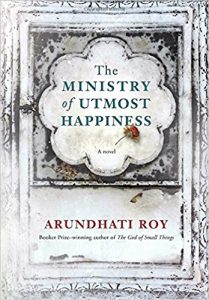 The Ministry of Utmost Happiness Arundhati Roy (Knopf) $28.95 Again, this is one we are very proud to tell you we have, one of many on our “new fiction” display. This author is legendary for her exquisite prose and her remarkable memoirs and essays. I am not sure it is fair to call her an activist, but she has been outspoken about human rights and the things that matter much in our world. I hope you know her name (and her most awarded novel The God of Small Things.) As Junot Diaz (whose book I reviewed a year ago) says, “If you want to know the world behind our corporate-sponsored dreamscapes, you read writers like Arundhati Roy. She shows you what’s really going on.”
The Ministry of Utmost Happiness Arundhati Roy (Knopf) $28.95 Again, this is one we are very proud to tell you we have, one of many on our “new fiction” display. This author is legendary for her exquisite prose and her remarkable memoirs and essays. I am not sure it is fair to call her an activist, but she has been outspoken about human rights and the things that matter much in our world. I hope you know her name (and her most awarded novel The God of Small Things.) As Junot Diaz (whose book I reviewed a year ago) says, “If you want to know the world behind our corporate-sponsored dreamscapes, you read writers like Arundhati Roy. She shows you what’s really going on.”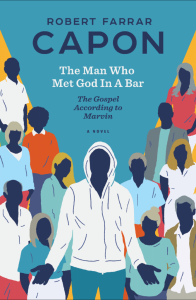 Man Who Met God in a Bar: The Gospel According to Marvin Robert Farrar Capon (Mockingbird) $16.99 I alluded to this one in that previous blog as I was so glad that Mockingbird brought out another rare one of Capon’s — a book of sort-of-fiction, a set of feisty conversations between two characters that were essentially alter egos for the late Father Capon and his wife, Valerie. That book of discussions between Pietro and Madeleine, More Theology and Less Heavy Cream, is a sequel to the previously published Light Theology and More Heavy Cream that were firstly published as installments in the Christian satire journal, the late great Wittenberg Door. So I mentioned those in that post, and will announce this one, now.
Man Who Met God in a Bar: The Gospel According to Marvin Robert Farrar Capon (Mockingbird) $16.99 I alluded to this one in that previous blog as I was so glad that Mockingbird brought out another rare one of Capon’s — a book of sort-of-fiction, a set of feisty conversations between two characters that were essentially alter egos for the late Father Capon and his wife, Valerie. That book of discussions between Pietro and Madeleine, More Theology and Less Heavy Cream, is a sequel to the previously published Light Theology and More Heavy Cream that were firstly published as installments in the Christian satire journal, the late great Wittenberg Door. So I mentioned those in that post, and will announce this one, now.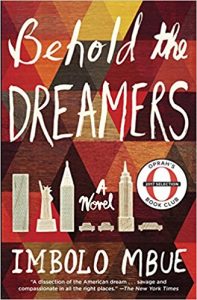 Behold The Dreamers Imbolo Mbue (Random House) $17.00 I’m glad this is now out in paperback and that it is a honored selection of the Oprah’s Book Club for this year. My-oh-my, we need novels like this, storytellers that through the power of a well told tale allow us to glimpse into another’s life, see things from a different angle, have our hearts touched. We become more empathetic, I’m sure of it, by reading well, and reading this kind of story — about marriage, immigration, and the lives of a young couple from Cameroon, living in New York City. I am sure you will be a better citizen, a better neighbor, a better Christian by entering into the worlds of others like this. Take it up with your book group and see what happens. And let us know how it goes!
Behold The Dreamers Imbolo Mbue (Random House) $17.00 I’m glad this is now out in paperback and that it is a honored selection of the Oprah’s Book Club for this year. My-oh-my, we need novels like this, storytellers that through the power of a well told tale allow us to glimpse into another’s life, see things from a different angle, have our hearts touched. We become more empathetic, I’m sure of it, by reading well, and reading this kind of story — about marriage, immigration, and the lives of a young couple from Cameroon, living in New York City. I am sure you will be a better citizen, a better neighbor, a better Christian by entering into the worlds of others like this. Take it up with your book group and see what happens. And let us know how it goes! Freedom’s Ring Heidi Chiavaroli (Tyndale) $14.99 There are so many inspirational novels within the “Christian fiction” genre and although we stock more than most stores, my own imagination isn’t captured by most. Yes, we have Amish stories and faith-based historical romances. Some are truly a blessing to readers, and some authors have their devoted fans. But every now and then a writer comes along within that sub-culture that perhaps deserves to be known more widely. This looks like a fascinating bit of historical fiction, a clever and curious device, connection Boston in 2015 when the Boston Marathon bombing put an entire city on edge and Boston 1770 when the Boston Massacre sparked the American Revolution. In Freedom’s Ring, Heidi Chiavaroli weaves together the past and present, starting with the grief of a runner Annie David and her wounded niece, and a colonial woman named Liberty Caldwell, whose brother was killed in the deadly fray. It is a love story as well, “women’s fiction”, they say, which “haunts and heals long after the last page.”
Freedom’s Ring Heidi Chiavaroli (Tyndale) $14.99 There are so many inspirational novels within the “Christian fiction” genre and although we stock more than most stores, my own imagination isn’t captured by most. Yes, we have Amish stories and faith-based historical romances. Some are truly a blessing to readers, and some authors have their devoted fans. But every now and then a writer comes along within that sub-culture that perhaps deserves to be known more widely. This looks like a fascinating bit of historical fiction, a clever and curious device, connection Boston in 2015 when the Boston Marathon bombing put an entire city on edge and Boston 1770 when the Boston Massacre sparked the American Revolution. In Freedom’s Ring, Heidi Chiavaroli weaves together the past and present, starting with the grief of a runner Annie David and her wounded niece, and a colonial woman named Liberty Caldwell, whose brother was killed in the deadly fray. It is a love story as well, “women’s fiction”, they say, which “haunts and heals long after the last page.”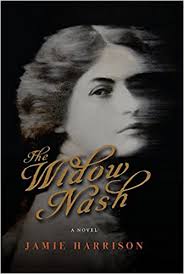 The Widow Nash Jamie Harrison (Counterpoint) $26.00 Counterpoint is a smallish, literate publisher (known for doing many of Wendel Berry’s books, so you know they are people of integrity.) This novel is curious, serious, said to be “deliciously ambitious” and written with “technicolor, vibrant prose.” Known for memorable characters and unexpected adventure, it is an ambitious story. There is history, here, but more: in fact, it could be considered a feminist take on the classic Western. Or, perhaps, it enters this historical period to offer “a compelling novel of reinvention and the seismic sacrifices we make for difficult family.” Carl Hiaasen loves the widow Nash in The Widow Nash, and says “this shining book is flat-out terrific.”
The Widow Nash Jamie Harrison (Counterpoint) $26.00 Counterpoint is a smallish, literate publisher (known for doing many of Wendel Berry’s books, so you know they are people of integrity.) This novel is curious, serious, said to be “deliciously ambitious” and written with “technicolor, vibrant prose.” Known for memorable characters and unexpected adventure, it is an ambitious story. There is history, here, but more: in fact, it could be considered a feminist take on the classic Western. Or, perhaps, it enters this historical period to offer “a compelling novel of reinvention and the seismic sacrifices we make for difficult family.” Carl Hiaasen loves the widow Nash in The Widow Nash, and says “this shining book is flat-out terrific.”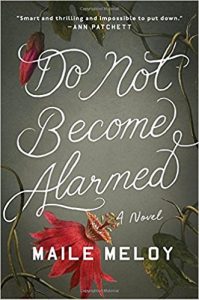 Do Not Become Alarmed: A Novel Maile Meloy (Riverhead) $27.00 This publishing imprint is respected for doing often exquisite books of well-written fiction and non-fiction, and this author has been lauded by The New York Times Book Review, The Atlantic, and other such outlets (for both her adult and middle grade novels.) She has that rare ability to be a fine and fun storyteller, with a thoughtful, literate streak. Helen Fielding of Bridget Jone’s Diary fame says, “Here is that perfect combination of a luminous writer and a big, page-turning story.”
Do Not Become Alarmed: A Novel Maile Meloy (Riverhead) $27.00 This publishing imprint is respected for doing often exquisite books of well-written fiction and non-fiction, and this author has been lauded by The New York Times Book Review, The Atlantic, and other such outlets (for both her adult and middle grade novels.) She has that rare ability to be a fine and fun storyteller, with a thoughtful, literate streak. Helen Fielding of Bridget Jone’s Diary fame says, “Here is that perfect combination of a luminous writer and a big, page-turning story.”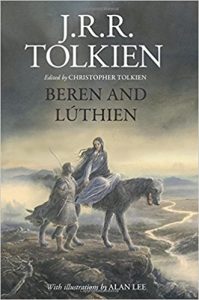 Beren and Luthien J.R.R. Tolkien, edited by Christopher Tolkien, with illustrations by Alan Lee (Houghton Mifflin Harcourt) $30.00 Okay, for some, we’ve saved the best for last. Just in, this is, yes, an early book not previously released by Tolkien, but one whose story serious Middle Earthers will recognize.
Beren and Luthien J.R.R. Tolkien, edited by Christopher Tolkien, with illustrations by Alan Lee (Houghton Mifflin Harcourt) $30.00 Okay, for some, we’ve saved the best for last. Just in, this is, yes, an early book not previously released by Tolkien, but one whose story serious Middle Earthers will recognize. 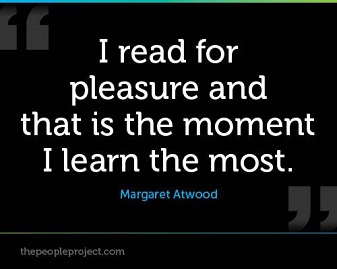
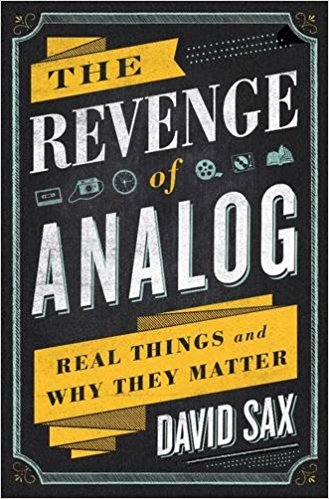 Revenge of Analog: Real Things and Why They Matter David Sax (Public Affairs) $25.99 Oh man, what a book. From the first chapter about a new record store (that’s real records, a store selling vinyl, like I used to in the early 70s in the Platter Palace shops in Hanover and Gettysburg) that opened in his Toronto neighbor, I was hooked, absolutely hooked. Sax visits the manufacturing plants that make vinyl, discusses the rise of the sales of record players, and weighs in on why the listening experience via vinyl is superior. (I almost cried when he explained how, despite his own huge digital music library he just doesn’t listen to music much anymore; there are too many choices, too much to dip in to, and it can be so incidental. Selecting an album, among a limited selection, and putting it on carefully, brings an full-orbed intentionality, and something deep within me resonated.)
Revenge of Analog: Real Things and Why They Matter David Sax (Public Affairs) $25.99 Oh man, what a book. From the first chapter about a new record store (that’s real records, a store selling vinyl, like I used to in the early 70s in the Platter Palace shops in Hanover and Gettysburg) that opened in his Toronto neighbor, I was hooked, absolutely hooked. Sax visits the manufacturing plants that make vinyl, discusses the rise of the sales of record players, and weighs in on why the listening experience via vinyl is superior. (I almost cried when he explained how, despite his own huge digital music library he just doesn’t listen to music much anymore; there are too many choices, too much to dip in to, and it can be so incidental. Selecting an album, among a limited selection, and putting it on carefully, brings an full-orbed intentionality, and something deep within me resonated.)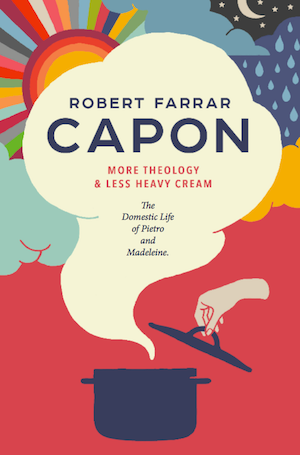 More Theology and Less Heavy Cream: The Domestic Life of Pietro and Madeleine Robert Farrar Capon (Mockingbird) $16.00 Okay, I can’t review this thoroughly now, but will just set it up for you. It’s more or less a follow up to a nonfiction book, so although it isn’t non-fiction, I’m listing it here now. I hope you know the award-winning, wonderfully written and rather intense theological cookbook by Capon called Supper of the Lamb: A Culinary Reflection (Moder Library; $16.00.) It is exactly that, a memoir about cooking, including a large leg of lamb recipe, by theologian and Episcopal priest, the late Fr. Robert Farrar Capon.
More Theology and Less Heavy Cream: The Domestic Life of Pietro and Madeleine Robert Farrar Capon (Mockingbird) $16.00 Okay, I can’t review this thoroughly now, but will just set it up for you. It’s more or less a follow up to a nonfiction book, so although it isn’t non-fiction, I’m listing it here now. I hope you know the award-winning, wonderfully written and rather intense theological cookbook by Capon called Supper of the Lamb: A Culinary Reflection (Moder Library; $16.00.) It is exactly that, a memoir about cooking, including a large leg of lamb recipe, by theologian and Episcopal priest, the late Fr. Robert Farrar Capon.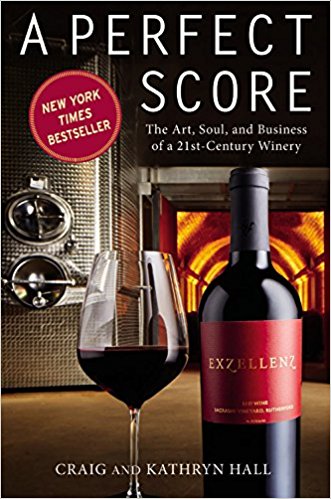 A Perfect Score: The Art, Soul, and Business of a 21
A Perfect Score: The Art, Soul, and Business of a 21 Books for Living Will Schwalbe(Knopf) $25.95 I announced this book about books and recommended it heartily when it first came out a half year ago, but I want to highlight it here, now, if only briefly. I want to say as clearly as I can that this will be loved by nearly any book lover, that it is a delight to read – a perfect shape and feeling making it even a delight to hold and page through, as we do with books we love and want to just dip into serendipitously. You may recall Schwalbe for the wonderful book he wrote about the books he read with his dying mother — both voracious readers — called The End of Your Life Book Club. We so loved that and it is worth owning. This one is somewhat of a companion volume with Will sharing stories from his life, his loved ones, people he knows (his mom shows up again on occasion) all woven through what are almost book reviews. I call him Will, by the way, because he has revealed much about his life in these essays and he feels like a friend.
Books for Living Will Schwalbe(Knopf) $25.95 I announced this book about books and recommended it heartily when it first came out a half year ago, but I want to highlight it here, now, if only briefly. I want to say as clearly as I can that this will be loved by nearly any book lover, that it is a delight to read – a perfect shape and feeling making it even a delight to hold and page through, as we do with books we love and want to just dip into serendipitously. You may recall Schwalbe for the wonderful book he wrote about the books he read with his dying mother — both voracious readers — called The End of Your Life Book Club. We so loved that and it is worth owning. This one is somewhat of a companion volume with Will sharing stories from his life, his loved ones, people he knows (his mom shows up again on occasion) all woven through what are almost book reviews. I call him Will, by the way, because he has revealed much about his life in these essays and he feels like a friend.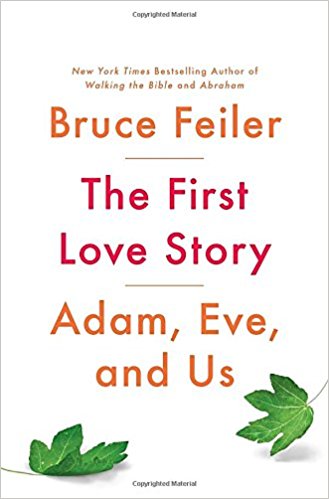 The First Love Story: Adam and Eve and Us Bruce Feiler (The Penguin Press)$28.00 I’ve already mentioned this national best-seller a time or two and I want to remind you that it is nearly the quintessential book of fun, informative, non-fiction. We don’t know where to put a book like this in the store – yes, it’s good for self-help type readers as it is about marriage and relationships, gender and sexuality. But yet, we don’t think it quite fits in with our marriage books and it isn’t a full-on memoir. He’s an upbeat reporter, intrepid, happily investigating his topic, exploring by travel, taking us along, offering tales and insight as he discovers insights from often unusual sources. And, yes, it is sort of a memoir, with Feiler chronicling his days traveling around the ancient Near East. (Who literally goes looking for Eden, except maybe archeologists and nut-jobs, for crying out loud – what a hoot!) And although it is about Adam and Eve, it isn’t a Scripture commentary, so it doesn’t go there on our shelves. Its nonfiction reporting, offering history and science and philosophy and Bible study and travelogue and storytelling and marriage advise along the way. This book is fun, and it is helpful. What a good book to take on vacation with just enough bold storytelling and just enough serious content, shared by a respected and talented writer. Creative non-fiction, fun summer reads, learning with a laugh. Get The First Love Story, and then backtrack and read other books by this wonderful, upbeat, educated author.
The First Love Story: Adam and Eve and Us Bruce Feiler (The Penguin Press)$28.00 I’ve already mentioned this national best-seller a time or two and I want to remind you that it is nearly the quintessential book of fun, informative, non-fiction. We don’t know where to put a book like this in the store – yes, it’s good for self-help type readers as it is about marriage and relationships, gender and sexuality. But yet, we don’t think it quite fits in with our marriage books and it isn’t a full-on memoir. He’s an upbeat reporter, intrepid, happily investigating his topic, exploring by travel, taking us along, offering tales and insight as he discovers insights from often unusual sources. And, yes, it is sort of a memoir, with Feiler chronicling his days traveling around the ancient Near East. (Who literally goes looking for Eden, except maybe archeologists and nut-jobs, for crying out loud – what a hoot!) And although it is about Adam and Eve, it isn’t a Scripture commentary, so it doesn’t go there on our shelves. Its nonfiction reporting, offering history and science and philosophy and Bible study and travelogue and storytelling and marriage advise along the way. This book is fun, and it is helpful. What a good book to take on vacation with just enough bold storytelling and just enough serious content, shared by a respected and talented writer. Creative non-fiction, fun summer reads, learning with a laugh. Get The First Love Story, and then backtrack and read other books by this wonderful, upbeat, educated author.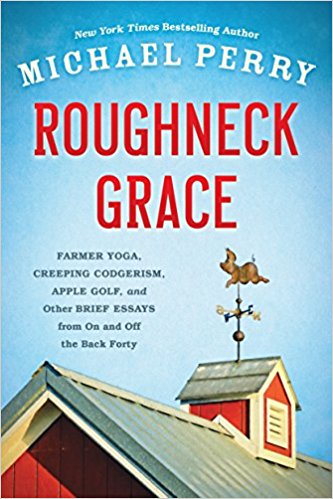 Roughneck Grace: Farmer Yoga, Creeping Codgerism, Apple Golf, and Other Brief Essays from On and Off the Back Forty Michael Perry (Wisconsin Historical Society Press) $18.95 I know I mentioned this before, but Beth, my wife and Heart & Minds partner, has declared this her favorite reading experience of the year -and, man, does she love her Fredrik Backman; she’s still talking about that man Ove and she finished Beartown in like a day. But she’s a big Michael Perry fan and I, too, want to chime in saying how much I admire this great, great writer. Almost everyone I know who gives Perry a try enjoys him, and his full-length nonfiction romps through rural life – Coop, Truck, Population 483, Meeting Tom. He is known for funny storytelling mixed with really poignant observations about life and times and things that matter most (including a nearly palpable sense of his being an earnestly good father, the kind of dad I admit I wish I had been.) This collection of brief essays from his Sunday Wisconsin State Journal column is a perfect introduction to Perry’s oddball look at life and his touching writing style. It would be a great book to take with you if your heading out this summer, or a good one to read a bit each night, perhaps outside on a lawn chair.
Roughneck Grace: Farmer Yoga, Creeping Codgerism, Apple Golf, and Other Brief Essays from On and Off the Back Forty Michael Perry (Wisconsin Historical Society Press) $18.95 I know I mentioned this before, but Beth, my wife and Heart & Minds partner, has declared this her favorite reading experience of the year -and, man, does she love her Fredrik Backman; she’s still talking about that man Ove and she finished Beartown in like a day. But she’s a big Michael Perry fan and I, too, want to chime in saying how much I admire this great, great writer. Almost everyone I know who gives Perry a try enjoys him, and his full-length nonfiction romps through rural life – Coop, Truck, Population 483, Meeting Tom. He is known for funny storytelling mixed with really poignant observations about life and times and things that matter most (including a nearly palpable sense of his being an earnestly good father, the kind of dad I admit I wish I had been.) This collection of brief essays from his Sunday Wisconsin State Journal column is a perfect introduction to Perry’s oddball look at life and his touching writing style. It would be a great book to take with you if your heading out this summer, or a good one to read a bit each night, perhaps outside on a lawn chair.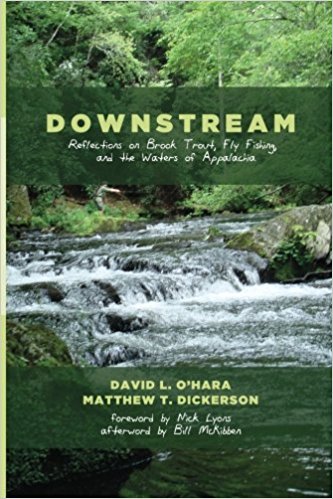 Downstream: Reflections on Brook Trout, Fly Fishing and the Waters of Appalachia David L. O’Hara & Matthew T. Dickerson (Cascade Books) $18.00 In creating this list of fun reads for summer, I didn’t mean to suggest they’d all be silly or funny. This one, for instance, is charming but wonderfully written, by two seriously Christian environmentalists, fishermen, and scholars. O’Hara is a professor of philosophy at Augustana College (he has written for the Chronicle of Higher Education, the late, great, Books & Culture, and the literary environmental journal, Orion.) Dickerson is a professor at Middlebury College and prolific as a writer of literary works about C.S. Lewis and Tolkien, a wonderful survey of epic fantasy (From Homer to Harry Potter) and a trilogy of his own creative fantasy. I say all this to assure you that this is thoughtful and mature, sophisticated, even, in vision and literary quality. But yet, at the end of the day, it is a set of narratives about fishing (including some wonderful pages about Central Pennsylvania, for those that know Spruce Creek and Bald Eagle Creek and Spring Creek near State College. There is an afterword, by the way, by their friend the nature writer and activist Bill McKibben who – although not a fisher himself – says:
Downstream: Reflections on Brook Trout, Fly Fishing and the Waters of Appalachia David L. O’Hara & Matthew T. Dickerson (Cascade Books) $18.00 In creating this list of fun reads for summer, I didn’t mean to suggest they’d all be silly or funny. This one, for instance, is charming but wonderfully written, by two seriously Christian environmentalists, fishermen, and scholars. O’Hara is a professor of philosophy at Augustana College (he has written for the Chronicle of Higher Education, the late, great, Books & Culture, and the literary environmental journal, Orion.) Dickerson is a professor at Middlebury College and prolific as a writer of literary works about C.S. Lewis and Tolkien, a wonderful survey of epic fantasy (From Homer to Harry Potter) and a trilogy of his own creative fantasy. I say all this to assure you that this is thoughtful and mature, sophisticated, even, in vision and literary quality. But yet, at the end of the day, it is a set of narratives about fishing (including some wonderful pages about Central Pennsylvania, for those that know Spruce Creek and Bald Eagle Creek and Spring Creek near State College. There is an afterword, by the way, by their friend the nature writer and activist Bill McKibben who – although not a fisher himself – says: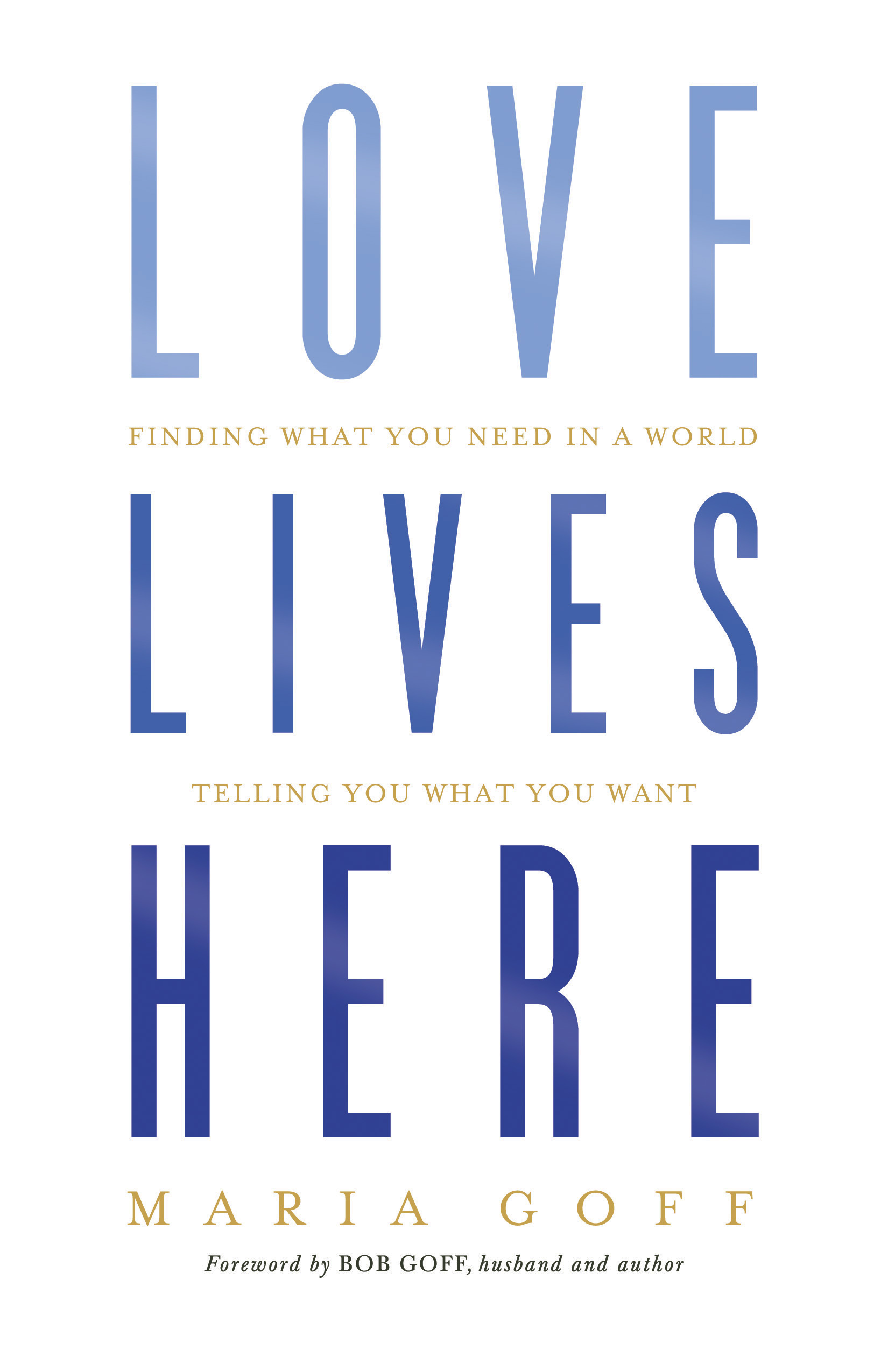 Love Lives Here: Finding What You Need in a World Telling You What You Want Maria Goff (B+H) $17.99 I hope you know Love Does by Bob Goff, a book that would go on this list in a heartbeat if I haven’t mentioned it so often before. Goff is fun, funny, inspiring, profound, even, even though his book is loaded with whimiscal antics and love-you-neighbor shenanigans. He mentions his Sweet Maria often in his books and talks, even though she rarely goes with him to wage peace in war zones or to start a school in Uganda or when he uses his high-powered lawyer skills to chase down child traffickers. She’s a ying to his yang, I suppose, and an introvert to his super, super extroverted outgoing style. She says Bob is “all gas and no break” and “his favorite number of people to be with is more.” Her, not so much. It even surprised me to hear she was writing a book.
Love Lives Here: Finding What You Need in a World Telling You What You Want Maria Goff (B+H) $17.99 I hope you know Love Does by Bob Goff, a book that would go on this list in a heartbeat if I haven’t mentioned it so often before. Goff is fun, funny, inspiring, profound, even, even though his book is loaded with whimiscal antics and love-you-neighbor shenanigans. He mentions his Sweet Maria often in his books and talks, even though she rarely goes with him to wage peace in war zones or to start a school in Uganda or when he uses his high-powered lawyer skills to chase down child traffickers. She’s a ying to his yang, I suppose, and an introvert to his super, super extroverted outgoing style. She says Bob is “all gas and no break” and “his favorite number of people to be with is more.” Her, not so much. It even surprised me to hear she was writing a book.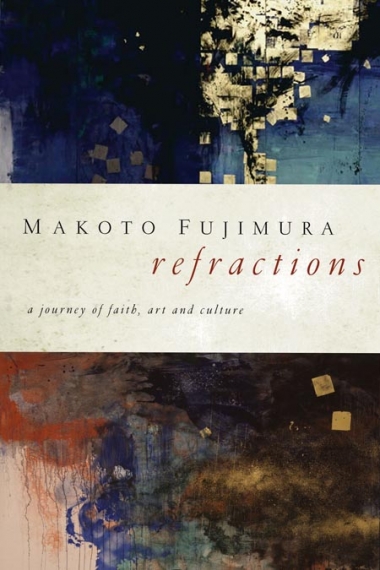 Refractions: A Journey of Faith, Art, and Culture Makoto Fujimura (NavPress) $24.99 Many of our friends now of our fondness for the art and the art advocacy of the esteemed Japanese-American abstract painter, Mako Fujimura. We have promoted his books over the years, including a wonderful small book called Soliloquies showing his art in comparison with reproductions of some previously un-shown works of George Rouault, his serious study of suffering in the Endo novel Silence (entitled Silence and Beauty) and his broad and wise manifesto of faith-based cultural renewal called Culture Care. This older book, though, is in ways lighter, more fun, more engaging than any of those – as good and wonderful and important as they truly are. This very handsome paperback book (it includes much of his early work, nicely reproduced on heavier glossy paper) is a set of almost 30 reflections, ruminations — “refractions” he calls them. Consider them a collection of essays or an anthology of his early writings about faith, culture, life, joy, sorrow, awe… Some were written after the 9-11 attack near his home in Manhattan, and through the displacement and grief of those months he helped organize some public spaces for art to be created and displayed, so there are some essays about that, heavy but glorious, about aesthetics and peace and suffering and hope. But other pieces are about films or novels or art shows or making good stuff for the common good; there is an essay on paper, a story about experiencing Christmas in Japan, a lovely refraction on Peter Pan, among other things.
Refractions: A Journey of Faith, Art, and Culture Makoto Fujimura (NavPress) $24.99 Many of our friends now of our fondness for the art and the art advocacy of the esteemed Japanese-American abstract painter, Mako Fujimura. We have promoted his books over the years, including a wonderful small book called Soliloquies showing his art in comparison with reproductions of some previously un-shown works of George Rouault, his serious study of suffering in the Endo novel Silence (entitled Silence and Beauty) and his broad and wise manifesto of faith-based cultural renewal called Culture Care. This older book, though, is in ways lighter, more fun, more engaging than any of those – as good and wonderful and important as they truly are. This very handsome paperback book (it includes much of his early work, nicely reproduced on heavier glossy paper) is a set of almost 30 reflections, ruminations — “refractions” he calls them. Consider them a collection of essays or an anthology of his early writings about faith, culture, life, joy, sorrow, awe… Some were written after the 9-11 attack near his home in Manhattan, and through the displacement and grief of those months he helped organize some public spaces for art to be created and displayed, so there are some essays about that, heavy but glorious, about aesthetics and peace and suffering and hope. But other pieces are about films or novels or art shows or making good stuff for the common good; there is an essay on paper, a story about experiencing Christmas in Japan, a lovely refraction on Peter Pan, among other things.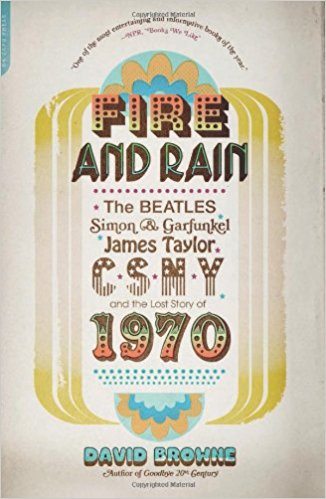 Fire and Rain: The Beatles, Simon and Garfunkel, James Taylor, CSNY and the Lost Story of 1970 David Browne (De Capo Press) $16.00 This wonderful book may not appeal to most of our readers, but if you have any interest in the late 1960s as they morphed into the early 70s, as seen through the most popular pop stars and the biggest-selling albums of that era, this book will hold your interest and bring loads of insight from the very first page. I lived through that era and this music truly is among my all-time favorites. Reading this was beyond fun, it was deeply meaningful and interesting and even though I knew every and artist and album mentioned, the studio musicians, even most of the producers, I learned so much about my one-time heroes. And, wow, there’s a lot to learn.
Fire and Rain: The Beatles, Simon and Garfunkel, James Taylor, CSNY and the Lost Story of 1970 David Browne (De Capo Press) $16.00 This wonderful book may not appeal to most of our readers, but if you have any interest in the late 1960s as they morphed into the early 70s, as seen through the most popular pop stars and the biggest-selling albums of that era, this book will hold your interest and bring loads of insight from the very first page. I lived through that era and this music truly is among my all-time favorites. Reading this was beyond fun, it was deeply meaningful and interesting and even though I knew every and artist and album mentioned, the studio musicians, even most of the producers, I learned so much about my one-time heroes. And, wow, there’s a lot to learn.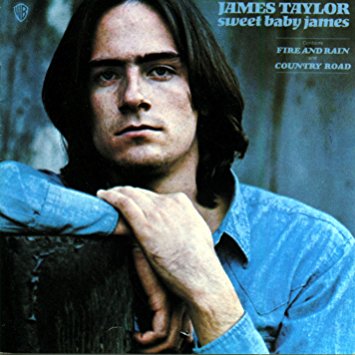 Crosby and Songs for Beginners by Graham Nash. And Stills, with that odd stuffed giraffe on the cover. In the background of all if this is, sometimes literally, (well, yes, Joni Mitchell) was none other than a rising star named James Taylor. Most of his fans know his first (unsuccessful) album was the first release on the Beatles own fated Apple Records; his drug and mental health problems plagued him even as he became the number one singer-songwriter in the world. Did you know that three or four other acts had covered “Fire and Rain” before his label released it as a single in February of 1970?
Crosby and Songs for Beginners by Graham Nash. And Stills, with that odd stuffed giraffe on the cover. In the background of all if this is, sometimes literally, (well, yes, Joni Mitchell) was none other than a rising star named James Taylor. Most of his fans know his first (unsuccessful) album was the first release on the Beatles own fated Apple Records; his drug and mental health problems plagued him even as he became the number one singer-songwriter in the world. Did you know that three or four other acts had covered “Fire and Rain” before his label released it as a single in February of 1970?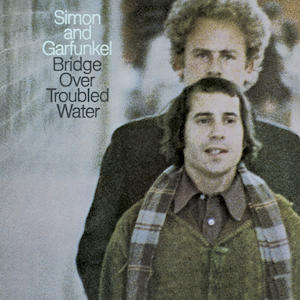 the rise of counterculture, anti-war activism, and back-to-nature communes. (Even Dylan went country with his Nashville Skyline album.) From the campus uprisings of 68 and 69, the nihilistic, terrorist bombings of The Weatherman, the horrific Manson murders, the massacre of students at Kent State by the National Guard, to the oddly calm campus culture in the fall of 1970, Browne, a long-time journalist for Rolling Stone, tells the story of the shift in music, too Did the rise of quieter singer-songwriters like Cat Stevens and Carol King and, of course, James Taylor, help tone down the uprisings and protests, or did the calmer times give rise to more introspective sounds? (Ahh, the old question about art and culture, shaping or reflecting the zeitgeist?)
the rise of counterculture, anti-war activism, and back-to-nature communes. (Even Dylan went country with his Nashville Skyline album.) From the campus uprisings of 68 and 69, the nihilistic, terrorist bombings of The Weatherman, the horrific Manson murders, the massacre of students at Kent State by the National Guard, to the oddly calm campus culture in the fall of 1970, Browne, a long-time journalist for Rolling Stone, tells the story of the shift in music, too Did the rise of quieter singer-songwriters like Cat Stevens and Carol King and, of course, James Taylor, help tone down the uprisings and protests, or did the calmer times give rise to more introspective sounds? (Ahh, the old question about art and culture, shaping or reflecting the zeitgeist?)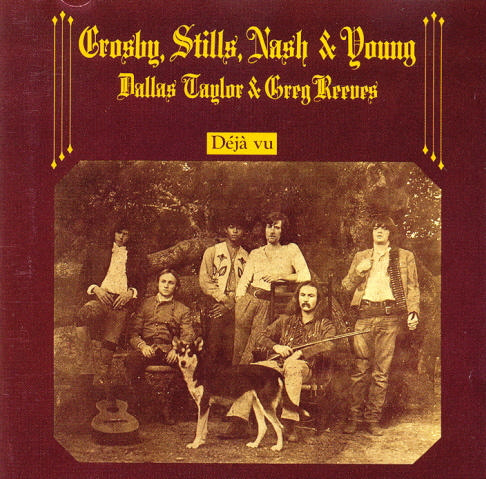
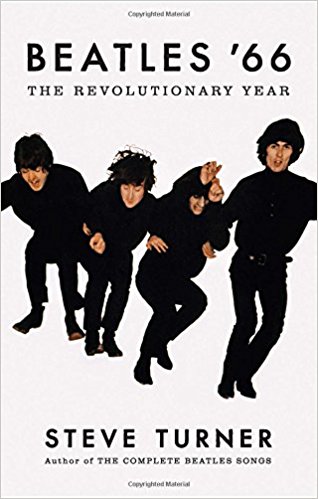 Beatles ’66: The Revolutionary Year Steve Turner (Ecco) $27.99 I can’t talk about that 1970s Fire and Rain book that features a lot about the Beatles breaking up and going solo without giving a shout out to the respected rock critic Steve Turner and his amazing book about the making of a “new” Beatles image, the year, he says, everything changed. As the subtitle insists, the most revolutionary year for the fab four was 1966. Turner knows the Beatles well, and has written mainstream, respected stuff on the backstories of their songs. He also has a fascinating book called The Gospel According to the Beatles and several great books on a Christian view of the arts, such as the recently re-issued, expanded Imagine: A Vision for Christians in the Arts and the very helpful PopCultured:
Beatles ’66: The Revolutionary Year Steve Turner (Ecco) $27.99 I can’t talk about that 1970s Fire and Rain book that features a lot about the Beatles breaking up and going solo without giving a shout out to the respected rock critic Steve Turner and his amazing book about the making of a “new” Beatles image, the year, he says, everything changed. As the subtitle insists, the most revolutionary year for the fab four was 1966. Turner knows the Beatles well, and has written mainstream, respected stuff on the backstories of their songs. He also has a fascinating book called The Gospel According to the Beatles and several great books on a Christian view of the arts, such as the recently re-issued, expanded Imagine: A Vision for Christians in the Arts and the very helpful PopCultured: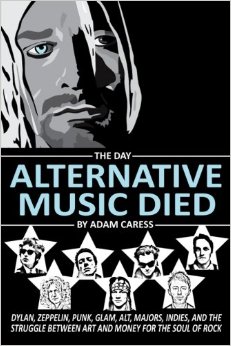 The Day Alternative Music Died: Dylan, Zeppelin, Punk, Glam, Alt, Majors, Indies, and the Struggle Between Art and Money for the Soul of Rock Adam Caress (New Troy Books) $16.99 I reviewed this a year or so ago when it first came out, and then we named it one of the best books of 2015. I cannot review it in full here so commend
The Day Alternative Music Died: Dylan, Zeppelin, Punk, Glam, Alt, Majors, Indies, and the Struggle Between Art and Money for the Soul of Rock Adam Caress (New Troy Books) $16.99 I reviewed this a year or so ago when it first came out, and then we named it one of the best books of 2015. I cannot review it in full here so commend 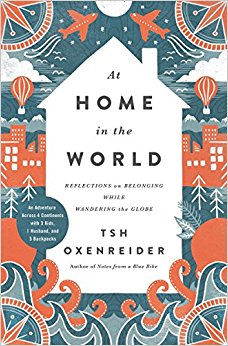 At Home in the World: Reflections on Belonging While Wandering Around the Globe Tsh Oxenreider (Nelson) $22.99 The subtitle is “And Adventure Across 4 Continents with 3 Kids, 1 Husband, and 5 Backpacks.” You know how I wrote above how I don’t buy fancy wine, but enjoyed that book about winemaking? Ditto with this: I don’t travel, let alone with backpacks and kids, but I so enjoy books that take us vicariously on these remarkable journeys. This is a handsome, wonderfully-crafted, generous, and thought-provoking story. Shauna Niequist – no slouch of a traveler or writer herself – says that At Home in the World is “A beautiful reminder of how travel shapes us, how beautiful the world is, and how parenting doesn’t need to mean the end of adventuring.” Jefferson Bethke wisely says, “This isn’t a stereotypical travel memoir about ‘finding yourself’ – it’s about a family that adventures because they already have.” It’s a really good read, perfect for your summer days, especially if you don’t get to go on such wild adventures. Highly recommended, with pleasure.
At Home in the World: Reflections on Belonging While Wandering Around the Globe Tsh Oxenreider (Nelson) $22.99 The subtitle is “And Adventure Across 4 Continents with 3 Kids, 1 Husband, and 5 Backpacks.” You know how I wrote above how I don’t buy fancy wine, but enjoyed that book about winemaking? Ditto with this: I don’t travel, let alone with backpacks and kids, but I so enjoy books that take us vicariously on these remarkable journeys. This is a handsome, wonderfully-crafted, generous, and thought-provoking story. Shauna Niequist – no slouch of a traveler or writer herself – says that At Home in the World is “A beautiful reminder of how travel shapes us, how beautiful the world is, and how parenting doesn’t need to mean the end of adventuring.” Jefferson Bethke wisely says, “This isn’t a stereotypical travel memoir about ‘finding yourself’ – it’s about a family that adventures because they already have.” It’s a really good read, perfect for your summer days, especially if you don’t get to go on such wild adventures. Highly recommended, with pleasure.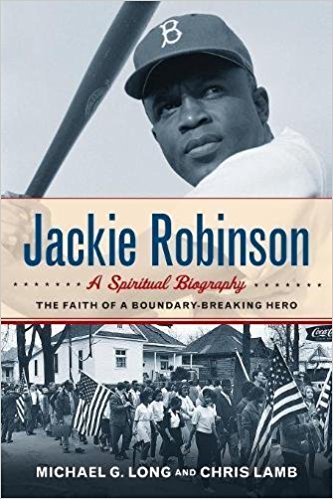
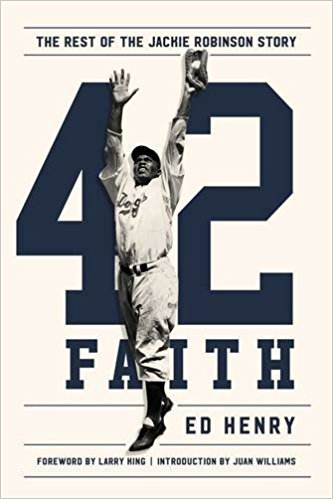 42 Faith: The Rest of the Jackie Robinson Story Ed Henry (Nelson) $24.99 and
42 Faith: The Rest of the Jackie Robinson Story Ed Henry (Nelson) $24.99 and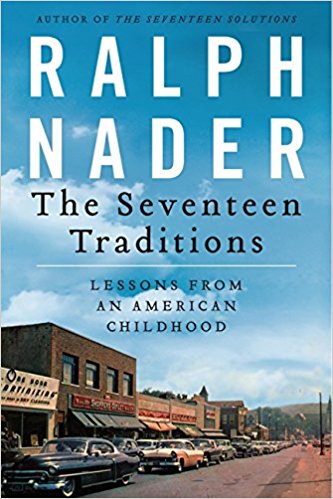 The Seventeen Traditions: Lessons from an American Childhood Ralph Nader (Harper) $13.99 The politicos among us might know Nader’s manifesto, The Seventeen Solutions. You surely know Nader as a consumer activist, a liberal-leaning populist, a leader cited by The Atlantic as one of the hundred most influential figures in American history. This is part memoir, part civics lesson, part a reminiscence of when families taught stuff like the tradition of listening, the tradition of charity, the tradition of civics, work, patriotism, simple enjoyment. Such family traditions, Nader says, “challenge the notion that the fads, technologies, how-to manuals, and addictions of modern life have somehow taken the place of the time-tested wisdom fashioned in the crucibles of earlier generations.”
The Seventeen Traditions: Lessons from an American Childhood Ralph Nader (Harper) $13.99 The politicos among us might know Nader’s manifesto, The Seventeen Solutions. You surely know Nader as a consumer activist, a liberal-leaning populist, a leader cited by The Atlantic as one of the hundred most influential figures in American history. This is part memoir, part civics lesson, part a reminiscence of when families taught stuff like the tradition of listening, the tradition of charity, the tradition of civics, work, patriotism, simple enjoyment. Such family traditions, Nader says, “challenge the notion that the fads, technologies, how-to manuals, and addictions of modern life have somehow taken the place of the time-tested wisdom fashioned in the crucibles of earlier generations.”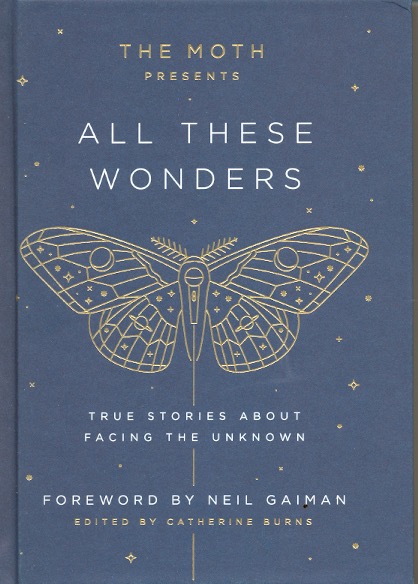 The Moth Presents: All These Wonders: True Stories About Facing the Unknown Foreword by Neil Gaiman (Crown Archtype) $25.00 I suppose you have heard of The Moth Radio Hour, put together by Atlantic Public Media. It is simply a cultural phenomenon, a modern-day storytelling festival on public radio. All These Wonders presents forty-five unforgettable true stories about risk, courage, and facing the unknown, drawn from “the best ever told on (The Moth’s) stages.” As it says on the back cover, these talks have been “adapted to the page to preserve the raw energy of live storytelling.” These stories feature voices familiar and new, speaking with pathos and humor, bravery and a touch of weirdness. When we wanted to list fun books for summer, I knew I wanted to highlight this – truth sometimes is stranger than fiction, and honest testimonials of human courage can sometimes be the most important things we can enjoy taking in.
The Moth Presents: All These Wonders: True Stories About Facing the Unknown Foreword by Neil Gaiman (Crown Archtype) $25.00 I suppose you have heard of The Moth Radio Hour, put together by Atlantic Public Media. It is simply a cultural phenomenon, a modern-day storytelling festival on public radio. All These Wonders presents forty-five unforgettable true stories about risk, courage, and facing the unknown, drawn from “the best ever told on (The Moth’s) stages.” As it says on the back cover, these talks have been “adapted to the page to preserve the raw energy of live storytelling.” These stories feature voices familiar and new, speaking with pathos and humor, bravery and a touch of weirdness. When we wanted to list fun books for summer, I knew I wanted to highlight this – truth sometimes is stranger than fiction, and honest testimonials of human courage can sometimes be the most important things we can enjoy taking in. 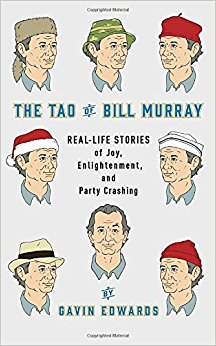 The Tao of Bill Murray: Real Life Stories of Joy, Enlightenment, and Party Crashing Gavin Edwards (Random House) $26.00 What an odd book. As Danny Rubin, screen writer of Groundhog Day says, “Reading The Tao of Bill Murray is like spending time with Bill, but probably safer.” No one will ever believer you” is the famous line Bill Murray says when he shows up at somebody’s wedding reception or hospital room or pickup basketball game. The famous actor’s adventure off screen are, for some, as entertaining as his movies, and his antics rival the most popular of popular culture. Is there some plan behind all this, some point, something earnest and real? This book insists that it is “more than just a collection of wacky anecdotes.” It puts the actor’s public clowning around into a larger context. It has plenty of celebrity gossip and movie-set stories, but it is also a “sideways mix of comedy and philosophy.” I’m not endorsing Murray’s behavior, let alone his philosophy of life, whatever it is. But this is a fun book full of surprises and maybe even some insight. Here’s what I wonder: what would it be like if Bob Goff, author of Love Does and popular storyteller and advocate of whimsical escapades for Christ ever met Bill Murray. Who would surprise whom? Ha.
The Tao of Bill Murray: Real Life Stories of Joy, Enlightenment, and Party Crashing Gavin Edwards (Random House) $26.00 What an odd book. As Danny Rubin, screen writer of Groundhog Day says, “Reading The Tao of Bill Murray is like spending time with Bill, but probably safer.” No one will ever believer you” is the famous line Bill Murray says when he shows up at somebody’s wedding reception or hospital room or pickup basketball game. The famous actor’s adventure off screen are, for some, as entertaining as his movies, and his antics rival the most popular of popular culture. Is there some plan behind all this, some point, something earnest and real? This book insists that it is “more than just a collection of wacky anecdotes.” It puts the actor’s public clowning around into a larger context. It has plenty of celebrity gossip and movie-set stories, but it is also a “sideways mix of comedy and philosophy.” I’m not endorsing Murray’s behavior, let alone his philosophy of life, whatever it is. But this is a fun book full of surprises and maybe even some insight. Here’s what I wonder: what would it be like if Bob Goff, author of Love Does and popular storyteller and advocate of whimsical escapades for Christ ever met Bill Murray. Who would surprise whom? Ha. 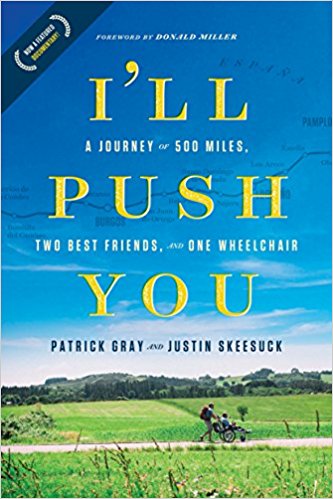 I’ll Push You: A Journey of 500 Miles, Two Best Friends, and One Wheelchair Patrick Gray & Justin Skeesuck (Tyndale) $15.99 I can’t wait to read this – maybe I’ll tell you more later in the year once I do. But I’m telling you, it looks just fantastic. A trusted friend inside its large publishing house assured me that it was his favorite book of the many they’ve released this season. There’s a documentary about the guys, too, that got some buzz at a few festivals, I’m told. It’s said to be “full of love, humor and faith” which sounds, I know, a bit tame. But I’m telling you now: this is a book about two life-long buddies, one now in a wheelchair, who go on a spiritual pilgrimage on the legendary (and difficult, I’m told) Camino de Santiago spiritual pilgrimage through the rough terrain of northern Spain. There must be a dozen books on the Camino, and the trail and the pilgrimage was made more popular by the wonderful movie with Martin Sheen called The Walk. This new book looks like a lovely and even powerful read, with pictures, a discussion guide, and a website full of extra content.
I’ll Push You: A Journey of 500 Miles, Two Best Friends, and One Wheelchair Patrick Gray & Justin Skeesuck (Tyndale) $15.99 I can’t wait to read this – maybe I’ll tell you more later in the year once I do. But I’m telling you, it looks just fantastic. A trusted friend inside its large publishing house assured me that it was his favorite book of the many they’ve released this season. There’s a documentary about the guys, too, that got some buzz at a few festivals, I’m told. It’s said to be “full of love, humor and faith” which sounds, I know, a bit tame. But I’m telling you now: this is a book about two life-long buddies, one now in a wheelchair, who go on a spiritual pilgrimage on the legendary (and difficult, I’m told) Camino de Santiago spiritual pilgrimage through the rough terrain of northern Spain. There must be a dozen books on the Camino, and the trail and the pilgrimage was made more popular by the wonderful movie with Martin Sheen called The Walk. This new book looks like a lovely and even powerful read, with pictures, a discussion guide, and a website full of extra content. 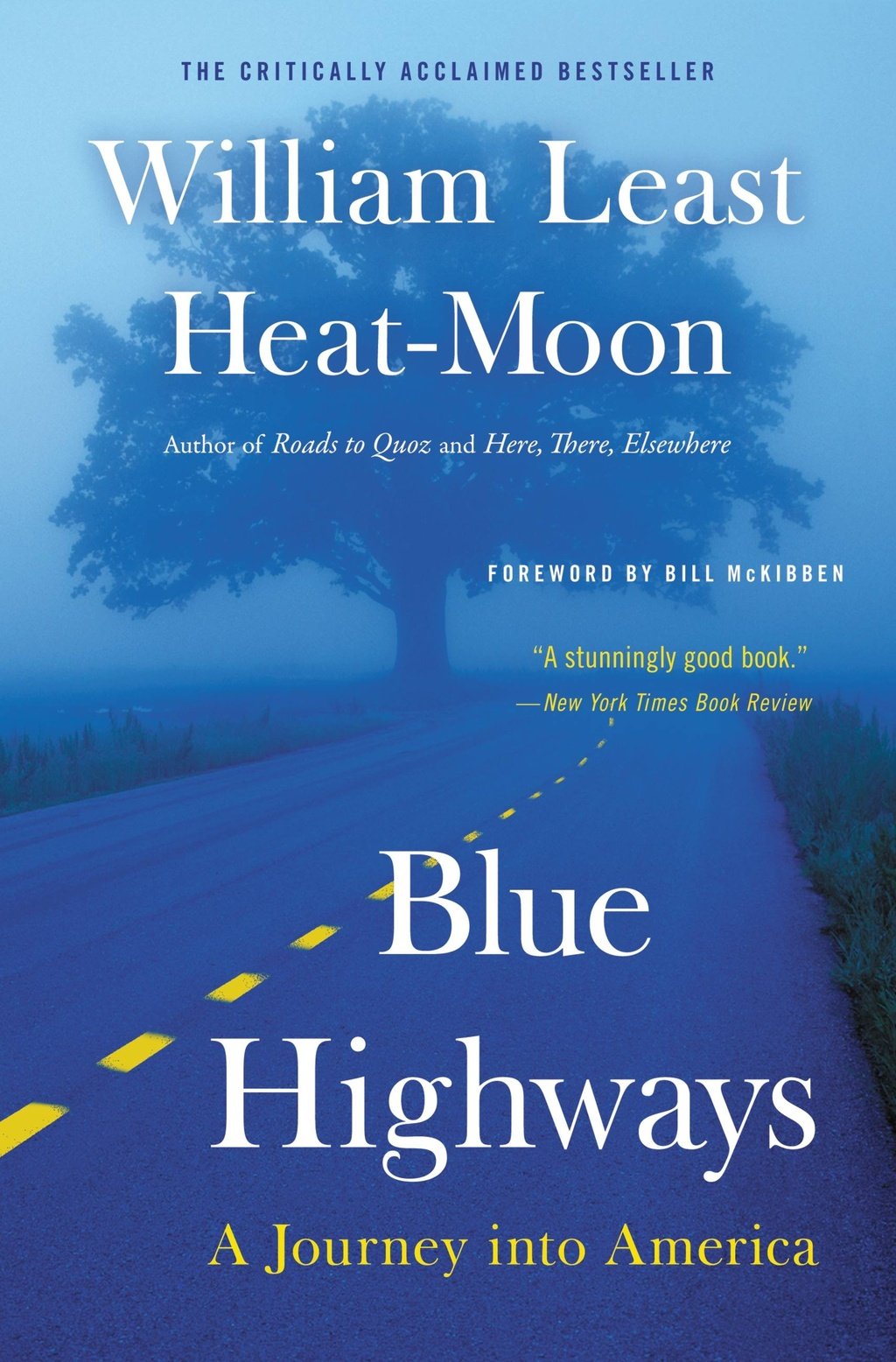 Blue Highways: A Journey to America William Least Heat-Moon (Back Bay Books) $16.00 This book was a huge bestseller when it was released in the early 1980s, and we so enjoyed stocking it then. Back then, as now, folks are sometimes surprised to see books that aren’t on Christian publishing houses or aren’t “religious” on the shelves of a Christian bookstore. This was a book that we’d tell folks about for the sheer joy of it, the profundity of the journey, the great writing. It is considered a masterpiece of American travel writing; it is an exploration of backroads. Annie Dillard says, “Heat-Moon is a witty, generous, sophisticated, and democratic observer. His modesty, kindly humor, and his uncanny gift of catching good people at good moments make Blue Highways a joy to read.”
Blue Highways: A Journey to America William Least Heat-Moon (Back Bay Books) $16.00 This book was a huge bestseller when it was released in the early 1980s, and we so enjoyed stocking it then. Back then, as now, folks are sometimes surprised to see books that aren’t on Christian publishing houses or aren’t “religious” on the shelves of a Christian bookstore. This was a book that we’d tell folks about for the sheer joy of it, the profundity of the journey, the great writing. It is considered a masterpiece of American travel writing; it is an exploration of backroads. Annie Dillard says, “Heat-Moon is a witty, generous, sophisticated, and democratic observer. His modesty, kindly humor, and his uncanny gift of catching good people at good moments make Blue Highways a joy to read.” 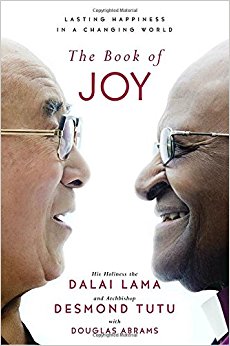
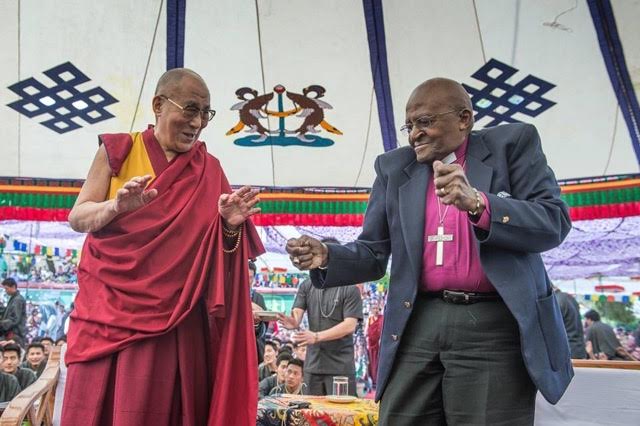 The Book of Joy: Lasting Happiness in a Changing World the Dalai Lama & Desmond Tutu (Avery) $26.00
The Book of Joy: Lasting Happiness in a Changing World the Dalai Lama & Desmond Tutu (Avery) $26.00 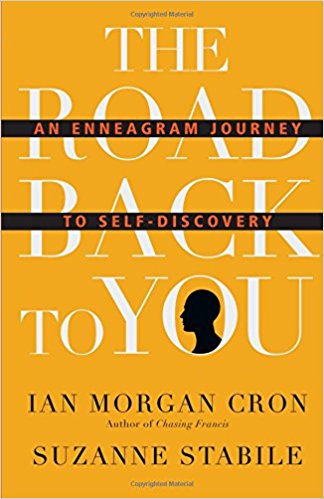 The Road Back to You: An Enneagram Journey to Self-Discovery Ian Cron & Suzanne Stabile (IVP) $24.00 As I was creating this list of fun non-fiction, making a case that learning can be uplifting and that we can read stuff for the sheer fun of it, but also be inspired along the way, I right away knew I wanted to include this. Yes, it is about the enneagram, so you might think it is a nearly tedious methodology to practice some self-discernment, being coming more self-aware about your deepest motivations (perhaps even drawing from your deepest hurts.) And you would be right about the self-awareness stuff, but it isn’t tedious at all. Yes, this could be described as ancient psychology meeting contemplative spirituality. Yes, it sounds a little weird if you aren’t used to it. But trust me: this makes the Meyers-Briggs tests seem dry and mechanical by comparison. In the hands of these two very clever writers, this topic comes alive. The Road Back to You is a ton of fun, offers lots of healthy insight and a bunch of stories. A whole lot of stories. Some of the stories are funny, a few are very touching, and a lot of them will help you know yourself more accurately and live better, with greater centeredness and, I suspect, a greater joy. It’s not about joy, per say, but it offers a window into knowing yourself in a way that sure is interesting. It’s a curiously popular book, in part because it is a fun read. Check it out.
The Road Back to You: An Enneagram Journey to Self-Discovery Ian Cron & Suzanne Stabile (IVP) $24.00 As I was creating this list of fun non-fiction, making a case that learning can be uplifting and that we can read stuff for the sheer fun of it, but also be inspired along the way, I right away knew I wanted to include this. Yes, it is about the enneagram, so you might think it is a nearly tedious methodology to practice some self-discernment, being coming more self-aware about your deepest motivations (perhaps even drawing from your deepest hurts.) And you would be right about the self-awareness stuff, but it isn’t tedious at all. Yes, this could be described as ancient psychology meeting contemplative spirituality. Yes, it sounds a little weird if you aren’t used to it. But trust me: this makes the Meyers-Briggs tests seem dry and mechanical by comparison. In the hands of these two very clever writers, this topic comes alive. The Road Back to You is a ton of fun, offers lots of healthy insight and a bunch of stories. A whole lot of stories. Some of the stories are funny, a few are very touching, and a lot of them will help you know yourself more accurately and live better, with greater centeredness and, I suspect, a greater joy. It’s not about joy, per say, but it offers a window into knowing yourself in a way that sure is interesting. It’s a curiously popular book, in part because it is a fun read. Check it out. 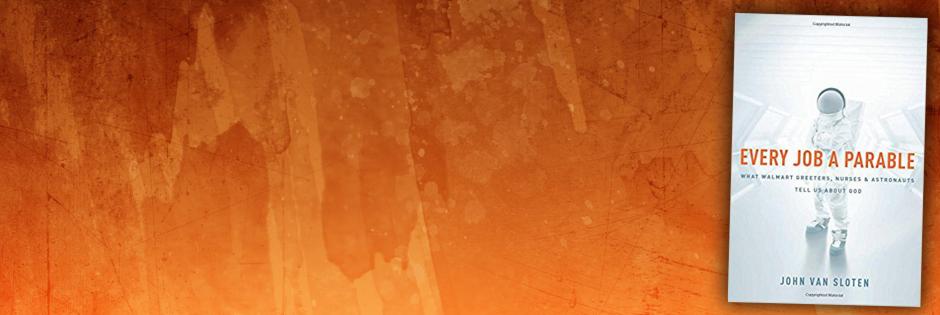 Every Job a Parable: What Walmart Greeters, Nurses & Astronauts Tell Us About God John Van Sloten (NavPress) $14.99
Every Job a Parable: What Walmart Greeters, Nurses & Astronauts Tell Us About God John Van Sloten (NavPress) $14.99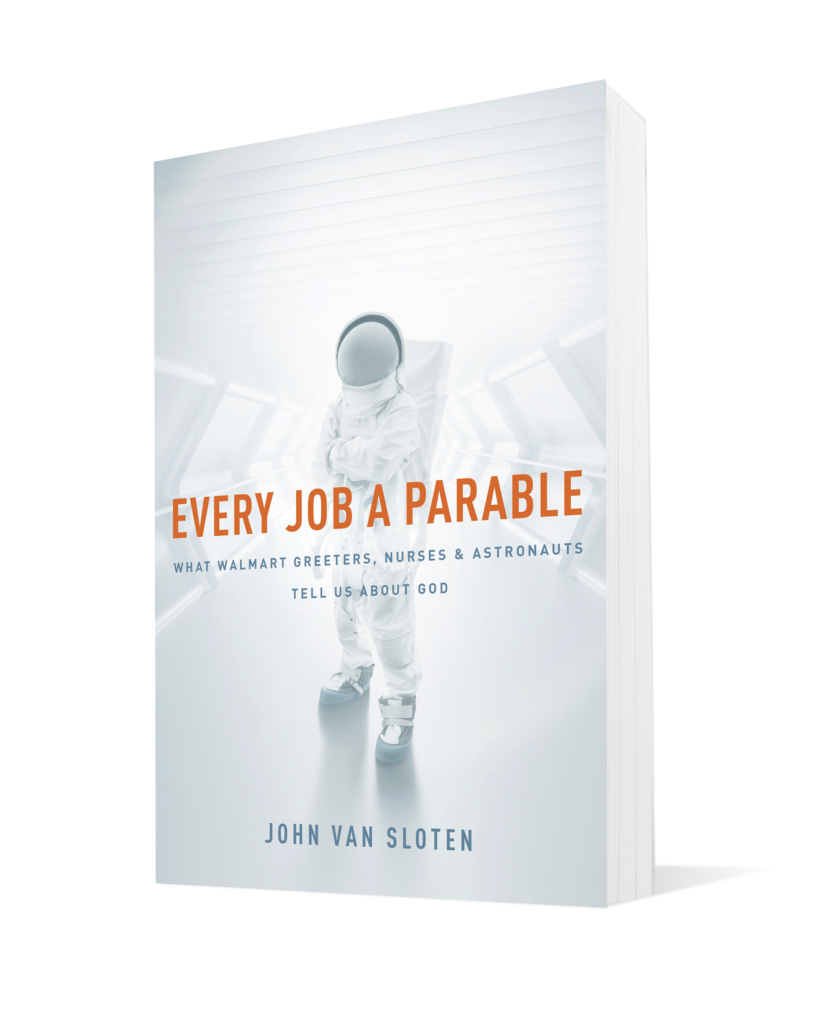
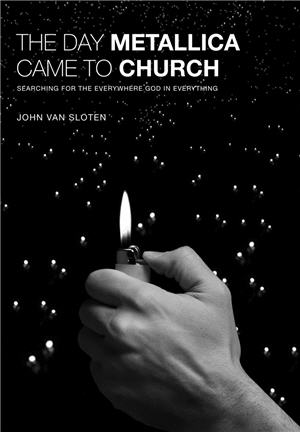
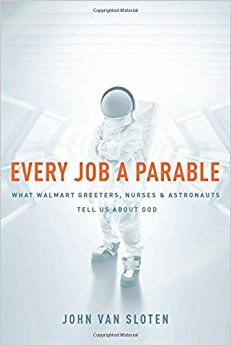

 down-to-Earth stuff, imaging God in this good if fallen world. But, yet, by mirroring God and partnering with God, we can indeed experience God in the midst of all this: it is not merely that we work and honor God in this task of being human. We honor God and serve the common good and learn more about God by observing the very structures of reality and the ways different jobs work. Just like the Bible says we can learn something about God from the stars or from other aspects of creation (Job suggests we talk to the fish and Isaiah says farmers are instructed by God how to learn about seeds!) Van Sloten says we can learn about God by opening our eyes and seeing what’s going on in our workplaces. Work is an icon, work is a parable, work is a school for spiritual formation, work is the venue for knowing God.
down-to-Earth stuff, imaging God in this good if fallen world. But, yet, by mirroring God and partnering with God, we can indeed experience God in the midst of all this: it is not merely that we work and honor God in this task of being human. We honor God and serve the common good and learn more about God by observing the very structures of reality and the ways different jobs work. Just like the Bible says we can learn something about God from the stars or from other aspects of creation (Job suggests we talk to the fish and Isaiah says farmers are instructed by God how to learn about seeds!) Van Sloten says we can learn about God by opening our eyes and seeing what’s going on in our workplaces. Work is an icon, work is a parable, work is a school for spiritual formation, work is the venue for knowing God.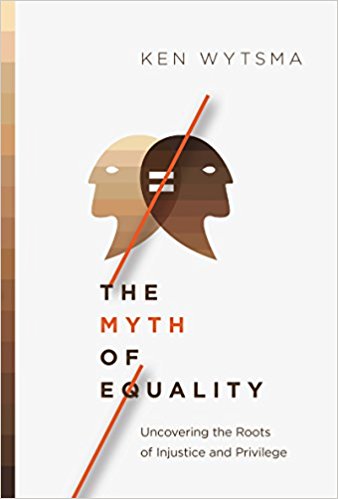 The Myth of Equality: Uncovering the Roots of Injustice and Privilege Ken Wytsma (IVP) regularly $18.00 ON SALE NOW 20% off our sale price $14.40
The Myth of Equality: Uncovering the Roots of Injustice and Privilege Ken Wytsma (IVP) regularly $18.00 ON SALE NOW 20% off our sale price $14.40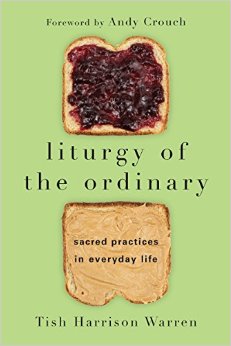 litanies and prayers around communion, we learn to welcome all to God’s table. My confessing our sins week by week we get in the habit of being those who are able to lament and own up to sin in and around us. By listening well to a sermon, you deepen your habit of being a life-long learner. You get the point: this wonderful book that reads like a memoir shows us how to translate worship theory and practice into ordinary living. At its best, good worship reminds us of God’s presence, announces Christ’s victory, and imagines the Kingdom coming, equipping us to serve well in the world. However – and here’s why I mention it – even in good churches with good rituals and healthy worship habits and solid preaching, I’m afraid we still don’t get around to hearing much about this stuff on most Sundays. We need all the help we can learning about and being responsible within our racially troubled times. Being formed in worship well we should want to learn more, to be better servants of Christ in the world, we should desire to be better at loving our neighbors. If you are worshiping well, and wanting to serve God with wisdom and vigor, you should want to buy some books and think this stuff through. Amen?)
litanies and prayers around communion, we learn to welcome all to God’s table. My confessing our sins week by week we get in the habit of being those who are able to lament and own up to sin in and around us. By listening well to a sermon, you deepen your habit of being a life-long learner. You get the point: this wonderful book that reads like a memoir shows us how to translate worship theory and practice into ordinary living. At its best, good worship reminds us of God’s presence, announces Christ’s victory, and imagines the Kingdom coming, equipping us to serve well in the world. However – and here’s why I mention it – even in good churches with good rituals and healthy worship habits and solid preaching, I’m afraid we still don’t get around to hearing much about this stuff on most Sundays. We need all the help we can learning about and being responsible within our racially troubled times. Being formed in worship well we should want to learn more, to be better servants of Christ in the world, we should desire to be better at loving our neighbors. If you are worshiping well, and wanting to serve God with wisdom and vigor, you should want to buy some books and think this stuff through. Amen?)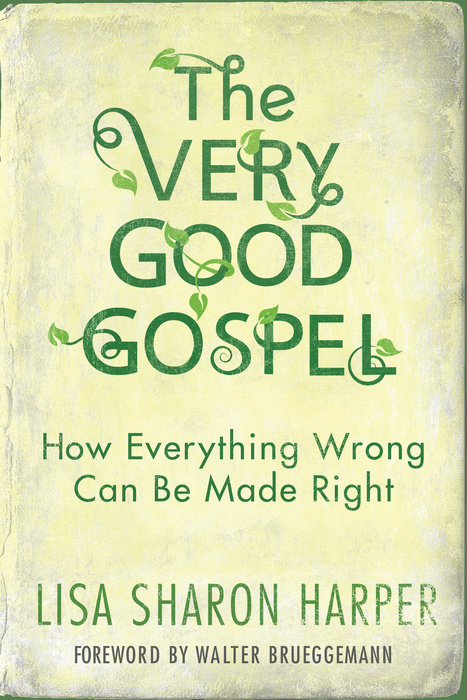 START HERE ALWAYS: THE GOSPEL IS VERY GOOD
START HERE ALWAYS: THE GOSPEL IS VERY GOOD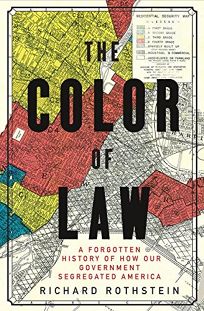 pleasure to serve you further in finding just the right couple of books on this topic.
pleasure to serve you further in finding just the right couple of books on this topic.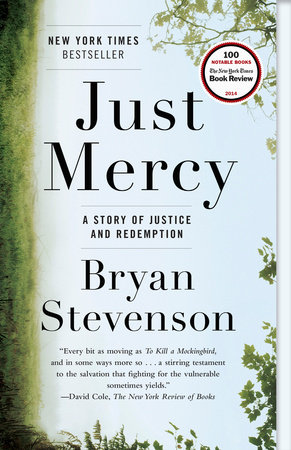
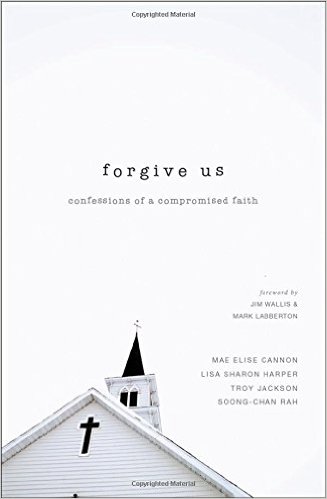
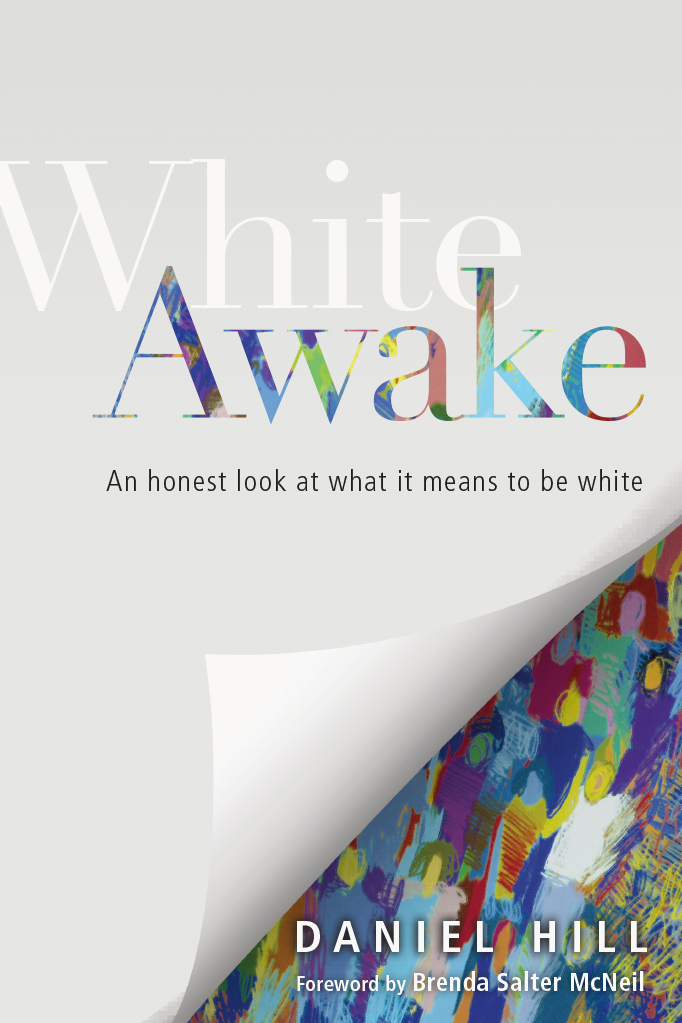
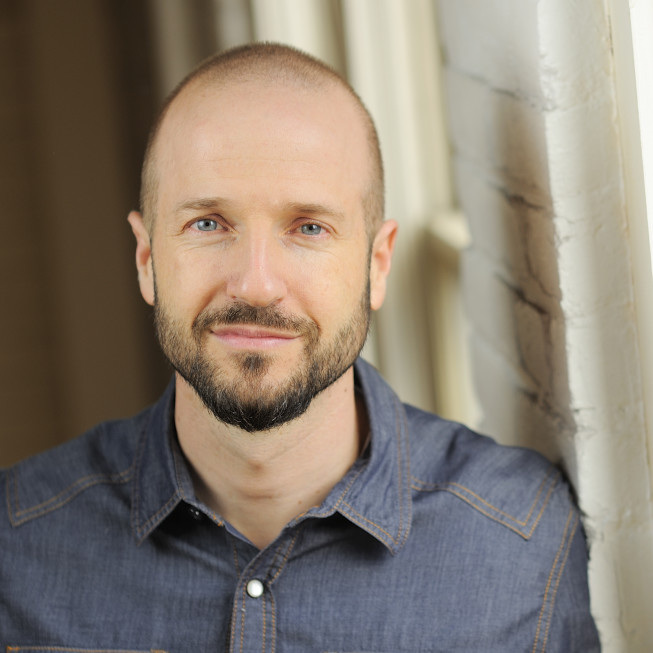
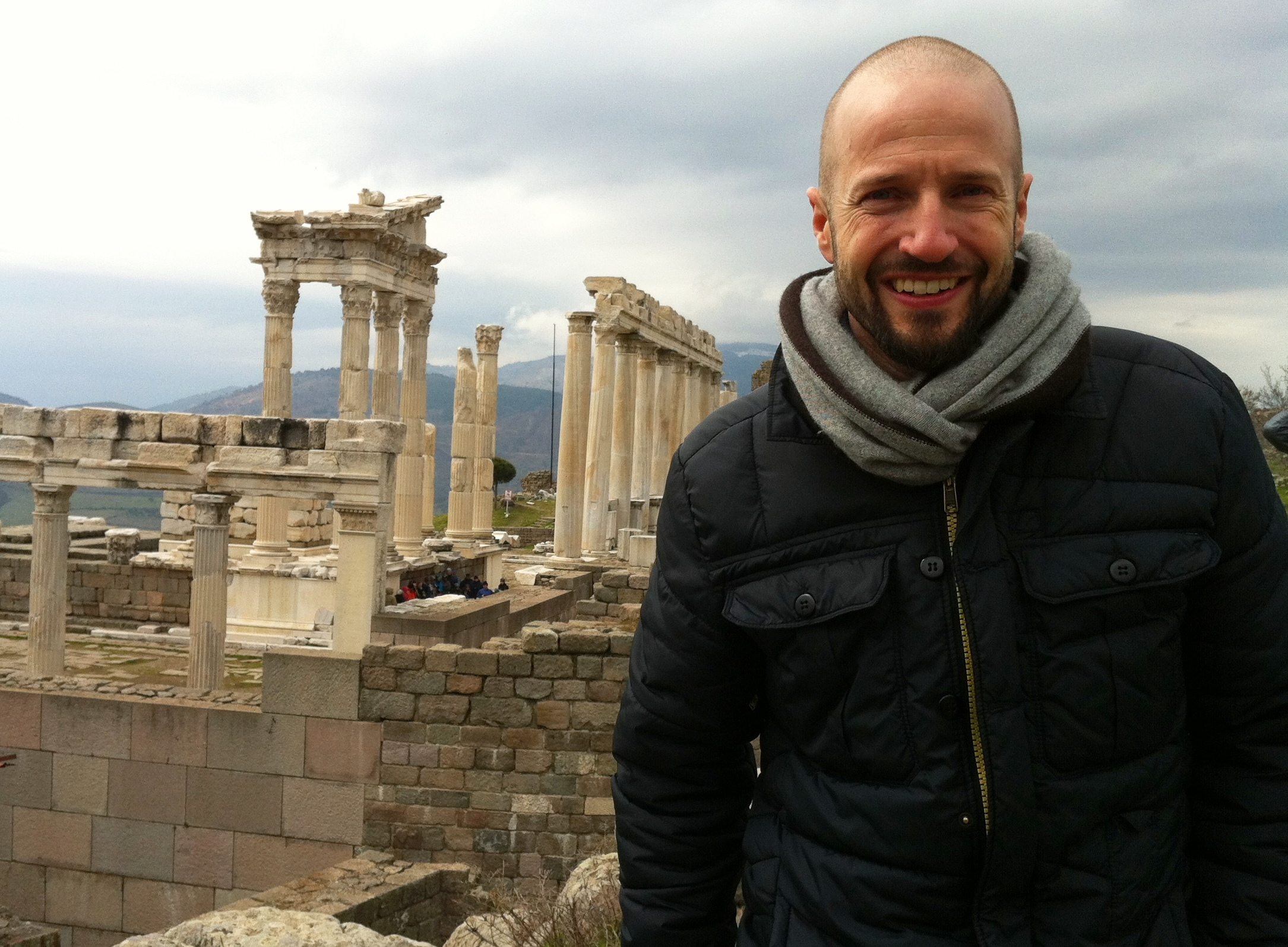 am not attempting to be the authoritative voice on race in America, and I can only really speak from a perspective of privilege and my experience. I am simply addressing a topic to which Scripture speaks clearly, a reality that in many ways has helped to shape my story. Indeed it has played a significant role in shaping the stories of all Americans, whether we know it or not. Speaking only to safe topics, where agreement comes easily, can’t be the chief goal of faithful witness. It wasn’t for Jesus.
am not attempting to be the authoritative voice on race in America, and I can only really speak from a perspective of privilege and my experience. I am simply addressing a topic to which Scripture speaks clearly, a reality that in many ways has helped to shape my story. Indeed it has played a significant role in shaping the stories of all Americans, whether we know it or not. Speaking only to safe topics, where agreement comes easily, can’t be the chief goal of faithful witness. It wasn’t for Jesus. 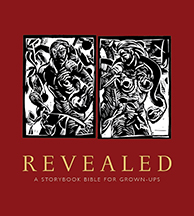 Ned himself did a workshop on print making there this weekend which gave him a chance to show off his own work as a print maker, some of which is seen in the adult Bible story book he created called Revealed: A Storybook Bible for Grown-Ups.
Ned himself did a workshop on print making there this weekend which gave him a chance to show off his own work as a print maker, some of which is seen in the adult Bible story book he created called Revealed: A Storybook Bible for Grown-Ups. 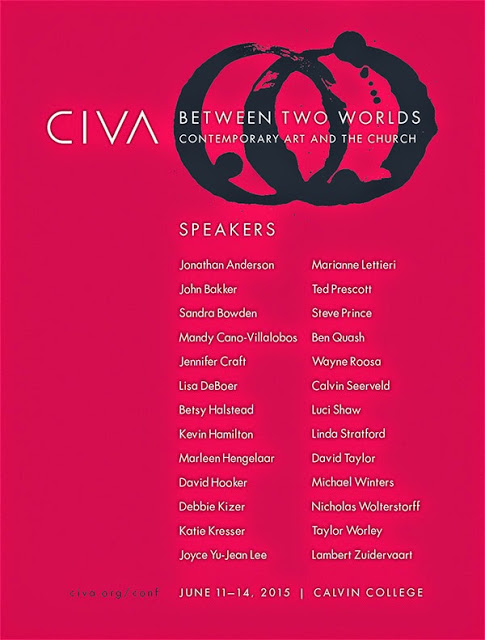
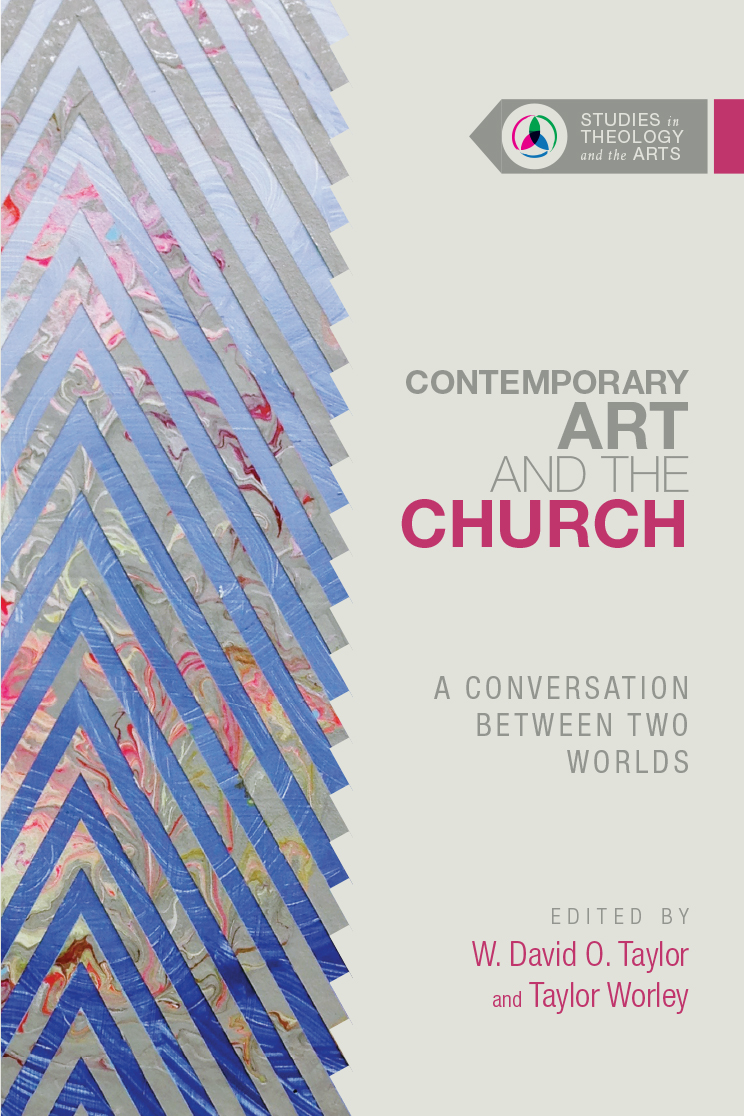
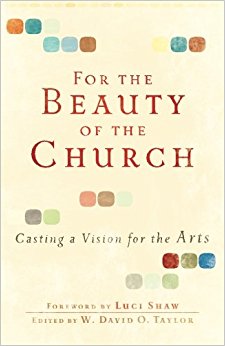 expressed in worship. W. David Taylor’s response (“What Art? Which Worship?”) is worth reading twice. You should know Taylor, by the way, as he compiled a wonderful little book for church folks interested in being more thoughtful and engaged in the arts called For the Beauty of the Church: Casting a Vision for the Art (Baker; $18.00.) He is an ordained Anglican minister and director of Fuller’s Brehm, Texas. (If some of this is new to you or your congregation, Taylor’s very approachable book includes great pieces by Eugene Peterson, Luci Shaw, Lauren Winner, Andy Crouch, John Witvliet, and Jeremy Begbie. It is the kind of book that I’d think every church should have in their church library or resource center.)
expressed in worship. W. David Taylor’s response (“What Art? Which Worship?”) is worth reading twice. You should know Taylor, by the way, as he compiled a wonderful little book for church folks interested in being more thoughtful and engaged in the arts called For the Beauty of the Church: Casting a Vision for the Art (Baker; $18.00.) He is an ordained Anglican minister and director of Fuller’s Brehm, Texas. (If some of this is new to you or your congregation, Taylor’s very approachable book includes great pieces by Eugene Peterson, Luci Shaw, Lauren Winner, Andy Crouch, John Witvliet, and Jeremy Begbie. It is the kind of book that I’d think every church should have in their church library or resource center.)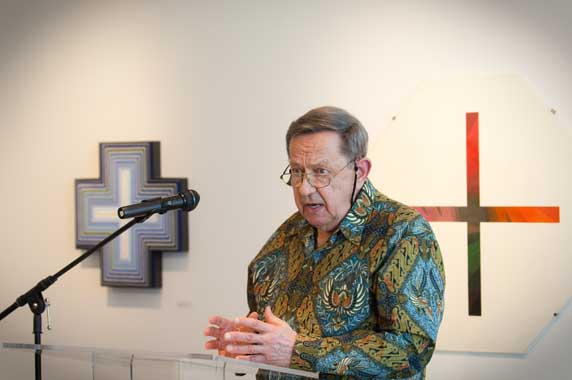
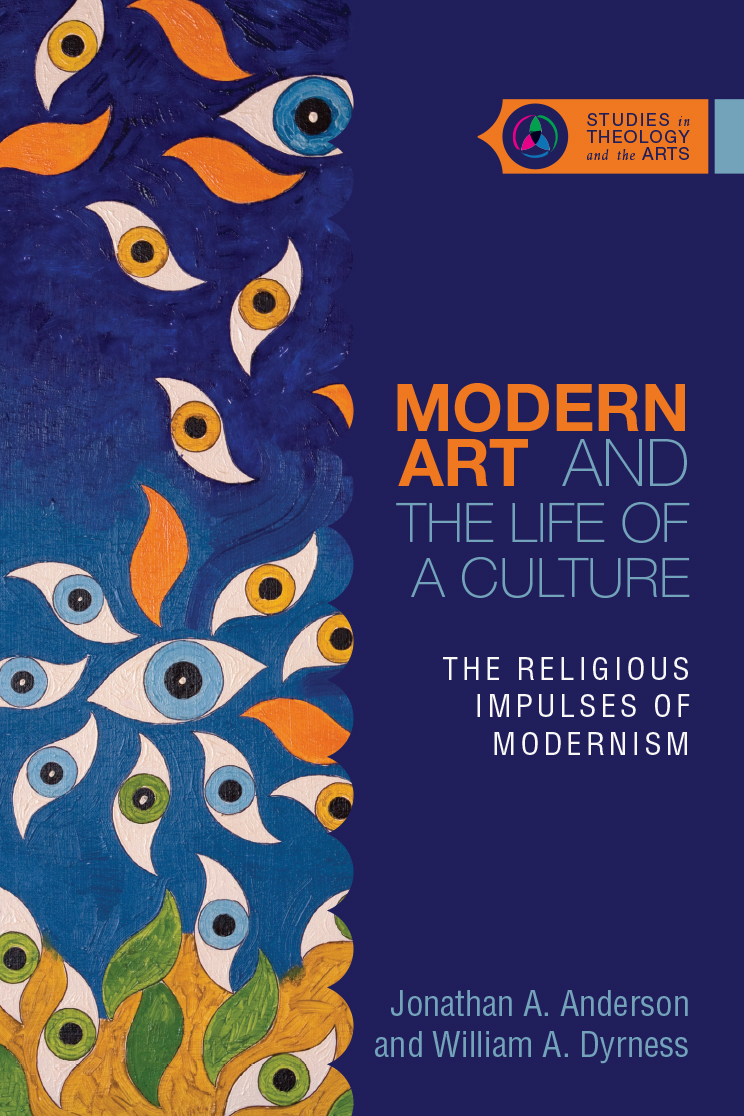
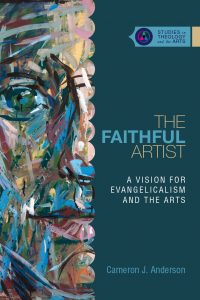 The Faithful Artist: A Vision for Evangelicalism and the Arts by Cameron J. Anderson (IVP Academic) $26.00. I mentioned earlier that Cam has a wonderful chapter in the new one. He has worked in campus ministry with faculty and grad students, has his own MFA and is now the Executive Director of Christians in the Visual Arts.
The Faithful Artist: A Vision for Evangelicalism and the Arts by Cameron J. Anderson (IVP Academic) $26.00. I mentioned earlier that Cam has a wonderful chapter in the new one. He has worked in campus ministry with faculty and grad students, has his own MFA and is now the Executive Director of Christians in the Visual Arts. 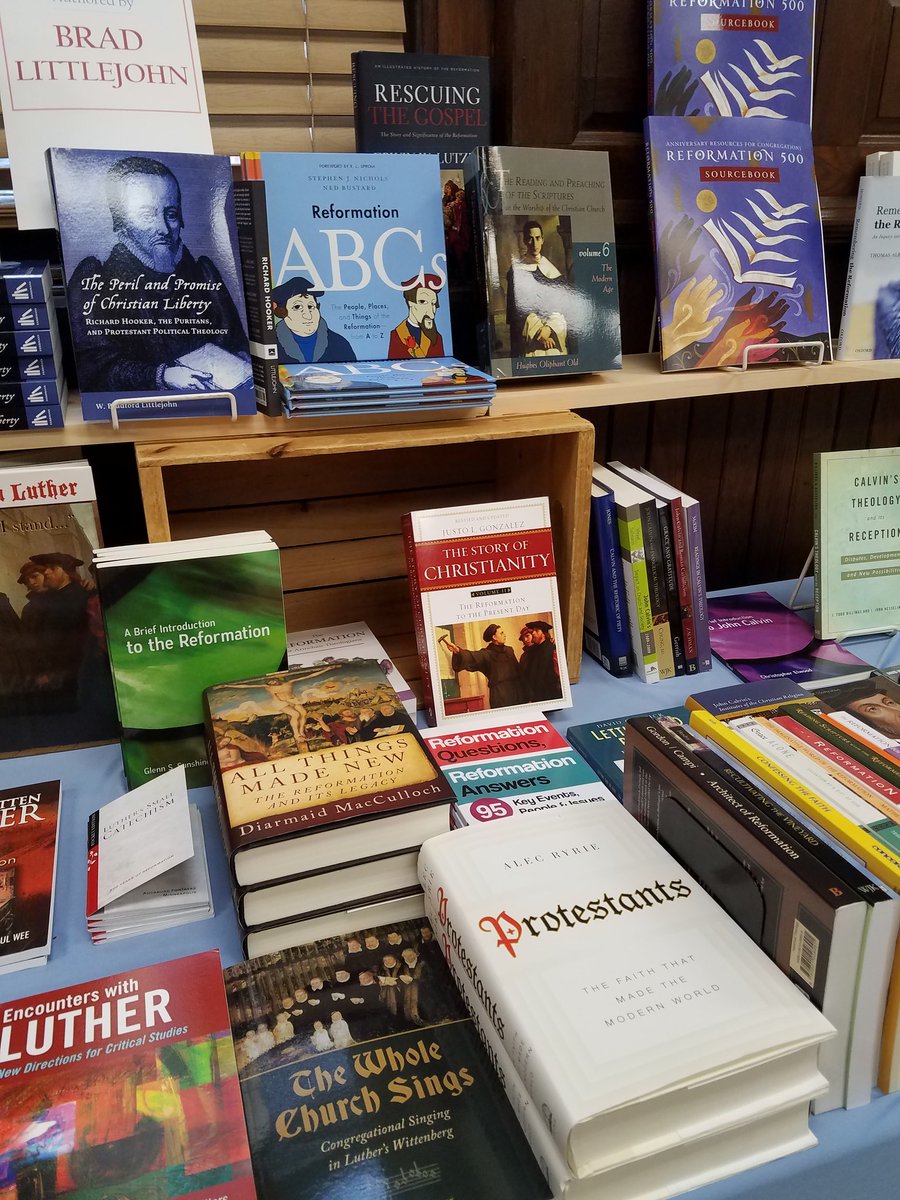
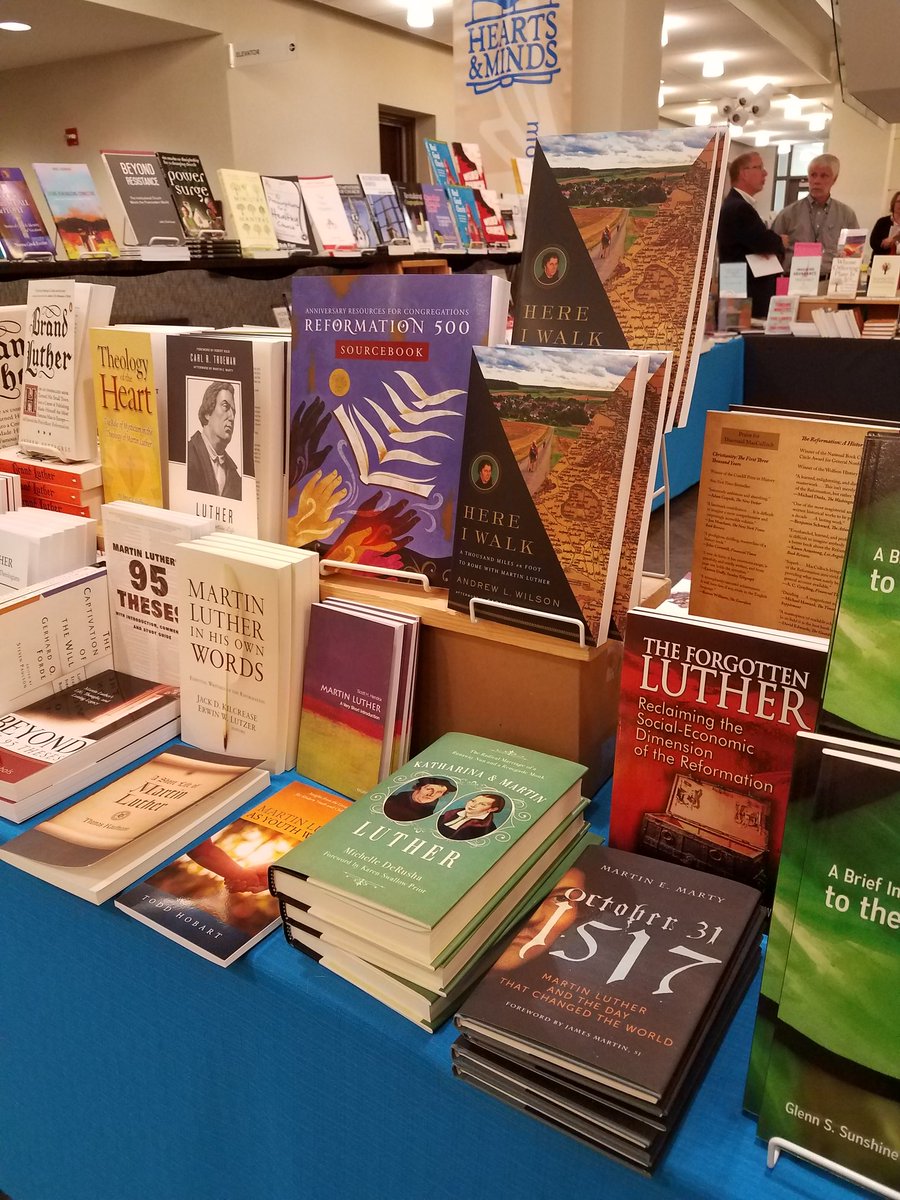
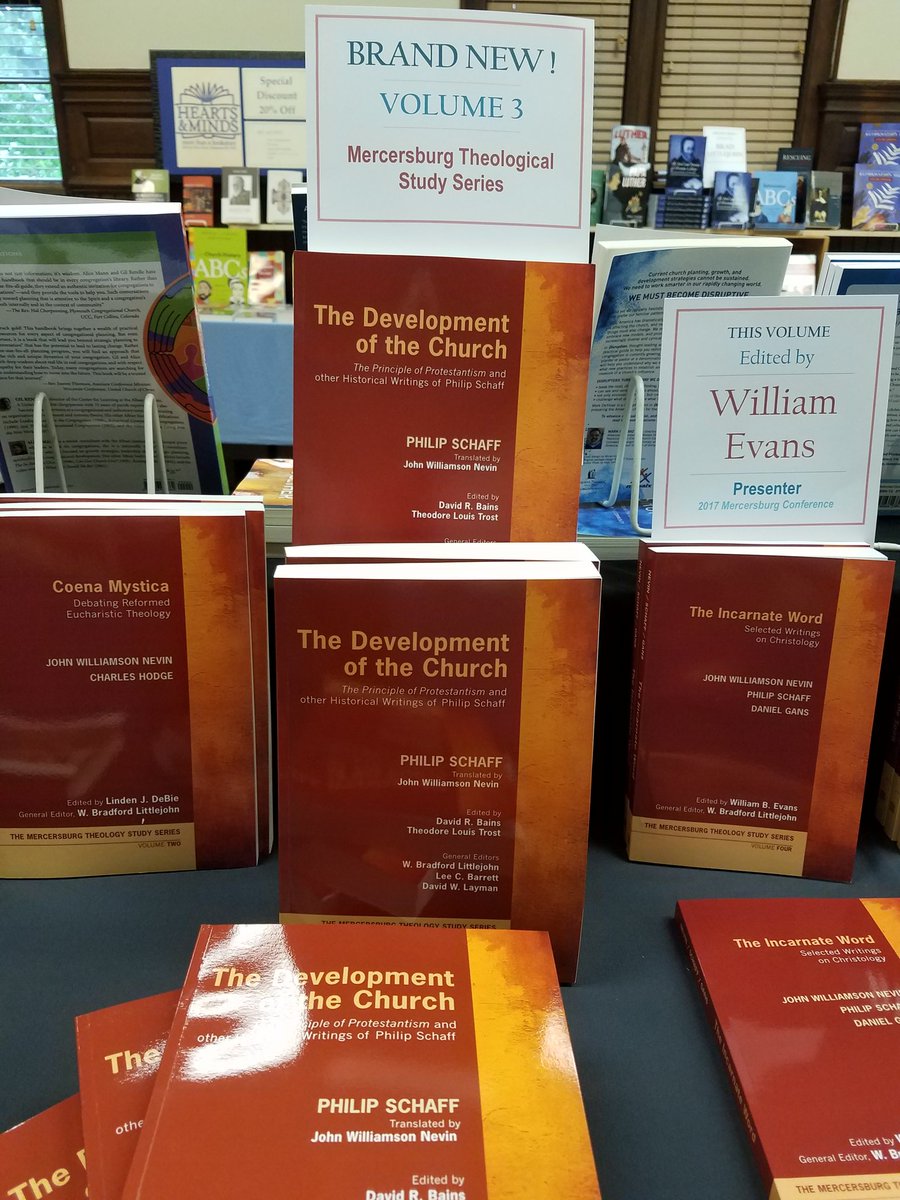
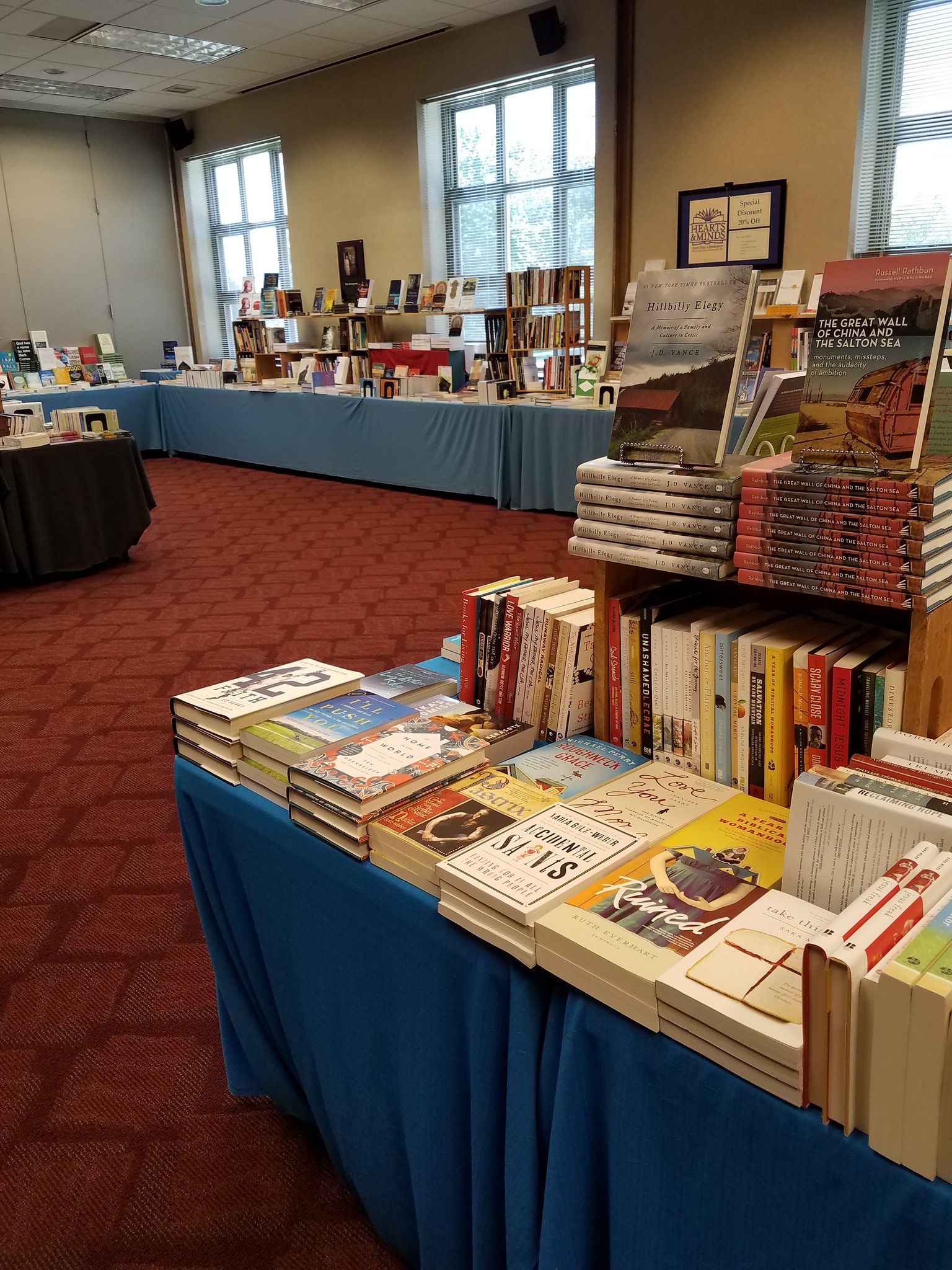
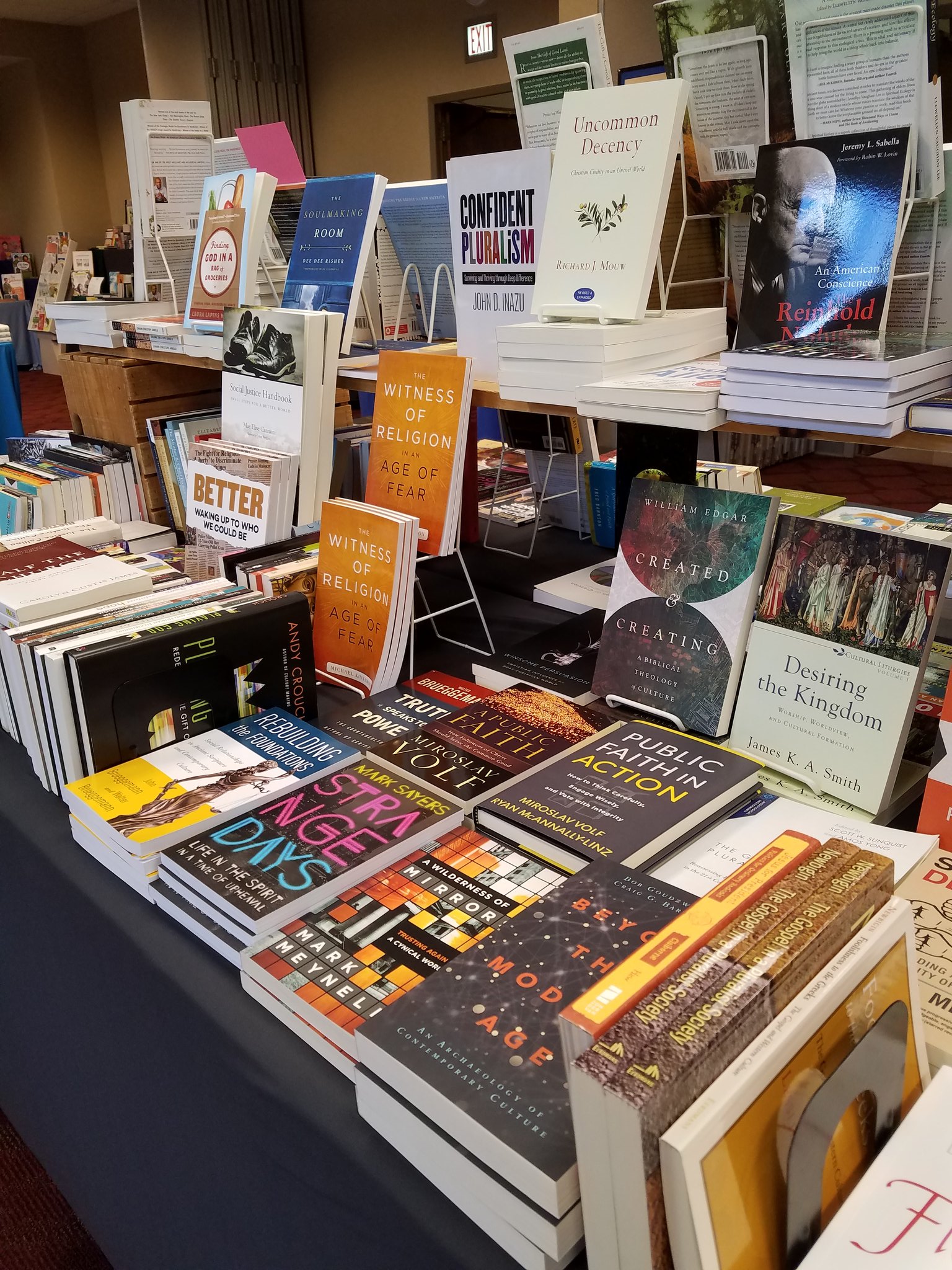
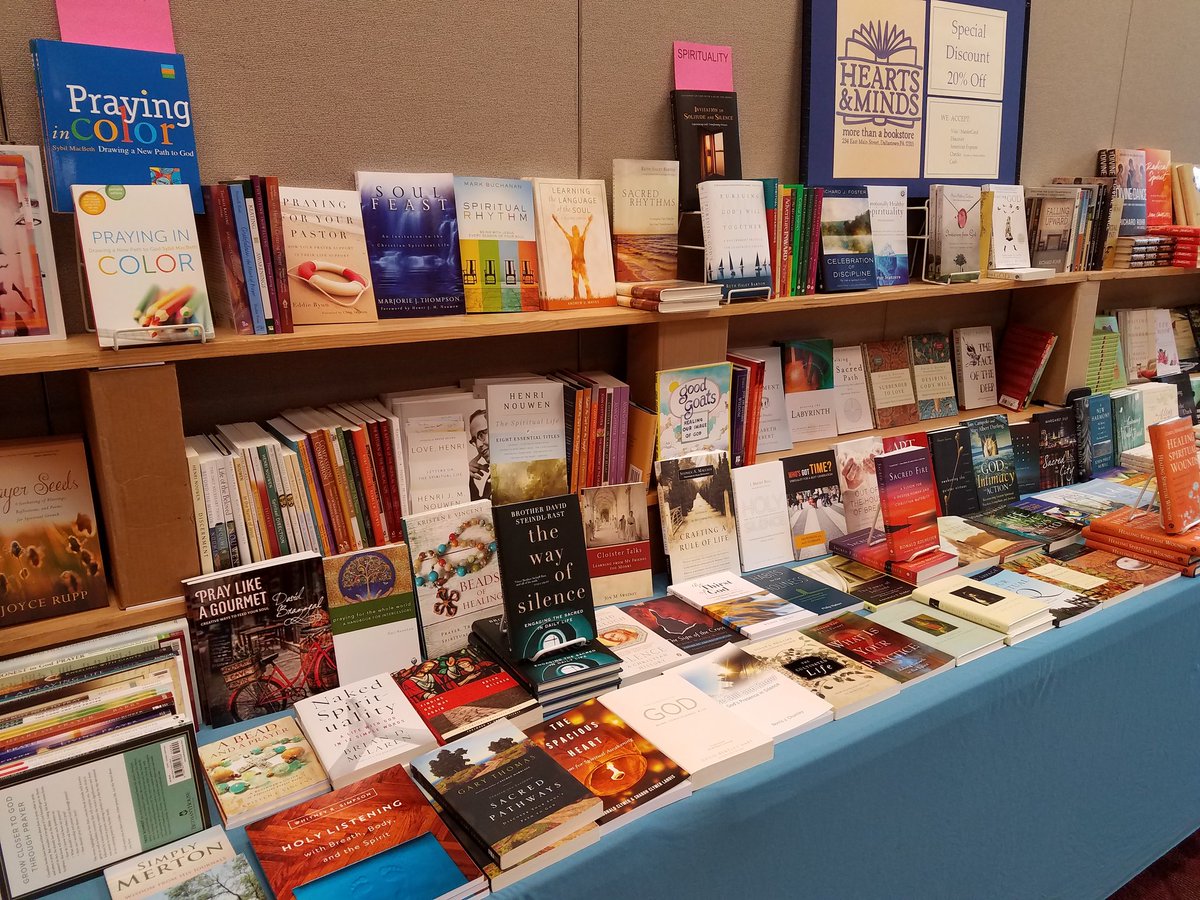
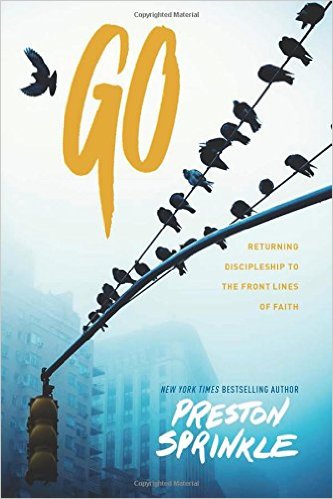 Lucado books, and other accessible evangelical authors that aren’t too progressive or odd. It makes us happy to sell books that are helpful in turning ordinary church goers into disciples of Jesus, titles like Think, Act Believe Like Jesus: Becoming a New Person in Christ by Randy Frazee or Bible studies like Discipleship Essentials by Greg Ogden or the new God Has A Name by John Mark Comer, or Eugene Peterson’s Long Obedience in the Same Direction, a classic. I was very excited when a Lutheran Synod staff member asked if we had Go: Returning Discipleship to the Front Lines of Faith, a NavPress book by Preston Sprenkle. As a matter of fact we did.
Lucado books, and other accessible evangelical authors that aren’t too progressive or odd. It makes us happy to sell books that are helpful in turning ordinary church goers into disciples of Jesus, titles like Think, Act Believe Like Jesus: Becoming a New Person in Christ by Randy Frazee or Bible studies like Discipleship Essentials by Greg Ogden or the new God Has A Name by John Mark Comer, or Eugene Peterson’s Long Obedience in the Same Direction, a classic. I was very excited when a Lutheran Synod staff member asked if we had Go: Returning Discipleship to the Front Lines of Faith, a NavPress book by Preston Sprenkle. As a matter of fact we did.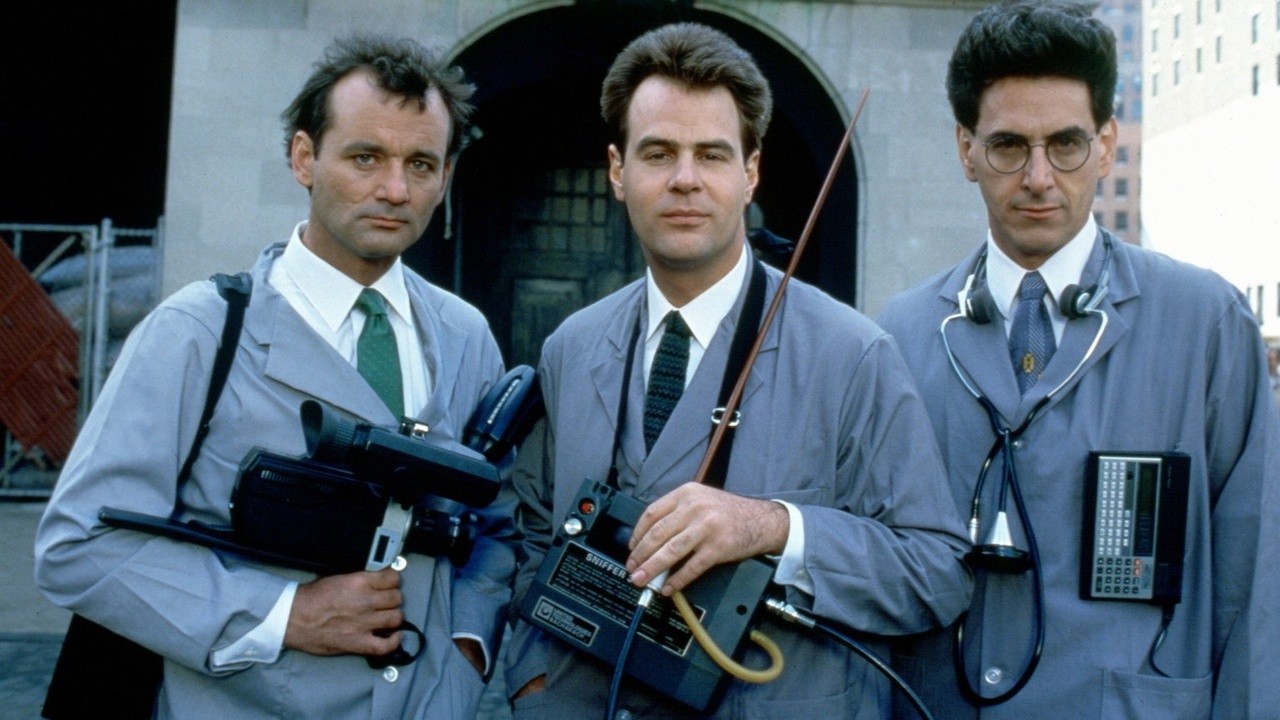
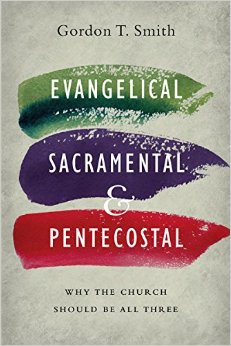
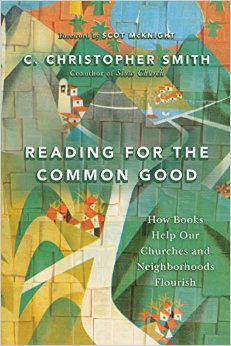 of social concern. I first waxed about the value of reading, quoted the must-read book by Chris Smith Reading for the Common Good: How Books Help Our Churches and Neighborhoods Flourish and Neil Postman’s Amusing Ourselves to Death and Nicholas Carr’s The Shallows: What the Internet Is Doing To Our Brains. I told even laypeople they might enjoy Reading for Preaching by Cornelius Plantinga, a book any church-going book lover will cherish. I told a few stories of people whose lives were changed by reading, and how reading together can be transforming — I told about Wilberforce and Hannah More and Wedgewood and commended Eric Metaxas’ marvelous book Amazing Grace: William Wilberforce and the Heroic Campaign to End Slavery which illustrates how cultural renewal and social justice movements are sustained by communities who read. I hoped to inspire reading widely, thinking well, and enjoying the koinonia that develops when big ideas are in the air because people are reading books together.
of social concern. I first waxed about the value of reading, quoted the must-read book by Chris Smith Reading for the Common Good: How Books Help Our Churches and Neighborhoods Flourish and Neil Postman’s Amusing Ourselves to Death and Nicholas Carr’s The Shallows: What the Internet Is Doing To Our Brains. I told even laypeople they might enjoy Reading for Preaching by Cornelius Plantinga, a book any church-going book lover will cherish. I told a few stories of people whose lives were changed by reading, and how reading together can be transforming — I told about Wilberforce and Hannah More and Wedgewood and commended Eric Metaxas’ marvelous book Amazing Grace: William Wilberforce and the Heroic Campaign to End Slavery which illustrates how cultural renewal and social justice movements are sustained by communities who read. I hoped to inspire reading widely, thinking well, and enjoying the koinonia that develops when big ideas are in the air because people are reading books together. 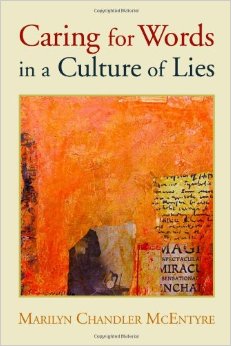
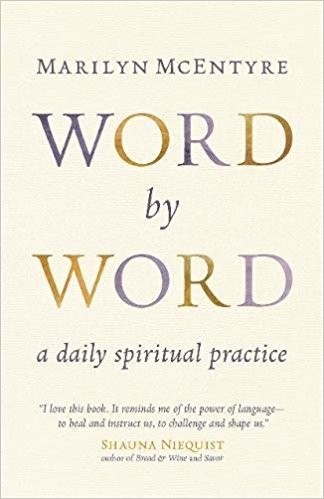
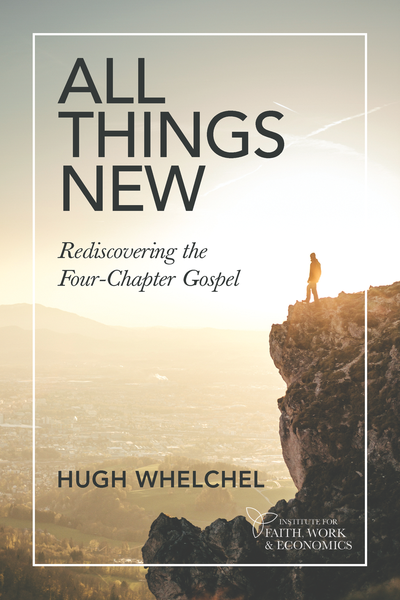 All Things New: Rediscovering the Four Chapter Gospel Hugh Whelchel (Institute of Faith, Work, Economics) $6.99 This six-week Bible study explains the full story the Bible presents, cover to cover – the goodness of the blessed creation, the ruination of the sin-wracked creation, the decisive victory over death in Christ’s atonement, and the full-orbed promise of the restoration of creation. The next two studies invite conversations about how the gospel is best expressed in this full four-chapter story (and not the truncated middle two parts) and why this matters. Liberal or conservative, progressive or old school evangelical, nobody gets this quite right and I think this little Bible study resource would be revolutionary, rocking your group with fresh insights and new resolve to live out a hopeful faith in all areas of life. Not too many people bought it – maybe mainline churches don’t have many small group Bible studies going on. We’ve got plenty and hope you order it soon.
All Things New: Rediscovering the Four Chapter Gospel Hugh Whelchel (Institute of Faith, Work, Economics) $6.99 This six-week Bible study explains the full story the Bible presents, cover to cover – the goodness of the blessed creation, the ruination of the sin-wracked creation, the decisive victory over death in Christ’s atonement, and the full-orbed promise of the restoration of creation. The next two studies invite conversations about how the gospel is best expressed in this full four-chapter story (and not the truncated middle two parts) and why this matters. Liberal or conservative, progressive or old school evangelical, nobody gets this quite right and I think this little Bible study resource would be revolutionary, rocking your group with fresh insights and new resolve to live out a hopeful faith in all areas of life. Not too many people bought it – maybe mainline churches don’t have many small group Bible studies going on. We’ve got plenty and hope you order it soon.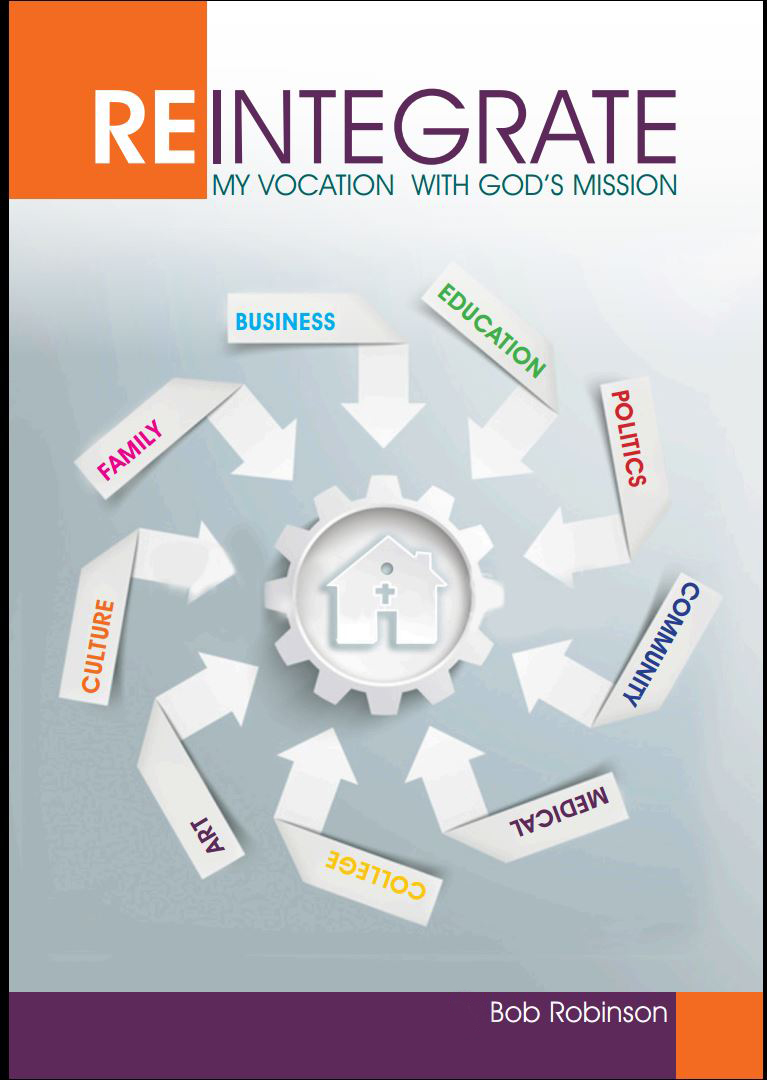 Reintegrate Your Vocation with God’s Mission Bob Robinson (Good Place Publishing) $12.00 This is also a small group Bible study resource, a great book for those who want to have both a book to read and lots of Bible verses to look up and discuss. It has just a bit of content each week, sidebars and good quotes, and excellent discussion questions. This, like Whelchel’s more concise booklet above, covers this four-chapter plot of the Bible and then goes to wonderful measures to show us just why this matters, especially for our vocational lives, relating worship and work, Sunday and Monday, so to speak. There is simply no small group resource like this in print and we highly recommend it. Full disclosure: Bob is a dear friend, he kindly re-publishes many of my Facebook posts, tweets, and BookNotes columns, and I have a rave endorsement on the back of this little book.
Reintegrate Your Vocation with God’s Mission Bob Robinson (Good Place Publishing) $12.00 This is also a small group Bible study resource, a great book for those who want to have both a book to read and lots of Bible verses to look up and discuss. It has just a bit of content each week, sidebars and good quotes, and excellent discussion questions. This, like Whelchel’s more concise booklet above, covers this four-chapter plot of the Bible and then goes to wonderful measures to show us just why this matters, especially for our vocational lives, relating worship and work, Sunday and Monday, so to speak. There is simply no small group resource like this in print and we highly recommend it. Full disclosure: Bob is a dear friend, he kindly re-publishes many of my Facebook posts, tweets, and BookNotes columns, and I have a rave endorsement on the back of this little book. 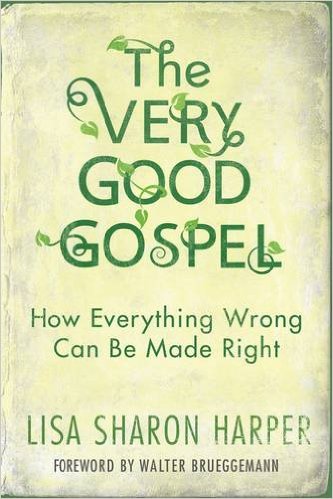 The Very Good Gospel: How Everything Wrong Can Be Made Right Lisa Sharon Harper (Waterbrook) $19.99 This is a book that came out about a year ago and we take it everywhere we go. Lisa is a friend, a hero in many ways to Beth and me, and we enjoy explaining this book. It is rich, full of big ideas, but yet intimate and even tender at times, as Lisa shares about this question haunting her: does the gospel as it is typically explained come across as truly good news, especially to those who are hurting, who have been oppressed or marginalized. She is a strong African American woman with some Native American blood and she re-imagines the gospel story using the same sort of “unfolding drama” of four chapters that Whelchel and Robinson commend above, showing how the promised restoration brings a promise of shalom. Indeed, her description of the Bible story uses really helpful language, telling how God gave us blessed shalom, our sin brought alienation, and Christ’s redemption brings reconciliation. Isn’t that a great way to understand things? The second half of the book explores the implications of gospel-reconciliation for race relations, creation care, injustices between men and women, even international tensions. God’s good news is a very good gospel, indeed, and her call to be agents of reconciliation in all aspects of life is really, really worth reading. If I were the head of the UCC, I’d have everybody reading this together.
The Very Good Gospel: How Everything Wrong Can Be Made Right Lisa Sharon Harper (Waterbrook) $19.99 This is a book that came out about a year ago and we take it everywhere we go. Lisa is a friend, a hero in many ways to Beth and me, and we enjoy explaining this book. It is rich, full of big ideas, but yet intimate and even tender at times, as Lisa shares about this question haunting her: does the gospel as it is typically explained come across as truly good news, especially to those who are hurting, who have been oppressed or marginalized. She is a strong African American woman with some Native American blood and she re-imagines the gospel story using the same sort of “unfolding drama” of four chapters that Whelchel and Robinson commend above, showing how the promised restoration brings a promise of shalom. Indeed, her description of the Bible story uses really helpful language, telling how God gave us blessed shalom, our sin brought alienation, and Christ’s redemption brings reconciliation. Isn’t that a great way to understand things? The second half of the book explores the implications of gospel-reconciliation for race relations, creation care, injustices between men and women, even international tensions. God’s good news is a very good gospel, indeed, and her call to be agents of reconciliation in all aspects of life is really, really worth reading. If I were the head of the UCC, I’d have everybody reading this together. 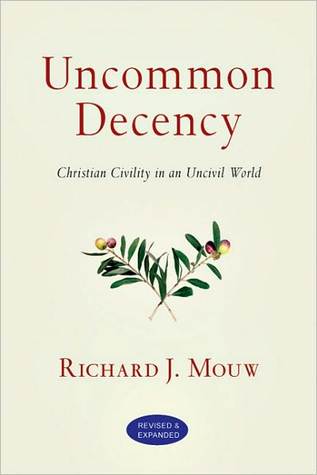 Uncommon Decency: Christian Civility in an Uncivil World Richard Mouw (IVP) $16.00 As you may know, I really, really like this book and recommend it often. I thought that just showing it would cause it to fly off our shelves — we had a bunch. I expected a bit more lament and expressions of frustration with the quality and tone of our current statecraft — we did sell a few of the brand new Preaching in an Age of Trump by (Chalice Press) — and although it is true that many of us feel we must speak clearly against immorality, narcissism, dishonesty, and bad policy in high places, as Christians we must always be gracious and fair. Anyway, this is a book we take everywhere we go and it is shown off with hope that folks will read it and take it to heart.
Uncommon Decency: Christian Civility in an Uncivil World Richard Mouw (IVP) $16.00 As you may know, I really, really like this book and recommend it often. I thought that just showing it would cause it to fly off our shelves — we had a bunch. I expected a bit more lament and expressions of frustration with the quality and tone of our current statecraft — we did sell a few of the brand new Preaching in an Age of Trump by (Chalice Press) — and although it is true that many of us feel we must speak clearly against immorality, narcissism, dishonesty, and bad policy in high places, as Christians we must always be gracious and fair. Anyway, this is a book we take everywhere we go and it is shown off with hope that folks will read it and take it to heart.  The Call: Finding and Fulfilling the Central Purpose of Your Life Os Guinness (Word) $17.99 I often highlight newer books in these little book workshops but sometimes I pull out an old chestnut like this and get all verklempt telling why it means so much to me. This, truly, is one of my top five books ever, and it is so eloquent, wise, insightful, rich, and important that I take it almost everywhere we go. I am sad that many in mainline churches don’t know his big body of work – we had his newest Impossible People about being steadfast and faithful, Renaissance about being hopeful God will bring God’s own renewal to us in Christ’s own way, and that exceptionally thoughtful Fool’s Talk although, truth be told, nobody bought any. I did convince a few to try The Call, perhaps because they liked the idea of reading a book by a relative of the Guinness beer family or just because I insisted it was one of my own favorites. One chapter is called “Everyone, Everywhere, Everything” and captures the dynamic of the social revolution of the Reformation that liberated the laity to use the language of calling and empowered all of us to serve God, for His glory alone, in all that we do, everywhere. The discussion questions in the back are exceptional, making this a book I recommend most heartily.
The Call: Finding and Fulfilling the Central Purpose of Your Life Os Guinness (Word) $17.99 I often highlight newer books in these little book workshops but sometimes I pull out an old chestnut like this and get all verklempt telling why it means so much to me. This, truly, is one of my top five books ever, and it is so eloquent, wise, insightful, rich, and important that I take it almost everywhere we go. I am sad that many in mainline churches don’t know his big body of work – we had his newest Impossible People about being steadfast and faithful, Renaissance about being hopeful God will bring God’s own renewal to us in Christ’s own way, and that exceptionally thoughtful Fool’s Talk although, truth be told, nobody bought any. I did convince a few to try The Call, perhaps because they liked the idea of reading a book by a relative of the Guinness beer family or just because I insisted it was one of my own favorites. One chapter is called “Everyone, Everywhere, Everything” and captures the dynamic of the social revolution of the Reformation that liberated the laity to use the language of calling and empowered all of us to serve God, for His glory alone, in all that we do, everywhere. The discussion questions in the back are exceptional, making this a book I recommend most heartily. Moveable Feast: Worship for the Other Six Days Terry Timm (Imagination Press) $12.99 One of the brilliant features of the above mentioned Liturgy of the Ordinary is how Tish Warren relates worship practices to daily life, mostly a day in her life as a homemaking mom. Here, Rev. Terry Timm, pastor of a great church in Pittsburgh, reflects on the “front end” of this equation – how to worship well, how to plan worship, and how to frame church as a formative center which shapes us for our vocational callings in all of life the rest of the week. I do not know of any other book that does this so nicely, so thoughtfully, so accessibly. Every pastor and worship leader should be thinking like this, and I believe it could be helpful to anyone who plans, leads, or attends worship. Yep. We’re happy to tell folks of any faith tradition about this gem.
Moveable Feast: Worship for the Other Six Days Terry Timm (Imagination Press) $12.99 One of the brilliant features of the above mentioned Liturgy of the Ordinary is how Tish Warren relates worship practices to daily life, mostly a day in her life as a homemaking mom. Here, Rev. Terry Timm, pastor of a great church in Pittsburgh, reflects on the “front end” of this equation – how to worship well, how to plan worship, and how to frame church as a formative center which shapes us for our vocational callings in all of life the rest of the week. I do not know of any other book that does this so nicely, so thoughtfully, so accessibly. Every pastor and worship leader should be thinking like this, and I believe it could be helpful to anyone who plans, leads, or attends worship. Yep. We’re happy to tell folks of any faith tradition about this gem.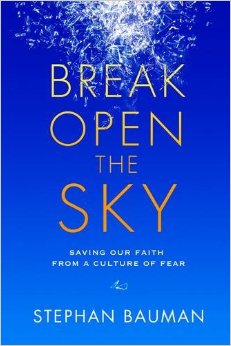 Break Open the Sky: Saving Our Faith from a Culture of Fear Stephan Bauman (Multnomah) $15.99 Do you recall my naming this in that big review I did of the Goudzwaard & Bartholomew Beyond the Modern Age just two weeks ago? I was listing books that offer a bit of cultural discernment, naming where we’ve been and what’s going on. Bauman is not heavy-handed and the book is a delight to read, inviting us (by way of moving stories and solid Bible exposition) into a spacious world where fear need not bind us so. I really loved this wise book, found it enjoyable and challenging, and I can’t say enough about it. It would make a great book club title, pushing us to be aware of the pressures of our world and allowing faith to give us fresh insight, courage, resolve, and love. Yes, love. I told all about it during this workshop, but I’m not sure I did a great job so I’m commending it to you here, now. Give it a try, I’m sure you’ll be touched by it.
Break Open the Sky: Saving Our Faith from a Culture of Fear Stephan Bauman (Multnomah) $15.99 Do you recall my naming this in that big review I did of the Goudzwaard & Bartholomew Beyond the Modern Age just two weeks ago? I was listing books that offer a bit of cultural discernment, naming where we’ve been and what’s going on. Bauman is not heavy-handed and the book is a delight to read, inviting us (by way of moving stories and solid Bible exposition) into a spacious world where fear need not bind us so. I really loved this wise book, found it enjoyable and challenging, and I can’t say enough about it. It would make a great book club title, pushing us to be aware of the pressures of our world and allowing faith to give us fresh insight, courage, resolve, and love. Yes, love. I told all about it during this workshop, but I’m not sure I did a great job so I’m commending it to you here, now. Give it a try, I’m sure you’ll be touched by it. 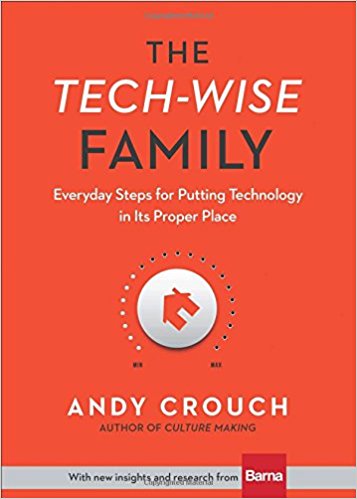 The Tech Wise Family: Everyday Steps for Putting Technology in It’s Proper Place Andy Crouch (Baker) $13.99 I simply held this up and said that anybody who cares about family life should have this, and anybody who works with children or youth should have this and anybody who has grand-kids should have this and, well, anybody who uses the internet at all really should consider this as well. Yep, I want to say that this is the best brief book on the role of screens and digital devices in our technological world and it is a wise guide into this brave new world of ours. I so enjoyed this, found it richer and more interesting than I expected (and you know I esteem Andy Crouch very, very much, always pushing his books Culture Making, Playing God, and the more recent Strong and Weak.) Read any of his good books, I implored my friends in the workshop, but this one is a must for most of us.
The Tech Wise Family: Everyday Steps for Putting Technology in It’s Proper Place Andy Crouch (Baker) $13.99 I simply held this up and said that anybody who cares about family life should have this, and anybody who works with children or youth should have this and anybody who has grand-kids should have this and, well, anybody who uses the internet at all really should consider this as well. Yep, I want to say that this is the best brief book on the role of screens and digital devices in our technological world and it is a wise guide into this brave new world of ours. I so enjoyed this, found it richer and more interesting than I expected (and you know I esteem Andy Crouch very, very much, always pushing his books Culture Making, Playing God, and the more recent Strong and Weak.) Read any of his good books, I implored my friends in the workshop, but this one is a must for most of us.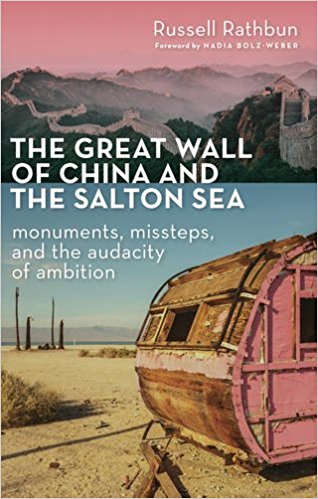 Great Wall of China and the Salton Sea: Monuments, Missteps, and the Audacity of Ambition Russell Rathbun (Eerdmans) $21.99 I mused about this a bit, citing the lovely and insightful foreword by Nadia Bolz-Weber (who they most likely know, if only from her great Krista Tippett “On Being” interview, and her spicy memoir Pastrix.) I explained it is a memoir, but also a travelogue, as our intrepid writer moseys around these two massive monuments to ambition and hubris. From a rumination on the Tower of Babel to a reflection on why we like to look at pictures of ruins, from his own family’s connections to the massive failure that created the Salton Sea to his visits to China, Rathbun gives us an entertaining, quirky, and very moving book that is creative in its conception, creative in its writing, and very serious in its message for those that may have the ears to hear. What a great book.
Great Wall of China and the Salton Sea: Monuments, Missteps, and the Audacity of Ambition Russell Rathbun (Eerdmans) $21.99 I mused about this a bit, citing the lovely and insightful foreword by Nadia Bolz-Weber (who they most likely know, if only from her great Krista Tippett “On Being” interview, and her spicy memoir Pastrix.) I explained it is a memoir, but also a travelogue, as our intrepid writer moseys around these two massive monuments to ambition and hubris. From a rumination on the Tower of Babel to a reflection on why we like to look at pictures of ruins, from his own family’s connections to the massive failure that created the Salton Sea to his visits to China, Rathbun gives us an entertaining, quirky, and very moving book that is creative in its conception, creative in its writing, and very serious in its message for those that may have the ears to hear. What a great book.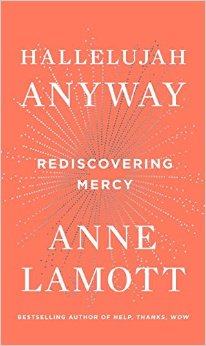 Hallelujah Anyway: Rediscovering Mercy Anne Lamott (Riverhead) $20.00 We hardly had to introduce Annie to anyone in this crowd. She is the sort of religious writer many appreciate – honest, colorful, culturally liberal, but very serious about expressing the love and grace she discovered from Jesus. Few writers are as expansive in their big hearts and few are as honest about their own sins and foibles and fears and stupidity. She owns it, and I think that may be why many relate to her. This book is about mercy. It was one of our biggest seller
Hallelujah Anyway: Rediscovering Mercy Anne Lamott (Riverhead) $20.00 We hardly had to introduce Annie to anyone in this crowd. She is the sort of religious writer many appreciate – honest, colorful, culturally liberal, but very serious about expressing the love and grace she discovered from Jesus. Few writers are as expansive in their big hearts and few are as honest about their own sins and foibles and fears and stupidity. She owns it, and I think that may be why many relate to her. This book is about mercy. It was one of our biggest seller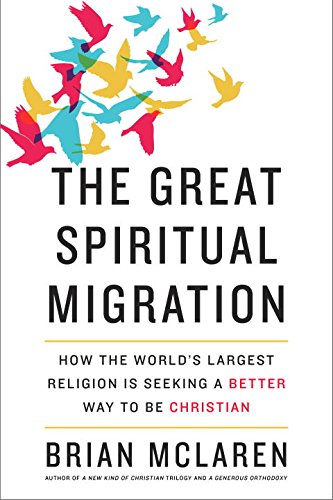 The Great Spiritual Migration: How the World’s Largest Religion Is Seeking a Better Way to Be Christian Brian McLaren (Convergent) $21.00 I think those who tilt conservative and traditional theologically should read this because he is naming what is, in fact, a bit of a shift in the American religious landscape. I don’t know if it is as widespread as Brian suggests – otherwise the UCC might be growing in more lively ways – but I do think he is documenting a huge conversation that has been going on in recent years. I suggested to my UCC friends in the workshop that although I might wish they would also read more conventional evangelical formulations, this former evangelical pastor understands their own DNA and describes their theological tradition’s strengths. They would do well to study this and see if it gives a coherent voice to their own “God is still speaking” ways.
The Great Spiritual Migration: How the World’s Largest Religion Is Seeking a Better Way to Be Christian Brian McLaren (Convergent) $21.00 I think those who tilt conservative and traditional theologically should read this because he is naming what is, in fact, a bit of a shift in the American religious landscape. I don’t know if it is as widespread as Brian suggests – otherwise the UCC might be growing in more lively ways – but I do think he is documenting a huge conversation that has been going on in recent years. I suggested to my UCC friends in the workshop that although I might wish they would also read more conventional evangelical formulations, this former evangelical pastor understands their own DNA and describes their theological tradition’s strengths. They would do well to study this and see if it gives a coherent voice to their own “God is still speaking” ways.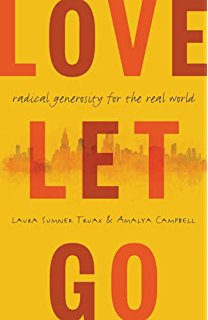 Love Let Go: Radical Generosity for the Real World Laura Truax & Amalya Campbell (Eerdmans) $21.99 I’ll admit we don’t quite know what to do this with exceptionally interesting, really fun and fascinating memoir, a creative telling of a church that was given a boatload of money and basically said “we don’t want it.” That part of the story is interesting enough, and makes for a provocative read, but that’s just the very beginning of this enchanting and radical tale. Church leadership decides to take the money and give $500 to every parishioner with the instruction to “do something good” with it. Wow, this is paying it forward, writ large! Love Let Go is the well-told story of what folks did, how it affected them, and the lessons learned about generosity, greed, philanthropy, development, and more.
Love Let Go: Radical Generosity for the Real World Laura Truax & Amalya Campbell (Eerdmans) $21.99 I’ll admit we don’t quite know what to do this with exceptionally interesting, really fun and fascinating memoir, a creative telling of a church that was given a boatload of money and basically said “we don’t want it.” That part of the story is interesting enough, and makes for a provocative read, but that’s just the very beginning of this enchanting and radical tale. Church leadership decides to take the money and give $500 to every parishioner with the instruction to “do something good” with it. Wow, this is paying it forward, writ large! Love Let Go is the well-told story of what folks did, how it affected them, and the lessons learned about generosity, greed, philanthropy, development, and more.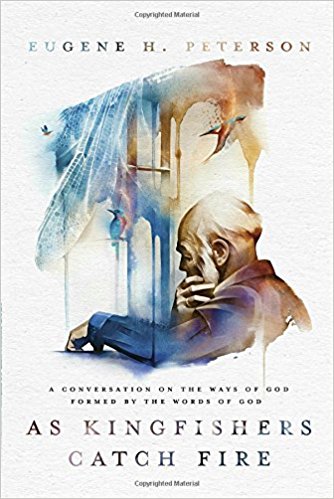 As Kingfishers Catch Fire: A Conversation on the Ways of God Formed by the Words of God Eugene Peterson (Tyndale) $24.99 As a former PC(USA) pastor, Eugene Peterson is respected within most mainline denominations and is claimed by many evangelicals. After his long stint as a pastor and a decade teaching spiritual theology at Regent in British Columbia (taking a professorship alongside the likes of James Houston and J.I. Packer and adjunct teacher Marva Dawn) he has earned the right to be considered one of the most respected and appreciated religious writers of the last 50 years. This is a new book of sermons that were preached in the late 60s and early 70s at the church start-up he did in those years, Christ Our King Presbyterian Church in Bel Air Maryland. There are a few new essays where Peterson puts these old sermons in context. This is worth having and savoring.
As Kingfishers Catch Fire: A Conversation on the Ways of God Formed by the Words of God Eugene Peterson (Tyndale) $24.99 As a former PC(USA) pastor, Eugene Peterson is respected within most mainline denominations and is claimed by many evangelicals. After his long stint as a pastor and a decade teaching spiritual theology at Regent in British Columbia (taking a professorship alongside the likes of James Houston and J.I. Packer and adjunct teacher Marva Dawn) he has earned the right to be considered one of the most respected and appreciated religious writers of the last 50 years. This is a new book of sermons that were preached in the late 60s and early 70s at the church start-up he did in those years, Christ Our King Presbyterian Church in Bel Air Maryland. There are a few new essays where Peterson puts these old sermons in context. This is worth having and savoring.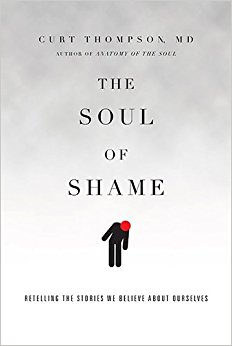 The Soul of Shame: Retelling the Stories We Tell About Ourselves Curt Thompson (IVP) $22.00 We named this one of the Hearts & Minds very “best books of the year” a few years back and continue to feature this almost everywhere we go. I think some who browse are not sure if they want to pick it up – it could be a bit intense to grapple with such heart level stuff – but we are earnest in describing how well it is written, how deeply Biblical it is, and how insightful Curt is (he is a psychiatrist and knows quite a bit about neuro-science.) It is a marvelous book – very highly recommended, as is his previous one, The Anatomy of the Soul: Surprising Connections Between Neuroscience and Spiritual Practices Than Can Transform Your Life and Relationship. We have raved about this before, and any number of customers have told us how much this book means to them. It is an enduring, deeply and profoundly Christian resource that we continue to promote. Whether you carry deep shame or not, this is very highly recommended.
The Soul of Shame: Retelling the Stories We Tell About Ourselves Curt Thompson (IVP) $22.00 We named this one of the Hearts & Minds very “best books of the year” a few years back and continue to feature this almost everywhere we go. I think some who browse are not sure if they want to pick it up – it could be a bit intense to grapple with such heart level stuff – but we are earnest in describing how well it is written, how deeply Biblical it is, and how insightful Curt is (he is a psychiatrist and knows quite a bit about neuro-science.) It is a marvelous book – very highly recommended, as is his previous one, The Anatomy of the Soul: Surprising Connections Between Neuroscience and Spiritual Practices Than Can Transform Your Life and Relationship. We have raved about this before, and any number of customers have told us how much this book means to them. It is an enduring, deeply and profoundly Christian resource that we continue to promote. Whether you carry deep shame or not, this is very highly recommended.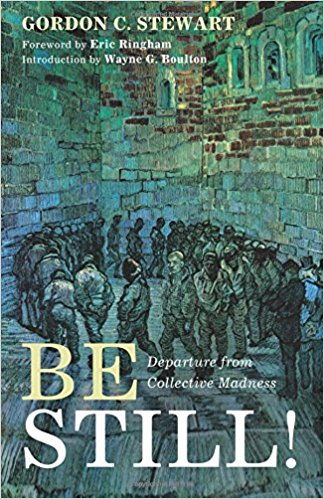 Be Still: Departure From Our Collective Madness Gordon Stewart (Wipf & Stock) $21.00 Oh, how I wish I had had time to read some of these short pieces out loud during my “show and tell” workshops about books these days. They were all written by a Presbyterian pastor – his brother is a UCC pastor, and I flubbed a joke about God calling one of them to a better denomination – but were crafted to be spoken out loud on “All Things Considered” and an NPR feature on Minnesota public radio. Can you imagine someone trained in the best tradition of mainline Protestant seminaries, reading the likes of Augustine and Aquinas, Luther and Calvin, Barth and Niebuhr, spicing up their radio op ed ruminations with contemporary writers and poets like Buechner and Updike, Mary Oliver and Wendell Berry? Stewart is nearly what one might call a public intellectual (if only he were better known.) In these well-crafted short pieces, designed for a public listenership, he draws connections from the things that matter most to the things most on our mind these days. He writes about racial injustice experienced by urban youth, and hospital ministry with the dying. He writes about fear and doubt and goodness and hope. The title might make you think it is mostly about politics — it was written before the resist Trump movement, I might add — and there is plenty of public theology for the common good in here. But these thought-provoking pieces are more than just a sane rant again the “collective madness” of our contentious discourse these days. It may be more like Thoreau, short reflection on what he sees, what he deeply knows, and what we can do as we ponder together ways to make our lives more sane. I’ve appreciated these calm reflections a lot and have been taken to re-reading a few for the sheer joy of spending time with a well-crafted essay. Nicely done.
Be Still: Departure From Our Collective Madness Gordon Stewart (Wipf & Stock) $21.00 Oh, how I wish I had had time to read some of these short pieces out loud during my “show and tell” workshops about books these days. They were all written by a Presbyterian pastor – his brother is a UCC pastor, and I flubbed a joke about God calling one of them to a better denomination – but were crafted to be spoken out loud on “All Things Considered” and an NPR feature on Minnesota public radio. Can you imagine someone trained in the best tradition of mainline Protestant seminaries, reading the likes of Augustine and Aquinas, Luther and Calvin, Barth and Niebuhr, spicing up their radio op ed ruminations with contemporary writers and poets like Buechner and Updike, Mary Oliver and Wendell Berry? Stewart is nearly what one might call a public intellectual (if only he were better known.) In these well-crafted short pieces, designed for a public listenership, he draws connections from the things that matter most to the things most on our mind these days. He writes about racial injustice experienced by urban youth, and hospital ministry with the dying. He writes about fear and doubt and goodness and hope. The title might make you think it is mostly about politics — it was written before the resist Trump movement, I might add — and there is plenty of public theology for the common good in here. But these thought-provoking pieces are more than just a sane rant again the “collective madness” of our contentious discourse these days. It may be more like Thoreau, short reflection on what he sees, what he deeply knows, and what we can do as we ponder together ways to make our lives more sane. I’ve appreciated these calm reflections a lot and have been taken to re-reading a few for the sheer joy of spending time with a well-crafted essay. Nicely done.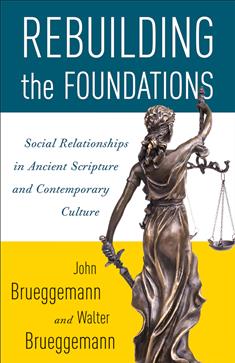 Rebuilding the Foundations: Social Relationships in Ancient Scripture and Contemporary Culture John Brueggemann and Walter Brueggemann (Westminster John Knox) $20.00 A certain generation of UCC leaders knew Brueggemann well. His father was an E & R pastor (before they merged into the UCC in the 50s) and Walt himself held membership in the denomination of his youth. He publishes a lot, but this is fascinating. As I described in our BookNotes when I first announced it, Rebuilding the Foundations is co-written with his son, the Department Chair and Professor of Sociology at Skidmore College. He is a scholar about inequalities and has a book called, curiously, Rich, Free, and Miserable: The Failure of Success in America. Here, Walt and son John explore what Rabbi Michael Lerner in Tikkun called “a startlingly insight and important book” which “addresses some of the most important issues facing the human race today.” Okay, so there’s that.
Rebuilding the Foundations: Social Relationships in Ancient Scripture and Contemporary Culture John Brueggemann and Walter Brueggemann (Westminster John Knox) $20.00 A certain generation of UCC leaders knew Brueggemann well. His father was an E & R pastor (before they merged into the UCC in the 50s) and Walt himself held membership in the denomination of his youth. He publishes a lot, but this is fascinating. As I described in our BookNotes when I first announced it, Rebuilding the Foundations is co-written with his son, the Department Chair and Professor of Sociology at Skidmore College. He is a scholar about inequalities and has a book called, curiously, Rich, Free, and Miserable: The Failure of Success in America. Here, Walt and son John explore what Rabbi Michael Lerner in Tikkun called “a startlingly insight and important book” which “addresses some of the most important issues facing the human race today.” Okay, so there’s that.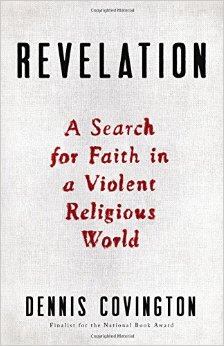 Revelation: A Search for Faith in a Violent Religious World Dennis Covington (Little Brown) $26.00 Covington is one of my favorite writers, classy, thoughtful, yet intense and vivid. His searing books such as Salvation on Sand Mountain are on many people’s list of all time favorites. My copy has post-it notes stuck throughout as I dreamed about reading moving excerpts in my little workshop. Of course I ran out of time and rather in-eloquently shouted out that it is about this guy who travels around the world to some of the most violent spots, wondering how, oddly, religion is a cause of some of the world’s worst stuff, and, yet, seems also to be the only real answer to averting the awful violence we humans commit. In high-octane, energetic prose, Covington takes us to drug cartels and ISIS camps and sneaks across borders in places the State Department would not have permitted him to go. This report back is part travelogue, part war-on-terror journalism, part seekers heart cry, trying to figure out the meaning of faith in a troubled world. Highly recommended.
Revelation: A Search for Faith in a Violent Religious World Dennis Covington (Little Brown) $26.00 Covington is one of my favorite writers, classy, thoughtful, yet intense and vivid. His searing books such as Salvation on Sand Mountain are on many people’s list of all time favorites. My copy has post-it notes stuck throughout as I dreamed about reading moving excerpts in my little workshop. Of course I ran out of time and rather in-eloquently shouted out that it is about this guy who travels around the world to some of the most violent spots, wondering how, oddly, religion is a cause of some of the world’s worst stuff, and, yet, seems also to be the only real answer to averting the awful violence we humans commit. In high-octane, energetic prose, Covington takes us to drug cartels and ISIS camps and sneaks across borders in places the State Department would not have permitted him to go. This report back is part travelogue, part war-on-terror journalism, part seekers heart cry, trying to figure out the meaning of faith in a troubled world. Highly recommended. 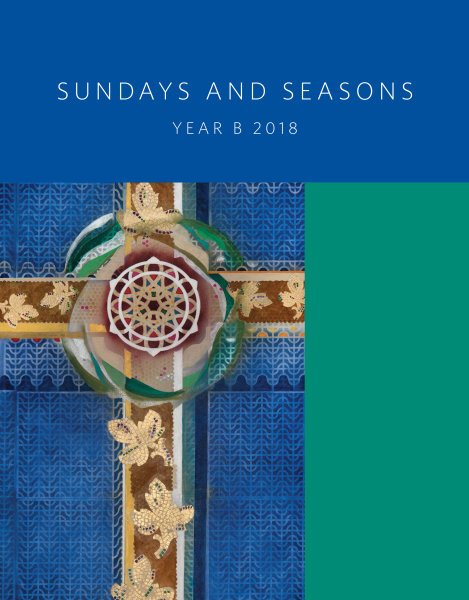
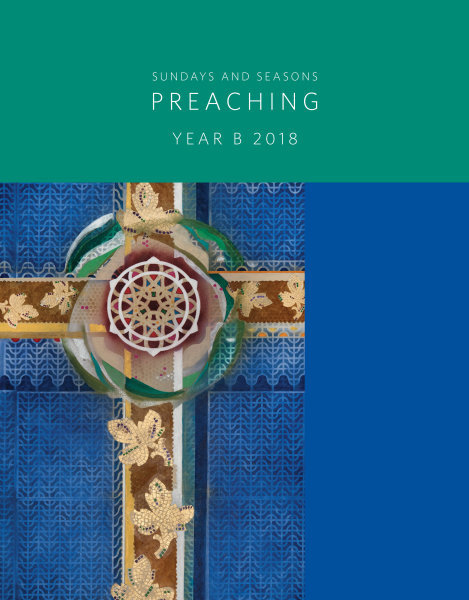 Sundays and Seasons: Guide to Worship Planning Year B 2018 (Augsburg Fortress) $39.00
Sundays and Seasons: Guide to Worship Planning Year B 2018 (Augsburg Fortress) $39.00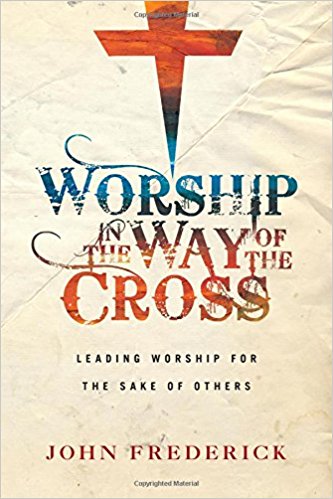 Worship in the Way of the Cross: Leading Worship for the Sake of Others John Frederick (IVP) $18.00 It is not a cheap shot, although it is increasingly said, that “worship” must be more than “just the music, an onstage performance that puts the spotlight on the worship leader.” I know many worship leaders who are essentially musicians who lead songs of praise and they don’t want to be in the spotlight, but the very structure of the worship event puts them there. (In other traditions it is the preacher who is in the center of the up-front activity and the church becomes very preacher-centric.) In any event, whether one is in a hip urban church plant or an old school, denominational preacher in a smaller church, the question of what constitutes artful, high-quality, and theologically faithful worship is pressing. It needs to be revisited regularly, and — given that it is one of the most important and routine things local churches do — I’m surprised that pastors and worship leaders don’t read and study and revisit this topic regularly. Maybe they do, but we don’t sell that many of the oodles of books on worship that we stock, and I wish they sold better.
Worship in the Way of the Cross: Leading Worship for the Sake of Others John Frederick (IVP) $18.00 It is not a cheap shot, although it is increasingly said, that “worship” must be more than “just the music, an onstage performance that puts the spotlight on the worship leader.” I know many worship leaders who are essentially musicians who lead songs of praise and they don’t want to be in the spotlight, but the very structure of the worship event puts them there. (In other traditions it is the preacher who is in the center of the up-front activity and the church becomes very preacher-centric.) In any event, whether one is in a hip urban church plant or an old school, denominational preacher in a smaller church, the question of what constitutes artful, high-quality, and theologically faithful worship is pressing. It needs to be revisited regularly, and — given that it is one of the most important and routine things local churches do — I’m surprised that pastors and worship leaders don’t read and study and revisit this topic regularly. Maybe they do, but we don’t sell that many of the oodles of books on worship that we stock, and I wish they sold better.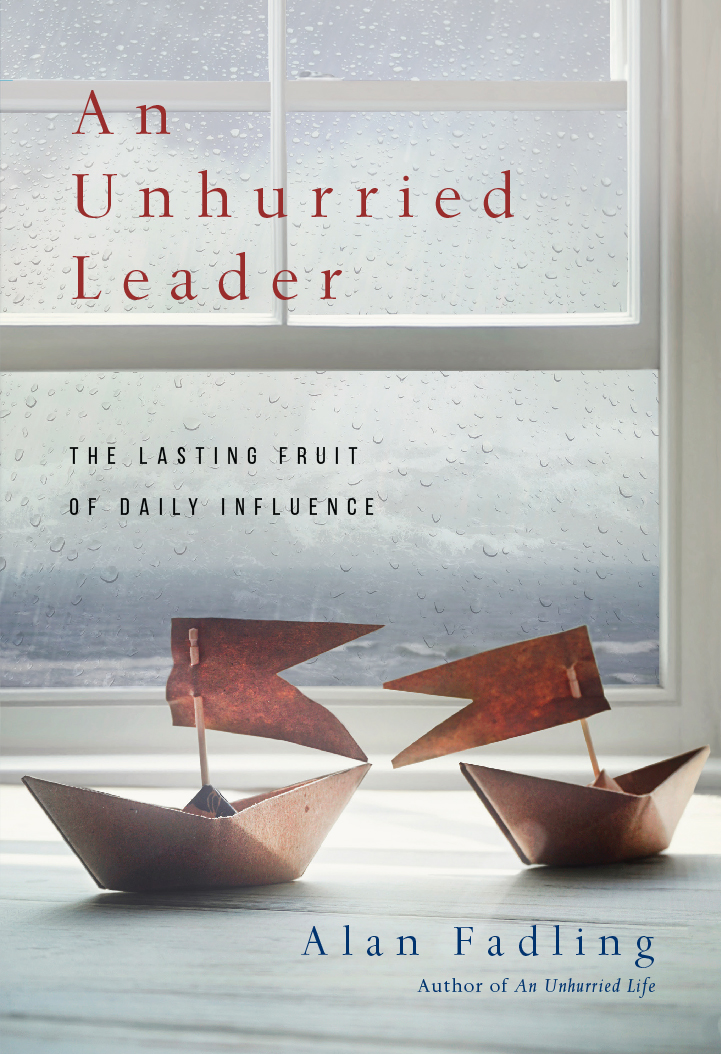 An Unhurried Leader: The Lasting Fruit of Daily Influence Alan Fadling (IVP) $20.00 This is a must read for pastors or other church leaders or anyone involved in ministry, or in leadership of any kind. What a great, great idea for a book, and what a fine writer to do it.
An Unhurried Leader: The Lasting Fruit of Daily Influence Alan Fadling (IVP) $20.00 This is a must read for pastors or other church leaders or anyone involved in ministry, or in leadership of any kind. What a great, great idea for a book, and what a fine writer to do it. 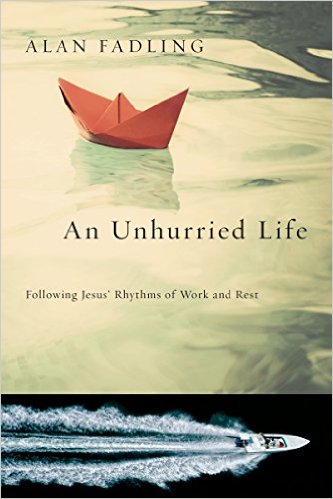 when faced with so many responsibilities and opportunities to do good to “frantically take control of situations in hopes of making good things happen.” Rather, he offers good examples and guidance for alternative ways to lead; as Mindy Caliguire puts in, “to lead from a place of overflow rather than deficit.”
when faced with so many responsibilities and opportunities to do good to “frantically take control of situations in hopes of making good things happen.” Rather, he offers good examples and guidance for alternative ways to lead; as Mindy Caliguire puts in, “to lead from a place of overflow rather than deficit.” 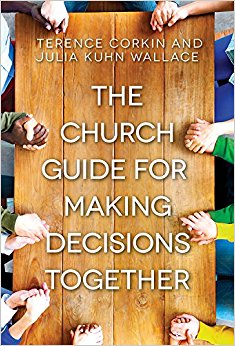 The Church Guide for Making Decisions Together Terence Corkin & Julia Kuhn Wallace (Abingdon Press) $22.99 Allow me to suggest that this is a very, very important book for anyone on a journey to put into place more — what to call it — spiritual ways of being together as the Body of Christ. Much has been written about how the church is not just any institution and we ought not borrow without caution any old strategic plan from the world of business or corporations. We need uniquely Christian spiritual practices to guide and shape us to be the kind of people God desires, and to be in tun with the new work the Holy Spirit is doing in and through us. So, yes, we all know that — even if we are slow to enact fresh ways of doing stuff day by day in our church. I know church polity courses that still teach from Roberts Rules of Order, which, I suppose, isn’t a bad thing, if it is supplemented by organizational practices informed by more faith-based, spiritual disciplines.
The Church Guide for Making Decisions Together Terence Corkin & Julia Kuhn Wallace (Abingdon Press) $22.99 Allow me to suggest that this is a very, very important book for anyone on a journey to put into place more — what to call it — spiritual ways of being together as the Body of Christ. Much has been written about how the church is not just any institution and we ought not borrow without caution any old strategic plan from the world of business or corporations. We need uniquely Christian spiritual practices to guide and shape us to be the kind of people God desires, and to be in tun with the new work the Holy Spirit is doing in and through us. So, yes, we all know that — even if we are slow to enact fresh ways of doing stuff day by day in our church. I know church polity courses that still teach from Roberts Rules of Order, which, I suppose, isn’t a bad thing, if it is supplemented by organizational practices informed by more faith-based, spiritual disciplines.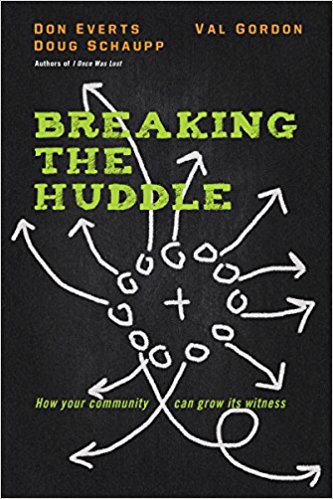 Breaking the Huddle: How Your Community Can Grow Its Witness Don Everts & Doug Schaupp (IVP) $16.00 This is a surprisingly excited book, a really interesting read that is based on some creative research and new descriptions of sorts of communities and stages of faith development within congregational life.
Breaking the Huddle: How Your Community Can Grow Its Witness Don Everts & Doug Schaupp (IVP) $16.00 This is a surprisingly excited book, a really interesting read that is based on some creative research and new descriptions of sorts of communities and stages of faith development within congregational life.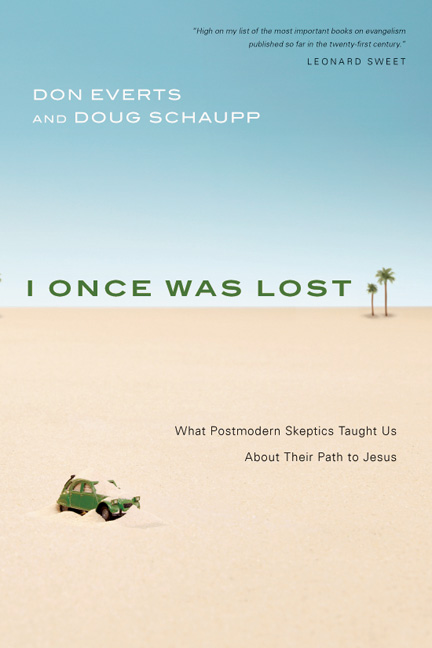 who had come to Christian faith out of an utterly secularized and postmodern background. What were the steps these folks went through to come to a point when the Christian gospel could even be considered as interesting and plausible? What stages did they go through from being disinterested to interested? What were the common paths they took from religiously apathetic (if not out and out skeptical) to becoming a seeker to being one who took the claims of Christ seriously, to actually finding themselves to be Christians? As you might guess, that book documented the role of kind and caring friends that helped seekers navigate these stages of the journey and walked with them towards increasing belief. I Once Was Lost is a one-of-a-kind book and remains a great read for those who are serious about reaching post-Christian young adults with plausible and meaningful and fruitful conversations about deepening faith.
who had come to Christian faith out of an utterly secularized and postmodern background. What were the steps these folks went through to come to a point when the Christian gospel could even be considered as interesting and plausible? What stages did they go through from being disinterested to interested? What were the common paths they took from religiously apathetic (if not out and out skeptical) to becoming a seeker to being one who took the claims of Christ seriously, to actually finding themselves to be Christians? As you might guess, that book documented the role of kind and caring friends that helped seekers navigate these stages of the journey and walked with them towards increasing belief. I Once Was Lost is a one-of-a-kind book and remains a great read for those who are serious about reaching post-Christian young adults with plausible and meaningful and fruitful conversations about deepening faith.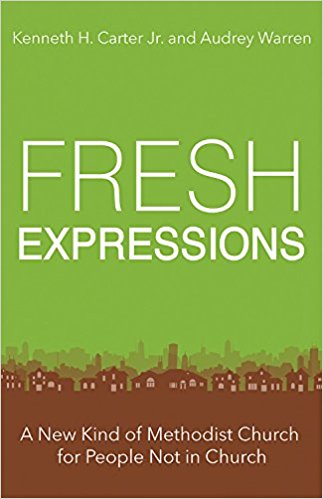 Fresh Expressions: A New Kind of Methodist Church for People Not in Church Kenneth H. Carter Jr. & Audrey Warren (Abingdon Press) $14.99 I’ll say it right away: despite the fact that this has “Methodist” in the subtitle, I truly think it is suitable and valuable for nearly any congregational type. If you are interested in creative outreach, even church planting or para-church ministry, this tells some great stories which you can apply within your own context and theological tradition. I can’t tell you how excited I am that this documents a “wave of new Methodist churches emerging to reach unchurched and dechurched people who live in a culture that is increasingly nonreligious and multi-religious.” And what it is documenting is, in fact, deeply ecumenical. The “Fresh Expressions” movement began in the United Kingdom where it ignited over 3,000 new faith communities.
Fresh Expressions: A New Kind of Methodist Church for People Not in Church Kenneth H. Carter Jr. & Audrey Warren (Abingdon Press) $14.99 I’ll say it right away: despite the fact that this has “Methodist” in the subtitle, I truly think it is suitable and valuable for nearly any congregational type. If you are interested in creative outreach, even church planting or para-church ministry, this tells some great stories which you can apply within your own context and theological tradition. I can’t tell you how excited I am that this documents a “wave of new Methodist churches emerging to reach unchurched and dechurched people who live in a culture that is increasingly nonreligious and multi-religious.” And what it is documenting is, in fact, deeply ecumenical. The “Fresh Expressions” movement began in the United Kingdom where it ignited over 3,000 new faith communities. Welcome to Dinner, Church Verlon Fosner (Seedbed) $9.95 We love the fairly recent publishing house created in affiliation with Asbury Seminary in Kentucky. They do great little books, an array of liturgical, Biblical, and spiritual resources for growing Christians. The Fresh Expressions USA movement has partnered with them to publish some books, and we stock them. This one is quite new, and it was the most popular book we had on sale at the Fresh Expressions conference in Harrisburg that we’ve mentioned. Verlon and his lovely wife were at the event, and although they are from the Pacific Northwest (Seattle, Washington) they have done some helpful church consulting here in Pennsylvania. We are delighted to know them and delighted to tell you about this powerhouse of a little book. It is compact and short and perfect for a small group read.
Welcome to Dinner, Church Verlon Fosner (Seedbed) $9.95 We love the fairly recent publishing house created in affiliation with Asbury Seminary in Kentucky. They do great little books, an array of liturgical, Biblical, and spiritual resources for growing Christians. The Fresh Expressions USA movement has partnered with them to publish some books, and we stock them. This one is quite new, and it was the most popular book we had on sale at the Fresh Expressions conference in Harrisburg that we’ve mentioned. Verlon and his lovely wife were at the event, and although they are from the Pacific Northwest (Seattle, Washington) they have done some helpful church consulting here in Pennsylvania. We are delighted to know them and delighted to tell you about this powerhouse of a little book. It is compact and short and perfect for a small group read. 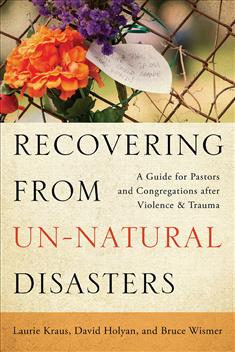 Recovering from Un-Natural Disasters: A Guide for Pastors and Congregations After Violence and Trauma Laurie Kraus, David Holyan, and Bruce Wismer (Westminster John Knox) $20.00 Oh, how sad that we need a resource like this, and oh how great that somebody has compiled such a seasoned and practical guidebook.
Recovering from Un-Natural Disasters: A Guide for Pastors and Congregations After Violence and Trauma Laurie Kraus, David Holyan, and Bruce Wismer (Westminster John Knox) $20.00 Oh, how sad that we need a resource like this, and oh how great that somebody has compiled such a seasoned and practical guidebook. 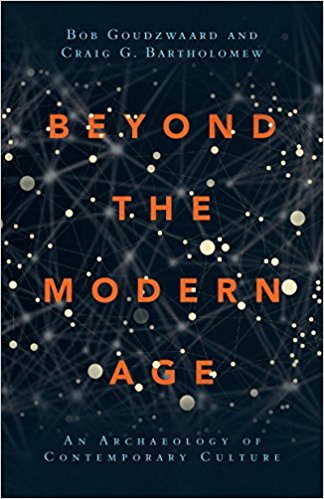 Beyond the Modern Age: An Archaeology of Contemporary Culture by Craig Bartholomew & Bob Goudzwaard (IVP Academic) $35.00 Our sale price $28.00
Beyond the Modern Age: An Archaeology of Contemporary Culture by Craig Bartholomew & Bob Goudzwaard (IVP Academic) $35.00 Our sale price $28.00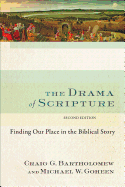
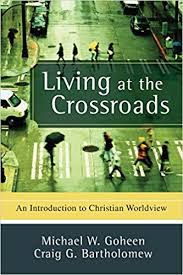

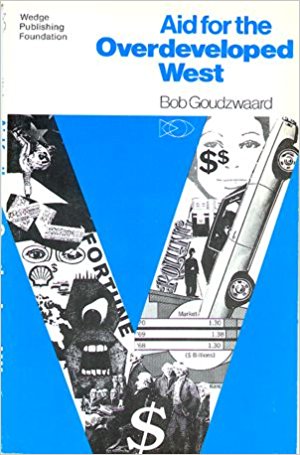 Koyzis and James Skillen) which left its mark in ways that to this day have kept me disenchanted with simple bipolar partisanship. And Goudzwaard’s wise, justice-oriented set of punchy essays Aid for the Overdeveloped West forever (along with Ron Sider’s Rich Christians in an Age of Hunger and Art Simon’s Bread for the World) influenced how I thought about structures and ideologies that shaped and moved our world’s economic arrangements and how such systems are never neutral, but informed by values and priorities that may indicate the presence of false gods and distorted ideologies. These two books reminded me that (just for instance) simple charity is inadequate to fight poverty and simple living and recycling isn’t enough to fight global environmental disasters.
Koyzis and James Skillen) which left its mark in ways that to this day have kept me disenchanted with simple bipolar partisanship. And Goudzwaard’s wise, justice-oriented set of punchy essays Aid for the Overdeveloped West forever (along with Ron Sider’s Rich Christians in an Age of Hunger and Art Simon’s Bread for the World) influenced how I thought about structures and ideologies that shaped and moved our world’s economic arrangements and how such systems are never neutral, but informed by values and priorities that may indicate the presence of false gods and distorted ideologies. These two books reminded me that (just for instance) simple charity is inadequate to fight poverty and simple living and recycling isn’t enough to fight global environmental disasters.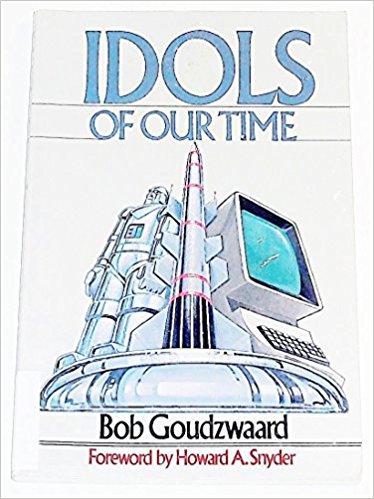 1984 IVP published a controversial and widely discussed book, a small paperback called Idols of Our Time with a forward by Howard Snyder. After its first publisher dropped it, for a while Dordt College Press kept it in print, until it became too outdated, in part due to its discussion of the nuclear arms race between the US and the USSR, the nature of which changed with the collapse of the Soviet Union in those years.) For what it is worth, I helped write one paragraph of that book – my friend Mark Vander Vennen was translating it from the Dutch and he needed a few lines about US arms manufacturers since Goudzwaard’s Dutch version cited European corporations and policies and data. That I helped with a few sentences of one page of Idols of Our Time remains one of the great privileges of my life.
1984 IVP published a controversial and widely discussed book, a small paperback called Idols of Our Time with a forward by Howard Snyder. After its first publisher dropped it, for a while Dordt College Press kept it in print, until it became too outdated, in part due to its discussion of the nuclear arms race between the US and the USSR, the nature of which changed with the collapse of the Soviet Union in those years.) For what it is worth, I helped write one paragraph of that book – my friend Mark Vander Vennen was translating it from the Dutch and he needed a few lines about US arms manufacturers since Goudzwaard’s Dutch version cited European corporations and policies and data. That I helped with a few sentences of one page of Idols of Our Time remains one of the great privileges of my life.
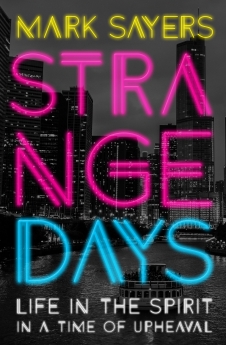 Strange Days: Life in the Spirit in a Time of Upheaval Mark Sayers (Moody Press) $13.99 Unlike the big Goudzwaard & Bartholomew book, this is casual, upbeat, easy to read, filled with personal anecdotes, and is pretty cool, even though it walks us through the unsettling days that are spinning so fast that things seem almost out of control. I respect Sayers, who is very informed by serious reading and deep considerations, but he has a way to communicate (especially younger, energetic readers) that really works. He has a wonderful book on consumerism and hyper-reality called The Trouble with Paris and another exploring the deeper sense of self in our glitzy culture called The Vertical Self. He wrote an insightful book called The Road Trip That Changed the World which is about Jack Kourac and his influential book On the Road. Sayers’s last book was called The Disappearing Church which should be read by anyone curious about the decline of church life in our contemporary culture. Anyway, this new book looks at global stuff a bit, speaks to concerns I know you have such as the fears of international terrorism and radical Islam, and the other forces that cause us to characterize our era as a time of upheaval. If you’ve never read any books about the fast-spinning modern times and the array of social changes that bring anxiety and confusion to most, this is a fine, very interesting book with which to start. He says he “writes from the future” but I think this strangeness is upon us now. I recommend it highly.
Strange Days: Life in the Spirit in a Time of Upheaval Mark Sayers (Moody Press) $13.99 Unlike the big Goudzwaard & Bartholomew book, this is casual, upbeat, easy to read, filled with personal anecdotes, and is pretty cool, even though it walks us through the unsettling days that are spinning so fast that things seem almost out of control. I respect Sayers, who is very informed by serious reading and deep considerations, but he has a way to communicate (especially younger, energetic readers) that really works. He has a wonderful book on consumerism and hyper-reality called The Trouble with Paris and another exploring the deeper sense of self in our glitzy culture called The Vertical Self. He wrote an insightful book called The Road Trip That Changed the World which is about Jack Kourac and his influential book On the Road. Sayers’s last book was called The Disappearing Church which should be read by anyone curious about the decline of church life in our contemporary culture. Anyway, this new book looks at global stuff a bit, speaks to concerns I know you have such as the fears of international terrorism and radical Islam, and the other forces that cause us to characterize our era as a time of upheaval. If you’ve never read any books about the fast-spinning modern times and the array of social changes that bring anxiety and confusion to most, this is a fine, very interesting book with which to start. He says he “writes from the future” but I think this strangeness is upon us now. I recommend it highly.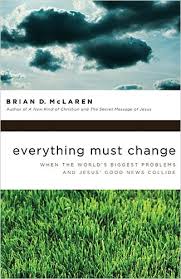 Everything Must Change: When the World’s Biggest Problems and Jesus’ Good News Collide Brian McLaren (Nelson) $14.99 Several years ago Bob Goudzwaard, Mark Vander Vennen, and David Van Heemst, wrote a deep and thoughtful book about the relationship of global poverty, degradation of the environment, and the threat of terrorism and war. It was called Hope for Troubled Times: A New Vision for Confronting Global Crisis and we still carry it and try to sell it to those interested in these global concerns. In a way, HFTT predicted the deeper work found in Beyond the Modern Age as it asked us to understand the faith-like/ideological engine that drives, the fuel that is spent, in the running of the modern world. What convictions and forces keep it going as it does? Can we see the interrelationship of our most pressing social problems and re-frame things in a healing and hopeful way? Well, Brian McLaren read that book and it moved him deeply and it stimulated his own thinking. Inspired by these three authors (which he playfully called the hopesters) he wrote his own version, which is, admittedly, more engaging and clever than Hope for Troubled Times. I really like this book and very highly recommend it.
Everything Must Change: When the World’s Biggest Problems and Jesus’ Good News Collide Brian McLaren (Nelson) $14.99 Several years ago Bob Goudzwaard, Mark Vander Vennen, and David Van Heemst, wrote a deep and thoughtful book about the relationship of global poverty, degradation of the environment, and the threat of terrorism and war. It was called Hope for Troubled Times: A New Vision for Confronting Global Crisis and we still carry it and try to sell it to those interested in these global concerns. In a way, HFTT predicted the deeper work found in Beyond the Modern Age as it asked us to understand the faith-like/ideological engine that drives, the fuel that is spent, in the running of the modern world. What convictions and forces keep it going as it does? Can we see the interrelationship of our most pressing social problems and re-frame things in a healing and hopeful way? Well, Brian McLaren read that book and it moved him deeply and it stimulated his own thinking. Inspired by these three authors (which he playfully called the hopesters) he wrote his own version, which is, admittedly, more engaging and clever than Hope for Troubled Times. I really like this book and very highly recommend it.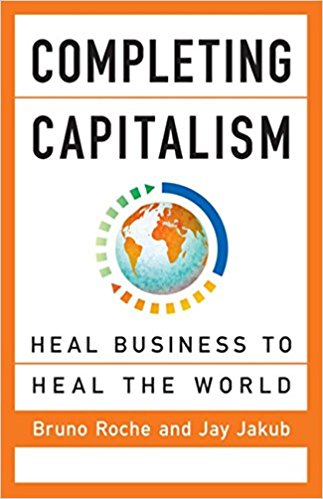 Completing Capitalism: Heal Business to Heal the World Bruno Roche and Jay Jakub (Berrett Koehler) $19.95 I am thrilled to tell you about this and hope to write more about it at BookNotes once I read it more carefully. Completing Capitalism just released and we couldn’t be more eager to have you know about it. Maybe the best way to introduce BookNotes readers to it is to remind you of some of the stories my friend Steve Garber tells in his extraordinary book Visions of Vocation about his work as a fellow on a team working with the Mars Corporation – yes, the family-owned candy company – helping them think through the world of work in that company, he character of modern day agriculture, the nature of business ethics, the vision that might underpin a new way of thinking about profit and corporate sustainability, the integral aspect of social responsibility of the corporation. These two authors – who are respected in high level economic circles, especially in Europe – have forged a manifesto of sorts that takes issue with a singular view of profit-making, insisting that the task and calling of a business, and the rubrics that measure its success, simply has to be about more than money-making. They are not the first or only economists calling for a more multi-dimensional definition of business success (they’ve read Bob Goudzwaard on this, I’m sure) but this book is nonetheless very significant, fleshing out, as it does, what this might look like, even in a corporation like Mars, Inc.
Completing Capitalism: Heal Business to Heal the World Bruno Roche and Jay Jakub (Berrett Koehler) $19.95 I am thrilled to tell you about this and hope to write more about it at BookNotes once I read it more carefully. Completing Capitalism just released and we couldn’t be more eager to have you know about it. Maybe the best way to introduce BookNotes readers to it is to remind you of some of the stories my friend Steve Garber tells in his extraordinary book Visions of Vocation about his work as a fellow on a team working with the Mars Corporation – yes, the family-owned candy company – helping them think through the world of work in that company, he character of modern day agriculture, the nature of business ethics, the vision that might underpin a new way of thinking about profit and corporate sustainability, the integral aspect of social responsibility of the corporation. These two authors – who are respected in high level economic circles, especially in Europe – have forged a manifesto of sorts that takes issue with a singular view of profit-making, insisting that the task and calling of a business, and the rubrics that measure its success, simply has to be about more than money-making. They are not the first or only economists calling for a more multi-dimensional definition of business success (they’ve read Bob Goudzwaard on this, I’m sure) but this book is nonetheless very significant, fleshing out, as it does, what this might look like, even in a corporation like Mars, Inc.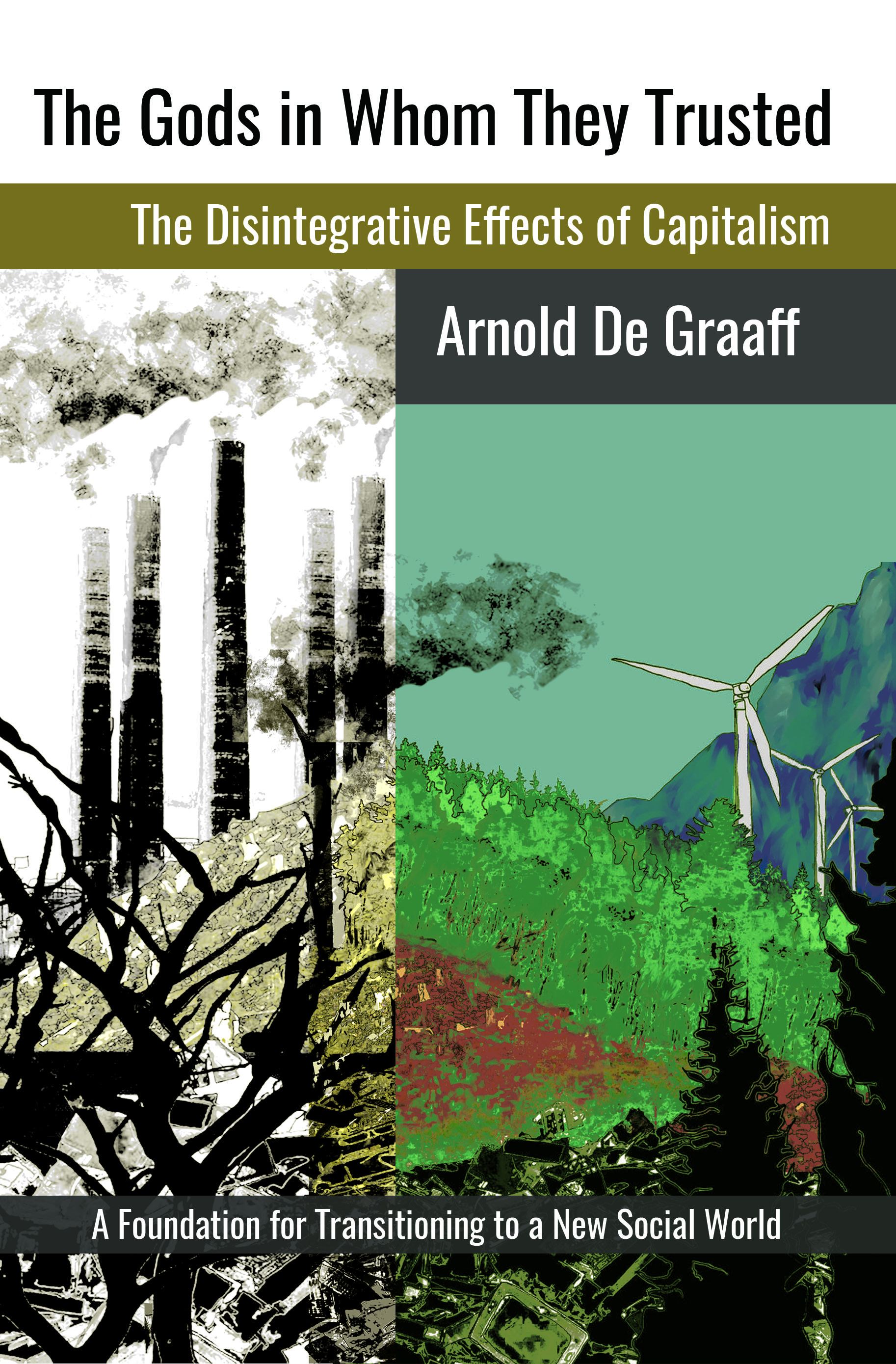 The Gods in Whom They Trusted: A Foundation for Transitioning to a New Social World Arnold De Graaff (Heathwood Press) $37.99 When I first met Goudzwaard in the 1970s he was doing some teaching at the heady grad school in Toronto called ICS, the Institute for Christian Studies. Arnold De Graaf taught there then and, along with James Olthius, brought philosophical anthropology to the interdisciplinary learning community until he left to become a therapist. Although De Graaf continues to work as a psychotherapist (perhaps because he works as a deep psychotherapist) he is very much aware of the deeper cultural forces that hurt us and here he studies in a deep and transformative radical way the social dysfunctions that lead to stuff like the destruction of our land, air, and seas, the global climate change crisis, and systemic violence built in to many of our ways of ordering life. This book is quite new, very thick (just over 900 pages) a project he’s worked on for years, apparently. In the acknowledgements he credits Lambert Zuidervaart’s Artistic Truth: Aesthetics, Discourse, and Imaginative Disclosure which is curious (and reminds me of Goudzwaard and Bartholomew’s fondness for Calvin Seerveld, Zuidervaart’s mentor.) Zuidervaart, by the way, has recently done his own scholarly book on how the study of philosophy might help evoke and social change; see his Religion, Truth, and Social Transformation: Essays in Reformational Philosophy.
The Gods in Whom They Trusted: A Foundation for Transitioning to a New Social World Arnold De Graaff (Heathwood Press) $37.99 When I first met Goudzwaard in the 1970s he was doing some teaching at the heady grad school in Toronto called ICS, the Institute for Christian Studies. Arnold De Graaf taught there then and, along with James Olthius, brought philosophical anthropology to the interdisciplinary learning community until he left to become a therapist. Although De Graaf continues to work as a psychotherapist (perhaps because he works as a deep psychotherapist) he is very much aware of the deeper cultural forces that hurt us and here he studies in a deep and transformative radical way the social dysfunctions that lead to stuff like the destruction of our land, air, and seas, the global climate change crisis, and systemic violence built in to many of our ways of ordering life. This book is quite new, very thick (just over 900 pages) a project he’s worked on for years, apparently. In the acknowledgements he credits Lambert Zuidervaart’s Artistic Truth: Aesthetics, Discourse, and Imaginative Disclosure which is curious (and reminds me of Goudzwaard and Bartholomew’s fondness for Calvin Seerveld, Zuidervaart’s mentor.) Zuidervaart, by the way, has recently done his own scholarly book on how the study of philosophy might help evoke and social change; see his Religion, Truth, and Social Transformation: Essays in Reformational Philosophy.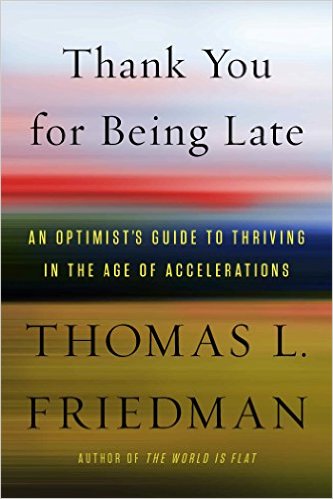 Thank You for Being Late: An Optimist’s Guide to Thriving in the Age of Accelerations Thomas L. Friedman (Farrar, Straus and Giroux) $28.00 Goudzwaard and Bartholomew are quick to suggest reading widely and, although as Christians we should be critical about answers that are too entwined with the very assumptions of Enlightenment rationalism and faith in progress that causes our most intractable global economic problems, it is still valuable to be aware of the world’s leading thinkers. There is no doubt that the often cited, award-winning New York Times columnist is one of these world-class leading thinkers. This is his new collection of pieces, a very engaging and important volume, especially because he is attuned to some of the oddly paradoxical forces of modernity that he describes as “an age of accelerations.” This is a provocative insight and I’d love to hear what Goudzwaard says of this angle. In part, Friedman is concerns about “reconstructing social ties so that people feel respected and welcomed.” This has gotten rave reviews from The Wall Street Journal, Kirkus Reviews, and The New York Times Book Review which said it was his “most ambitious book yet.” That reviewer said “after your session with Dr. Friedman, you have a much better idea of the forces that are upending your world, how they work together, and what people. companies, and governments can do to proser. You’ll have a coherent narrative for why the world is the way it is.” Well, I suspect he hasn’t yet read Beyond the Modern World so I’ll take that line with a grain of salt, but it sure indicates the sweeping and important nature of this recent best-seller. We’re glad to stock it here.
Thank You for Being Late: An Optimist’s Guide to Thriving in the Age of Accelerations Thomas L. Friedman (Farrar, Straus and Giroux) $28.00 Goudzwaard and Bartholomew are quick to suggest reading widely and, although as Christians we should be critical about answers that are too entwined with the very assumptions of Enlightenment rationalism and faith in progress that causes our most intractable global economic problems, it is still valuable to be aware of the world’s leading thinkers. There is no doubt that the often cited, award-winning New York Times columnist is one of these world-class leading thinkers. This is his new collection of pieces, a very engaging and important volume, especially because he is attuned to some of the oddly paradoxical forces of modernity that he describes as “an age of accelerations.” This is a provocative insight and I’d love to hear what Goudzwaard says of this angle. In part, Friedman is concerns about “reconstructing social ties so that people feel respected and welcomed.” This has gotten rave reviews from The Wall Street Journal, Kirkus Reviews, and The New York Times Book Review which said it was his “most ambitious book yet.” That reviewer said “after your session with Dr. Friedman, you have a much better idea of the forces that are upending your world, how they work together, and what people. companies, and governments can do to proser. You’ll have a coherent narrative for why the world is the way it is.” Well, I suspect he hasn’t yet read Beyond the Modern World so I’ll take that line with a grain of salt, but it sure indicates the sweeping and important nature of this recent best-seller. We’re glad to stock it here.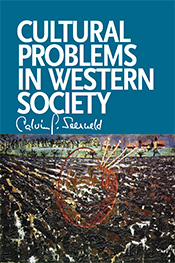 Cultural Problems in Western Society: Sundry Writings and Occasional Lectures Calvin Seerveld (Dordt College Press) $17.99 I did a long, breathy review of Seerveld’s stunning six-part collection of essays, lectures, sermons, papers, and articles, published as a series of “Sundry Writings and Occasional Lectures” when they first came out. Three are about the arts and philosophical aesthetics, one shows forth his remarkable writings about the Bible, and one is mostly about education and the writing of history. This one, Cultural Problems, introduced by Barbara Carvill, looks mostly at European conditions, and some of the essays are, in fact, about the role of artists within the political and economic situations in Europe. Some of these pieces actually cite his good friend Bob Goudzwaard and a few have great resonance with the vision found in Beyond the Modern Age: An Archeology of Contemporary Culture. Some of Seerveld’s dense and colorful chapters were first speeches given to the European Union and a few look at issues such as “Human Multiculturality” and gender justice, and another is on the development of cities which explores “cultural dialogue as a human resource for the integration of Europe.” If you are interested in how serious work on aesthetics and good art can play a healing, helpful role in a broken and injustice society, see another in this six part series of sundry writings, the volume entitled Redemptive Art in Society.
Cultural Problems in Western Society: Sundry Writings and Occasional Lectures Calvin Seerveld (Dordt College Press) $17.99 I did a long, breathy review of Seerveld’s stunning six-part collection of essays, lectures, sermons, papers, and articles, published as a series of “Sundry Writings and Occasional Lectures” when they first came out. Three are about the arts and philosophical aesthetics, one shows forth his remarkable writings about the Bible, and one is mostly about education and the writing of history. This one, Cultural Problems, introduced by Barbara Carvill, looks mostly at European conditions, and some of the essays are, in fact, about the role of artists within the political and economic situations in Europe. Some of these pieces actually cite his good friend Bob Goudzwaard and a few have great resonance with the vision found in Beyond the Modern Age: An Archeology of Contemporary Culture. Some of Seerveld’s dense and colorful chapters were first speeches given to the European Union and a few look at issues such as “Human Multiculturality” and gender justice, and another is on the development of cities which explores “cultural dialogue as a human resource for the integration of Europe.” If you are interested in how serious work on aesthetics and good art can play a healing, helpful role in a broken and injustice society, see another in this six part series of sundry writings, the volume entitled Redemptive Art in Society. 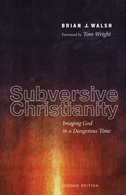 Subversive Christianity: Imaging God in a Dangerous Time Brian J. Walsh (Wipf & Stock) $15.00 When this was re-issued a few years back with a serious new chapter I did a pretty extensive description in BookNotes, and I started it off noting that Brian was friends with Dutch economist Bob Goudzwaard. Which makes me naturally want to list it here, now.
Subversive Christianity: Imaging God in a Dangerous Time Brian J. Walsh (Wipf & Stock) $15.00 When this was re-issued a few years back with a serious new chapter I did a pretty extensive description in BookNotes, and I started it off noting that Brian was friends with Dutch economist Bob Goudzwaard. Which makes me naturally want to list it here, now.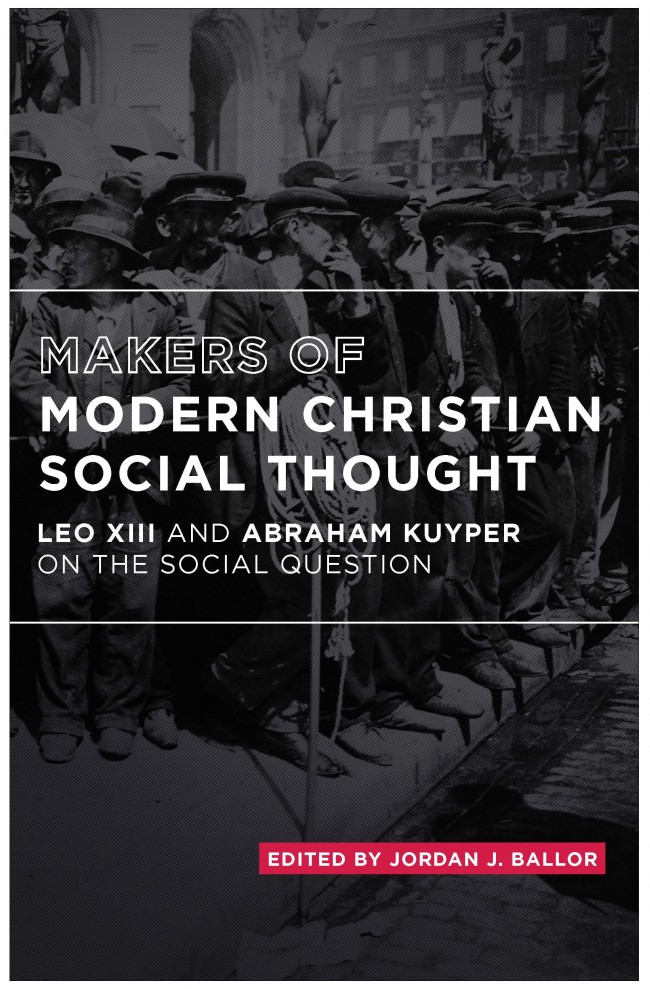 Makers of Modern Christian Social Thought: Leo XIII and Abraham Kuyper on the Social Question Jordan J. Ballor (Acton Institute) $14.95 In my above reflection on how Goudzwaard and Bartholomew draw on so many old (as well as recent) cultural critics I mentioned that they draw on both Kuyper and Pope Leo XIII. Both deserve more credit and discussion then this review allows, and I’m sure both Bartholomew and Goudzwaard would agree that in many ways there are overlapping themes among these two intellectual giants of the late 1800s. Even as the Industrial Revolution was being exposed as a very mixed blessing and danger (with oppression of the working classes, child labor, severe working conditions, and the like) Karl Marx cried out. But his was not the only voice raised against the excesses of unrestrained capitalism, and many Christians talked about “the social question.” In the year of 1891 Pope Leo developed key insights from the Roman Catholic tradition (most powerfully seen in his encyclical Rerum Novarum) and Abraham Kuyper gave his passionate speech “Christianity and the Class Struggle” to The Christian Social Congress. (That Kuyper book has more recently been released under the name The Problem of Poverty.) Ballor (with a PhD from the University of Zurich) knows much about the history of thinking about markets and such, and in this small, meaty paperback he provides a good overview of both of these seminal thinkers as they shaped some consensus between Catholics and Calvinists about the nature of a nuanced, gospel-informed vision of social theory and has a large excerpt of each of the two men’s writings. Ballor’s introductions are very helpful and the primary source material is vital. Very highly recommended.
Makers of Modern Christian Social Thought: Leo XIII and Abraham Kuyper on the Social Question Jordan J. Ballor (Acton Institute) $14.95 In my above reflection on how Goudzwaard and Bartholomew draw on so many old (as well as recent) cultural critics I mentioned that they draw on both Kuyper and Pope Leo XIII. Both deserve more credit and discussion then this review allows, and I’m sure both Bartholomew and Goudzwaard would agree that in many ways there are overlapping themes among these two intellectual giants of the late 1800s. Even as the Industrial Revolution was being exposed as a very mixed blessing and danger (with oppression of the working classes, child labor, severe working conditions, and the like) Karl Marx cried out. But his was not the only voice raised against the excesses of unrestrained capitalism, and many Christians talked about “the social question.” In the year of 1891 Pope Leo developed key insights from the Roman Catholic tradition (most powerfully seen in his encyclical Rerum Novarum) and Abraham Kuyper gave his passionate speech “Christianity and the Class Struggle” to The Christian Social Congress. (That Kuyper book has more recently been released under the name The Problem of Poverty.) Ballor (with a PhD from the University of Zurich) knows much about the history of thinking about markets and such, and in this small, meaty paperback he provides a good overview of both of these seminal thinkers as they shaped some consensus between Catholics and Calvinists about the nature of a nuanced, gospel-informed vision of social theory and has a large excerpt of each of the two men’s writings. Ballor’s introductions are very helpful and the primary source material is vital. Very highly recommended.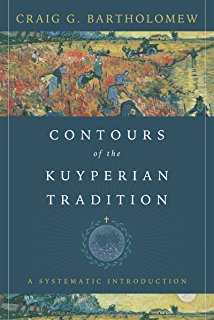 Contours of the Kuyperian Tradition: A Systematic Introduction Craig Bartholomew (IVP Academic) $40.00 I would be remiss not to mention this recent, magisterial, definitive treatment of the theological and social tradition of the great Dutch Reformed thinker and leader, Abraham Kuyper. He was a remarkable figure in the early 1900s and it is significant that Goudzwaard worked within a modern version of Kuyper’s AR political party. There is nothing like this book and it serves as an excellent background book to understand why Bartholomew and Goudzwaard think as they do in Beyond the Modern Age. Some of their insight clearly is in the line of this great Dutch statesman and critic of the French Revolution and although they are exceptionally ecumenical, this reveals their deepest theological tradition. Apart of influence some of this has on Beyond the Modern Age, Contours of the Kuyperian Tradition is certainly one of the most important theological books of the year and should be on the reading list of certainly any Reformed thinkers, and I’d say nearly anyone interested in contemporary theological trends.
Contours of the Kuyperian Tradition: A Systematic Introduction Craig Bartholomew (IVP Academic) $40.00 I would be remiss not to mention this recent, magisterial, definitive treatment of the theological and social tradition of the great Dutch Reformed thinker and leader, Abraham Kuyper. He was a remarkable figure in the early 1900s and it is significant that Goudzwaard worked within a modern version of Kuyper’s AR political party. There is nothing like this book and it serves as an excellent background book to understand why Bartholomew and Goudzwaard think as they do in Beyond the Modern Age. Some of their insight clearly is in the line of this great Dutch statesman and critic of the French Revolution and although they are exceptionally ecumenical, this reveals their deepest theological tradition. Apart of influence some of this has on Beyond the Modern Age, Contours of the Kuyperian Tradition is certainly one of the most important theological books of the year and should be on the reading list of certainly any Reformed thinkers, and I’d say nearly anyone interested in contemporary theological trends.